
ERDENE SANT, CENTRAL MONGOLIA: A wild Saker Falcon mother and her chicks in a nest high over the steppe of Central Mongolia. The Saker falcon is the only species in the genus Falco with an endangered listing in the IUCN red list, because a population trend analysis has indicated that it may be undergoing a very rapid decline, particularly in Central Asia, with unsustainable capture for the falcon trade considered to be one of the causal factors. Electrocution via power lines is a larger issue, killing millions of birds annually, including an estimated 1000 Saker falcons every year.

BAYAN, CENTRAL MONGOLIA, MAY 2017: Batbayar Bold, a member of the Mongolian Wildlife Science and Conservation Center, examines artificial nests for the Saker Falcon in the steppe of Central Mongolia. Bayaraa checks the chicks individually, looks at their wings, weighs them and records their numbers and growth rates. The Mongolians have created over 5000 artificial nest sites in areas without naturally occurring nests or trees. In Mongolia, the globally endangered Saker falcon is harvested from the wild for the international falconry trade, yet little is known about the implications of this harvest for the conservation of the species. The use of artificial nests is a well-established conservation technique, which can be used to increase the size and distribution of breeding bird populations that are limited by the availability of natural nesting sites. Saker Falcons do not build their own nest but take over nests built by other birds. In nest site limited habitats the artificial nest projects create the potential to create a managed and easily monitored population in, which supports a sustainable harvest. Furthermore, artificial nests could contribute to the control of rodent pest species in the steppe ecosystem by increasing predator densities and predation rates. The Saker falcon is the only species in the genus Falco with an endangered listing in the IUCN red list, because a population trend analysis has indicated that it may be undergoing a very rapid decline, particularly in Central Asia, with unsustainable capture for the falcon trade considered to be one of the causal factors. Electrocution via power lines is a larger issue. The Mongolian government has permitted an annual harvest quota of Saker falcons for the Arabian falconry market, with this trade being conducted under the auspices of the Convention on International Trade in Endangered Species (CITES). Falconry is an important aspect of regional cultural heritage in the Arabian Gulf, with the use of wild S

BAYAN, CENTRAL MONGOLIA, MAY 2017: Batbayar Bold, a member of the Mongolian Wildlife Science and Conservation Center, examines artificial nests for the Saker Falcon in the steppe of Central Mongolia. He speaks with local Mongol nomads who live close to this particular nest about the work he is doing, they expressed their appreciation to him. Bayaraa checks the chicks individually, looks at their wings, weighs them and records their numbers and growth rates. The Mongolians have created over 5000 artificial nest sites in areas without naturally occurring nests or trees. In Mongolia, the globally endangered Saker falcon is harvested from the wild for the international falconry trade, yet little is known about the implications of this harvest for the conservation of the species. The use of artificial nests is a well-established conservation technique, which can be used to increase the size and distribution of breeding bird populations that are limited by the availability of natural nesting sites. Saker Falcons do not build their own nest but take over nests built by other birds. In nest site limited habitats the artificial nest projects create the potential to create a managed and easily monitored population in, which supports a sustainable harvest. Furthermore, artificial nests could contribute to the control of rodent pest species in the steppe ecosystem by increasing predator densities and predation rates. The Saker falcon is the only species in the genus Falco with an endangered listing in the IUCN red list, because a population trend analysis has indicated that it may be undergoing a very rapid decline, particularly in Central Asia, with unsustainable capture for the falcon trade considered to be one of the causal factors. Electrocution via power lines is a larger issue. The Mongolian government has permitted an annual harvest quota of Saker falcons for the Arabian falconry market, with this trade being conducted under the auspices of the Convention on Internationa

ERDENE SANT, CENTRAL MONGOLIA, 21 MAY 2017: Boldbaatar Batjargal is a Mongolian master falconer. He is seen with an injured chick that comes from a nest where Boldbaatar has imprinted himself on the mother and tamed her. He noticed that the chick has a deformed foot that had become wrapped up in some material inside the nest. This caused the foot to grow badly and he is concerned for the chick’s survival. Boldbaatar plans to hand raise this chick and see if he can heal the foot so that this bird will be able to hunt independently. He has been a falconer for 15 years, working with these rare birds since 2002. He is seen with his current Saker Falcon, a bird he will release into the wild again when the season ends. Today he is well known as one of the country’s master falconer’s working with Saker and Gyr falcons. He first saw Pakistani’s capturing wild falcon in 2002 and work with the birds. He found that fascinating and when he found an injured Saker that had been clawed by an eagle, he healed the injured bird and developed a relationship with the falcon. That bird was stolen from him but by then he had developed a keen sense of the history of falconry and it’s role for the Mongols. Ghingis Khan was said to have over 500 falconers in his army. Boldbaatar sees it as a way to reconnect to the past and the present at the same time. Boldbaatar sees falconing as being part of a great tradition, thereby connecting to his Mongol ancestors. “Mongolia was oppressed for a long time in our history, we almost abandoned falconry. This is a way for me to reconnect to our past Mongol traditions. “ Boldbaatar is well known for his ability to connect to Saker and Gyr falcons, imprinting on them quickly and forming a relationship with a wild bird within a couple of days. (Photo by Brent Stirton/Verbatim for National Geographic magazine.)

ERDENE SANT, CENTRAL MONGOLIA, 22 MAY 2017: Boldbaatar Batjargal is a Mongolian master falconer. He has been a falconer for 15 years, working with these rare birds since 2002. He is seen with his current Saker Falcon, a bird he will release into the wild again when the season ends. Today he is well known as one of the country’s master falconer’s working with Saker and Gyr falcons. He first saw Pakistani’s capturing wild falcon in 2002 and work with the birds. He found that fascinating and when he found an injured Saker that had been clawed by an eagle, he healed the injured bird and developed a relationship with the falcon. That bird was stolen from him but by then he had developed a keen sense of the history of falconry and it’s role for the Mongols. Ghingis Khan was said to have over 500 falconers in his army. Boldbaatar sees it as a way to reconnect to the past and the present at the same time. Boldbaatar sees falconing as being part of a great tradition, thereby connecting to his Mongol ancestors. “Mongolia was oppressed for a long time in our history, we almost abandoned falconry. This is a way for me to reconnect to our past Mongol traditions. “ Boldbaatar is well known for his ability to connect to Saker and Gyr falcons, imprinting on them quickly and forming a relationship with a wild bird within a couple of days. (Photo by Brent Stirton/Verbatim for National Geographic magazine.)

BAYAN, CENTRAL MONGOLIA, 22 MAY 2017: Batbayar Bold, a member of the Mongolian Wildlife Science and Conservation Center, records electrocuted Saker falcons along a single 15 KW distribution power line between Bayan and Galmut in Western Mongolia. A study was conducted on this line for the period of one year. Over 300 endangered Saker falcons were killed by electrocution as well as many other raptors. In a one-year study of this line alone, over 300 Saker falcons died due to electrocution. Mongolia has over 4000 kilometers of power-lines, many of them unsafe. Globally millions of birds are killed this way. Avian electrocution at power lines is a well-documented phenomenon, yet factors influencing the frequency of electrocution events and the efficacy of mitigation techniques remain relatively under-reported. Electrocution frequency at line poles was associated with density of small mammal holes and the deployment of mitigation measures. It is likely that local prey abundance influences the frequency of birds of prey perching on power poles, which is consequently reflected in electrocution rate. This study evaluated the efficacy of mitigation measures and found that the use of perch deflector spikes on the cross arms of line poles reduced electrocution rates when 3 or 4 spikes were deployed. Perch deflectors probably worked by reducing the opportunity for birds to perch adjacent to pin insulators rather than by reducing the frequency of birds perching on the cross arm per se. At anchor poles, reconfiguration of jump wires at two phases, so they passed under the cross arm rather than over, significantly reduced electrocution rates. These mitigation measures potentially represent a relatively inexpensive method to reduce the frequency of raptor electrocution events in regions where cost is a key factor for power line managers in determining whether or not any form of mitigation is used. (PHOTO BY BRENT STIRTON/VERBATIM FOR NATIONAL GEOGRAPHIC MAGAZINE.)

ULAANBAATAR, MONGOLIA, 27 MAY 2017: An image of over 280 Saker falcons electrocuted on powerlines covering only a small 55 kilometer study area. These falcons were collected in a study conducted over one year by Mongolia's Wildlife Science and Conservation Center, Batbayar Bold, one of their biologists is seen laying out the falcons. There are over 4000 kilometers of powerlines in Mongolia, estimated to have killed over 5,000 Saker's alone in the last 5 years. Powerlines globally kill millions of raptors every year, this is due to a design defect which electrocutes birds when they touch the live wires. Mongolia's Wildlife Science and Conservation institute is attempting to convince power companies and government to implement design changes in an effort to curb the killing. Mongolia's government sells falcons to the Arabs of the UAE, long time falconer's for whom falconing is the sport of kings. The UAE helps to fund the research on powerlines and artificial nesting in Mongolia. (Photo by Brent Stirton/Verbatim for National Geographic Magazine.)

ELGIN, SCOTLAND, 11 JUNE 2017: Howard Waller is one of the world’s premier Falcon breeders. He is seen inside the cage of a male Gyr Falcon who he has imprinted. The male views Howard as a mate and when it is mating season, this bird will fly onto the hat Howard is wearing and ejaculate. Howard will collect the semen and use it for artificial inseminisation. He breeds exclusively for Sheikh Butti in Dubai. Howard sees captive breeding of elite falcons as the best means to stop wild trapping. In recent years there has been a dramatic fall off in wild bird trafficking to the UAW, this is due to the high mortality rate, uncertainty over the health and dna of the bird and its hunting pedigree, the availability of superior captive bred hunting falcons of a superior hybrid pedigree. Howard is a Rhodesian by birth that was forced to flee the country when Mugabe came to power due to his military service. He moved to South Africa where he ran an adventure school and bred falcons in an amateur capacity. Through a contact in the Falconry world, he met Sheikh Butti, a senior member of the Royal family of Dubai and a prominent man in the UAE. Sheikh Butti is a falcon connoisseur, a descendant of thousands of years of men who worked with falcons in the “sport of kings.” The Arab world is a place where Falconry has long been considered a sacred sport; the Sheikh was one of these believers. Sheik Butti was looking for someone who could work for him breeding elite falcons in Dubai and he decided to give Howard a chance. Working out of a small quarters on the Sheikh’s farm for two years on nothing but a handshake and a small compensation package, Howard’s diligence and superior knowledge soon yielded successes that had eluded the Sheikh under lesser breeders. He build his original DNA base out of wounded and confiscated falcons brought in illegally into Dubai. This diligence and success led to great confidence and a deepening relationship between these two men and when Howa

ELGIN, SCOTLAND, 9 JUNE 2017: Howard Waller feeds young Gyr/Peregrine falcon chicks wiht quail meat 4 times daily. During this process Howard will often bring his face very close to the chicks and make the noises that an adult female would make. The feeding and the noises all make the chicks view Howard as their parent and increase their bond with him. This is a key part to imprinting the chicks on him. Howard Waller is one of the world’s premier Falcon breeders. He breeds exclusively for Sheikh Butti in Dubai. Howard sees captive breeding of elite falcons as the best means to stop wild trapping. In recent years there has been a dramatic fall off in wild bird trafficking to the UAW, this is due to the high mortality rate, uncertainty over the health and dna of the bird and its hunting pedigree, the availability of superior captive bred hunting falcons of a superior hybrid pedigree. Howard is a Rhodesian by birth that was forced to flee the country when Mugabe came to power due to his military service. He moved to South Africa where he ran an adventure school and bred falcons in an amateur capacity. Through a contact in the Falconry world, he met Sheikh Butti, a senior member of the Royal family of Dubai and a prominent man in the UAE. Sheikh Butti is a falcon connoisseur, a descendant of thousands of years of men who worked with falcons in the “sport of kings.” The Arab world is a place where Falconry has long been considered a sacred sport; the Sheikh was one of these believers. Sheik Butti was looking for someone who could work for him breeding elite falcons in Dubai and he decided to give Howard a chance. Working out of a small quarters on the Sheikh’s farm for two years on nothing but a handshake and a small compensation package, Howard’s diligence and superior knowledge soon yielded successes that had eluded the Sheikh under lesser breeders. He build his original DNA base out of wounded and confiscated falcons brought in illegally into Dubai. This dil

ELGIN, SCOTLAND, 8 JUNE 2017: Young falcons are placed in a Hacking Box on breeder Howard Waller's property. This is a box placed on the moor out of sight of human contact. The young birds who have previously know a lot of human contact are now rewilded throught this process where they will experience a minimum of human contact. The birds wear transmitters and are kept up here for up to 5 weeks. During that time, they will learn to fly and identify prey and become used to living in the wild by themselves. Howard Waller is one of the world’s premier Falcon breeders. He breeds exclusively for Sheikh Butti in Dubai. Howard sees captive breeding of elite falcons as the best means to stop wild trapping. In recent years there has been a dramatic fall off in wild bird trafficking to the UAW, this is due to the high mortality rate, uncertainty over the health and dna of the bird and its hunting pedigree, the availability of superior captive bred hunting falcons of a superior hybrid pedigree. Howard is a Rhodesian by birth that was forced to flee the country when Mugabe came to power due to his military service. He moved to South Africa where he ran an adventure school and bred falcons in an amateur capacity. Through a contact in the Falconry world, he met Sheikh Butti, a senior member of the Royal family of Dubai and a prominent man in the UAE. Sheikh Butti is a falcon connoisseur, a descendant of thousands of years of men who worked with falcons in the “sport of kings.” The Arab world is a place where Falconry has long been considered a sacred sport; the Sheikh was one of these believers. Sheik Butti was looking for someone who could work for him breeding elite falcons in Dubai and he decided to give Howard a chance. Working out of a small quarters on the Sheikh’s farm for two years on nothing but a handshake and a small compensation package, Howard’s diligence and superior knowledge soon yielded successes that had eluded the Sheikh under lesser breeders. He buil

ELGIN, SCOTLAND, 8 JUNE 2017: Young falcons are placed in a Hacking Box on breeder Howard Waller's property. This is a box placed on the moor out of sight of human contact. The young birds who have previously know a lot of human contact are now rewilded throught this process where they will experience a minimum of human contact. The birds wear transmitters and are kept up here for up to 5 weeks. During that time, they will learn to fly and identify prey and become used to living in the wild by themselves. Howard Waller is one of the world’s premier Falcon breeders. He breeds exclusively for Sheikh Butti in Dubai. Howard sees captive breeding of elite falcons as the best means to stop wild trapping. In recent years there has been a dramatic fall off in wild bird trafficking to the UAW, this is due to the high mortality rate, uncertainty over the health and dna of the bird and its hunting pedigree, the availability of superior captive bred hunting falcons of a superior hybrid pedigree. Howard is a Rhodesian by birth that was forced to flee the country when Mugabe came to power due to his military service. He moved to South Africa where he ran an adventure school and bred falcons in an amateur capacity. Through a contact in the Falconry world, he met Sheikh Butti, a senior member of the Royal family of Dubai and a prominent man in the UAE. Sheikh Butti is a falcon connoisseur, a descendant of thousands of years of men who worked with falcons in the “sport of kings.” The Arab world is a place where Falconry has long been considered a sacred sport; the Sheikh was one of these believers. Sheik Butti was looking for someone who could work for him breeding elite falcons in Dubai and he decided to give Howard a chance. Working out of a small quarters on the Sheikh’s farm for two years on nothing but a handshake and a small compensation package, Howard’s diligence and superior knowledge soon yielded successes that had eluded the Sheikh under lesser breeders. He buil

ELGIN, SCOTLAND, 10 JUNE 2017: Howard Waller and his daughter Jennifer take young falcons out onto the moor on their Scottish property and prepar them for a Hacking Box. These are imprinted birds used to a human presence but they will go to Dubai where they will be trained to hunt. It is necessary to place these birds in the wild for a period before they go to Dubai. This is where they will learn to fly, learn to operate in a wild space without humans and learn to see other birds, including prey species, in the wild. The birds will be taken out intially for the day and then returned to Howard's home which they see as a nest. Eventually they will be left out in the hacking box for up to five weeks. Howard Waller is one of the world’s premier Falcon breeders. He breeds exclusively for Sheikh Butti in Dubai. Howard sees captive breeding of elite falcons as the best means to stop wild trapping. In recent years there has been a dramatic fall off in wild bird trafficking to the UAW, this is due to the high mortality rate, uncertainty over the health and dna of the bird and its hunting pedigree, the availability of superior captive bred hunting falcons of a superior hybrid pedigree. Howard is a Rhodesian by birth that was forced to flee the country when Mugabe came to power due to his military service. He moved to South Africa where he ran an adventure school and bred falcons in an amateur capacity. Through a contact in the Falconry world, he met Sheikh Butti, a senior member of the Royal family of Dubai and a prominent man in the UAE. Sheikh Butti is a falcon connoisseur, a descendant of thousands of years of men who worked with falcons in the “sport of kings.” The Arab world is a place where Falconry has long been considered a sacred sport; the Sheikh was one of these believers. Sheik Butti was looking for someone who could work for him breeding elite falcons in Dubai and he decided to give Howard a chance. Working out of a small quarters on the Sheikh’s farm for

DUBAI, UAE, 18 OCTOBER 2018: Howard Waller, master falcon breeder for Dubai’s Sheik Butti Al Maktoum, captures falcons in their cages at the Sheiks palace in order to prepare them for transport to Scotland where his breeding facility is located. Howard and Sheik Butti carefuly work out successful breeding lines and which birds will be used for breeding and which will be used for hunting. Howard Waller is one of the world’s premier Falcon breeders. He is a Rhodesean by birth that was forced to flee the country when Mugabe came to power due to his military service. He moved to South Africa where he ran an adventure school and bred falcons in an amateur capacity. Through a contact in the Falconry world, he met Sheikh Butti, a senior member of the Royal family of Dubai and a prominent man in the UAE. Sheikh Butti is a falcon connoseur, a descendant of thousands of years of men who worked with falcons in the “sport of kings.” The Arab world is a place where Falconry has long been considered a sacred sport, the Sheikh was one of these believers. Sheik Butti was looking for someone who could work for him breeding elite falcons in Dubai and he decided to give Howard a chance. Working out of a small quarters on the Sheikh’s farm for two years on nothing but a handshake and a small compensation package, Howard’s diligence and superior knowledge soon yielded successes that had eluded the Sheikh under lesser breeders. This led to great confidence and a deepening relationship between these two men and when Howard felt that he could no longer make sufficient progress with the birds in the hot and limited climate of the Dubai, Sheikh Butti requested that Howard think of what would be an ideal set up for him to continue his breeding and research operation. After some time Howard chose a location in the highlands of Scotland, not far from Inverness. This location offered him a perfect combination of cold climate for the birds, a peaceful location in which to do his work

DUBAI, UAE, 18 OCTOBER 2018: Howard Waller attempts to resuscitate a young falcon he has bred from birth. The resuscitation was unsuccessful and the falcon died. Howard was attempting to tranquilize the bird for DNA swabbing for transport to Scotland for breeding purposes. The falcon has too much water in its system and its lungs collapsed, the water was supposed to have been removed the day before from all cages but was not done in the case of this particular bird. Howard Waller is one of the world’s premier Falcon breeders. He is a Rhodesean by birth that was forced to flee the country when Mugabe came to power due to his military service. He moved to South Africa where he ran an adventure school and bred falcons in an amateur capacity. Through a contact in the Falconry world, he met Sheikh Butti, a senior member of the Royal family of Dubai and a prominent man in the UAE. Sheikh Butti is a falcon connoseur, a descendant of thousands of years of men who worked with falcons in the “sport of kings.” The Arab world is a place where Falconry has long been considered a sacred sport, the Sheikh was one of these believers. Sheik Butti was looking for someone who could work for him breeding elite falcons in Dubai and he decided to give Howard a chance. Working out of a small quarters on the Sheikh’s farm for two years on nothing but a handshake and a small compensation package, Howard’s diligence and superior knowledge soon yielded successes that had eluded the Sheikh under lesser breeders. This led to great confidence and a deepening relationship between these two men and when Howard felt that he could no longer make sufficient progress with the birds in the hot and limited climate of the Dubai, Sheikh Butti requested that Howard think of what would be an ideal set up for him to continue his breeding and research operation. After some time Howard chose a location in the highlands of Scotland, not far from Inverness. This location offered him a perfect combinati

DUBAI, UAE, SEPTEMBER 17, 2017: Sheikh Butti Maktoum Bin Juma, a senior member of the Dubai Royal family, trains his falcons in the desert outside Dubai. These are some of his housing facilities for the birds, air-conditioned indoor arenas. Most birds used in modern day arabian falconry come from colder climates and so are housed this way. They are also only flown very early in the morning or late in the evening. The Sheikh begins before dawn during the season, using multiple techniques to train the falcons to peak condition for hunting. He is preparing them for a falcon hunt in Uzbekistan where he will hunt alongside other members of the Royal family in a tradition that goes back millennia in the Arab world. His son’s Maktoum and Rashid are talented falconers who share his passion for the hunt; they accompany the Sheikh in his training sessions. Training consists of multiple techniques where lures are used in multiple manifestations. Hand lures, lures on ropes, lures towed behind radio -controlled airplanes. Live prey is also used to accustom the birds to killing and build a blood lust. These are typically released and the falcons must hunt them out of the sky. Quails, ducks and finally, the prey of choice, Houbara Bustards, are used to train the falcons. All of these prey species are bred in the region and in the international hunting areas specifically for this purpose. In the UAE, where a huge amount of progress has occurred at an accelerated rate over the last 60 years, falconry is seen as a link back to the past and to the ancient culture of the Bedouin. Falcons were used for centuries for hunting food and the Arabs have a long association with falcons. Nowadays it is the sport of choice across the Arab world. Twenty years ago, most of the birds used were from wild capture, a fact that meant falcons were taken from the wild and subjected to long and dangerous journeys from as far away as Siberia and Mongolia. Many did not survive and those that did often ar

DUBAI, UAE, SEPTEMBER 17, 2017: Sheikh Butti Maktoum Bin Juma, a senior member of the Dubai Royal family, trains his falcons in the desert outside Dubai. These are some of his housing facilities for the birds, both air-conditioned indoor and outdoor arenas.The Sheikh begins before dawn during the season, using multiple techniques to train the falcons to peak condition for hunting. He is preparing them for a falcon hunt in Uzbekistan where he will hunt alongside other members of the Royal family in a tradition that goes back millennia in the Arab world. His son’s Maktoum and Rashid are talented falconers who share his passion for the hunt; they accompany the Sheikh in his training sessions. Training consists of multiple techniques where lures are used in multiple manifestations. Hand lures, lures on ropes, lures towed behind radio -controlled airplanes. Live prey is also used to accustom the birds to killing and build a blood lust. These are typically released and the falcons must hunt them out of the sky. Quails, ducks and finally, the prey of choice, Houbara Bustards, are used to train the falcons. All of these prey species are bred in the region and in the international hunting areas specifically for this purpose. In the UAE, where a huge amount of progress has occurred at an accelerated rate over the last 60 years, falconry is seen as a link back to the past and to the ancient culture of the Bedouin. Falcons were used for centuries for hunting food and the Arabs have a long association with falcons. Nowadays it is the sport of choice across the Arab world. Twenty years ago, most of the birds used were from wild capture, a fact that meant falcons were taken from the wild and subjected to long and dangerous journeys from as far away as Siberia and Mongolia. Many did not survive and those that did often arrived sick and in poor condition. Most of those falcons also came from colder climates and did not survive the heat of the desert region. These days, the vast ma

DUBAI, UAE, SEPTEMBER 24, 2017: Sheikh Butti Maktoum Bin Juma, a senior member of the Dubai Royal family, is seen inside the foyer of his home in Dubai. He is holding his favourite Gyr Falcon and is surrounded by other high end falcons that were bred especially for him. The mural behind him depicts his sons Rashid and Maktoum in the desert with falcons. Sheikh Butti is the first UAE falconer and likely the first Arab to ever train and hunt with a captive bred bird, a Gyr falcon that became famous across the region twenty years ago. He altered perception about what was possible with captive breeding and the performance of his falcons helped to win the argument for the superiority of captive-bred hybrids and purebred falcons. There has been a careful refining of genetics by master breeders like Howard Waller who have created a whole new class of falcons that have become the birds of choice in the Emirates. They are housed in special air-conditioned facilities where they can resist the high temperatures of the desert. Most training for hunts and racing is done in the very early morning, when temperatures are low and the birds won’t suffer heat exhaustion. The birds travel in air-conditioned vehicles with special perches to and from the training grounds. The higher echelons of the UAE falconers literally spend millions of dollars on housing, training and caring for their falcons. There are a number of falcon hospitals across the UAE that cater exclusively to the welfare of these birds. Expert international veterinarians staff these hospitals and birds are cared for at the same level as people. Falcons were severely threatened 50 years ago by the advent of chemicals like DDT, the Arab world has been at the forefront of restoring falcon populations and it is the Arab world that is the epicenter for breeding and the largest client for these birds. This resurgence has elevated Falconry to Intangible Heritage status by Unesco. (Photo by Brent Stirton/Verbatim for National

DUBAI, UAE, OCTOBER 20, 2018: Sheikh Butti Maktoum Bin Juma, a senior member of the Dubai Royal family, is greeted by his son Rashid as he trains his falcons in the desert outside Dubai. The Sheikh begins before dawn during the season, using multiple techniques to train the falcons to peak condition for hunting. He is preparing them for a falcon hunt in Uzbekistan where he will hunt alongside other members of the Royal family in a tradition that goes back millennia in the Arab world. His son’s Maktoum and Rashid are talented falconers who share his passion for the hunt; they accompany the Sheikh in his training sessions. Training consists of multiple techniques where lures are used in multiple manifestations. Hand lures, lures on ropes, lures towed behind radio -controlled airplanes. Live prey is also used to accustom the birds to killing and build a blood lust. These are typically released and the falcons must hunt them out of the sky. Quails, ducks and finally, the prey of choice, Houbara Bustards, are used to train the falcons. All of these prey species are bred in the region and in the international hunting areas specifically for this purpose. In the UAE, where a huge amount of progress has occurred at an accelerated rate over the last 60 years, falconry is seen as a link back to the past and to the ancient culture of the Bedouin. Falcons were used for centuries for hunting food and the Arabs have a long association with falcons. Nowadays it is the sport of choice across the Arab world. Twenty years ago, most of the birds used were from wild capture, a fact that meant falcons were taken from the wild and subjected to long and dangerous journeys from as far away as Siberia and Mongolia. Many did not survive and those that did often arrived sick and in poor condition. Most of those falcons also came from colder climates and did not survive the heat of the desert region. These days, the vast majority of falcons used in the UAE are captive bred birds. Sheikh Butti

DUBAI, UAE, SEPTEMBER 17, 2017: Sheikh Butti Maktoum Bin Juma, a senior member of the Dubai Royal family, trains his falcons in the desert outside Dubai. The Sheikh begins before dawn during the season, using multiple techniques to train the falcons to peak condition for hunting. He is preparing them for a falcon hunt in Uzbekistan where he will hunt alongside other members of the Royal family in a tradition that goes back millennia in the Arab world. His son’s Maktoum and Rashid are talented falconers who share his passion for the hunt; they accompany the Sheikh in his training sessions. Training consists of multiple techniques where lures are used in multiple manifestations. Hand lures, lures on ropes, lures towed behind radio -controlled airplanes. Live prey is also used to accustom the birds to killing and build a blood lust. These are typically released and the falcons must hunt them out of the sky. Quails, ducks and finally, the prey of choice, Houbara Bustards, are used to train the falcons. All of these prey species are bred in the region and in the international hunting areas specifically for this purpose. In the UAE, where a huge amount of progress has occurred at an accelerated rate over the last 60 years, falconry is seen as a link back to the past and to the ancient culture of the Bedouin. Falcons were used for centuries for hunting food and the Arabs have a long association with falcons. Nowadays it is the sport of choice across the Arab world. Twenty years ago, most of the birds used were from wild capture, a fact that meant falcons were taken from the wild and subjected to long and dangerous journeys from as far away as Siberia and Mongolia. Many did not survive and those that did often arrived sick and in poor condition. Most of those falcons also came from colder climates and did not survive the heat of the desert region. These days, the vast majority of falcons used in the UAE are captive bred birds. Sheikh Butti is the first UAE falconer and li

DUBAI, UAE, OCTOBER 16, 2018: Elite captive bred hybrid Gyr falcons sit inside specially designed 4x4 vehicles in the desert outside Dubai. Sheikh Butti Maktoum Bin Juma, a senior member of the Dubai Royal family, is training his falcons in the desert. The Sheikh begins before dawn during the season, using multiple techniques to train the falcons to peak condition for hunting. He is preparing them for a falcon hunt in Uzbekistan where he will hunt alongside other members of the Royal family in a tradition that goes back millennia in the Arab world. His son’s Maktoum and Rashid are talented falconers who share his passion for the hunt; they accompany the Sheikh in his training sessions. Training consists of multiple techniques where lures are used in multiple manifestations. Hand lures, lures on ropes, lures towed behind radio -controlled airplanes. Live prey is also used to accustom the birds to killing and build a blood lust. These are typically released and the falcons must hunt them out of the sky. Quails, ducks and finally, the prey of choice, Houbara Bustards, are used to train the falcons. All of these prey species are bred in the region and in the international hunting areas specifically for this purpose. In the UAE, where a huge amount of progress has occurred at an accelerated rate over the last 60 years, falconry is seen as a link back to the past and to the ancient culture of the Bedouin. Falcons were used for centuries for hunting food and the Arabs have a long association with falcons. Nowadays it is the sport of choice across the Arab world. Twenty years ago, most of the birds used were from wild capture, a fact that meant falcons were taken from the wild and subjected to long and dangerous journeys from as far away as Siberia and Mongolia. Many did not survive and those that did often arrived sick and in poor condition. Most of those falcons also came from colder climates and did not survive the heat of the desert region. These days, the vast majori

DUBAI, UAE, SEPTEMBER 22, 2017: Sheikh Butti Maktoum Bin Juma, a senior member of the Dubai Royal family, trains his falcons in the desert outside Dubai. The Sheikh begins before dawn during the season, using multiple techniques to train the falcons to peak condition for hunting. He is preparing them for a falcon hunt in Uzbekistan where he will hunt alongside other members of the Royal family in a tradition that goes back millennia in the Arab world. His son’s Maktoum and Rashid are talented falconers who share his passion for the hunt; they accompany the Sheikh in his training sessions. Training consists of multiple techniques where lures are used in multiple manifestations. Hand lures, lures on ropes, lures towed behind radio -controlled airplanes. Live prey is also used to accustom the birds to killing and build a blood lust. These are typically released and the falcons must hunt them out of the sky. Quails, ducks and finally, the prey of choice, Houbara Bustards, are used to train the falcons. All of these prey species are bred in the region and in the international hunting areas specifically for this purpose. In the UAE, where a huge amount of progress has occurred at an accelerated rate over the last 60 years, falconry is seen as a link back to the past and to the ancient culture of the Bedouin. Falcons were used for centuries for hunting food and the Arabs have a long association with falcons. Nowadays it is the sport of choice across the Arab world. Twenty years ago, most of the birds used were from wild capture, a fact that meant falcons were taken from the wild and subjected to long and dangerous journeys from as far away as Siberia and Mongolia. Many did not survive and those that did often arrived sick and in poor condition. Most of those falcons also came from colder climates and did not survive the heat of the desert region. These days, the vast majority of falcons used in the UAE are captive bred birds. Sheikh Butti is the first UAE falconer and li

DUBAI, UAE, OCTOBER 12 2018: Maktoum Maktoum, the son of Sheikh Butti Maktoum Bin Juma, a senior member of the Dubai Royal family, is seen while he trains his falcons in the desert outside Dubai. Sheikh Butti Maktoum Bin Juma begins before dawn during the season, using multiple techniques to train the falcons to peak condition for hunting. He is preparing them for a falcon hunt in Uzbekistan where he will hunt alongside other members of the Royal family in a tradition that goes back millennia in the Arab world. His son’s Maktoum and Rashid are talented falconers who share his passion for the hunt; they accompany the Sheikh in his training sessions. Training consists of multiple techniques where lures are used in multiple manifestations. Hand lures, lures on ropes, lures towed behind radio -controlled airplanes. Live prey is also used to accustom the birds to killing and build a blood lust. These are typically released and the falcons must hunt them out of the sky. Quails, ducks and finally, the prey of choice, Houbara Bustards, are used to train the falcons. All of these prey species are bred in the region and in the international hunting areas specifically for this purpose. In the UAE, where a huge amount of progress has occurred at an accelerated rate over the last 60 years, falconry is seen as a link back to the past and to the ancient culture of the Bedouin. Falcons were used for centuries for hunting food and the Arabs have a long association with falcons. Nowadays it is the sport of choice across the Arab world. Twenty years ago, most of the birds used were from wild capture, a fact that meant falcons were taken from the wild and subjected to long and dangerous journeys from as far away as Siberia and Mongolia. Many did not survive and those that did often arrived sick and in poor condition. Most of those falcons also came from colder climates and did not survive the heat of the desert region. These days, the vast majority of falcons used in the UAE are cap

DUBAI, UAE, OCTOBER 12, 2018: Maktoum Maktoum, the son of Sheikh Butti Maktoum Bin Juma, a senior member of the Dubai Royal family, is seen while he trains his falcons in the desert outside Dubai. Sheikh Butti Maktoum Bin Juma begins before dawn during the season, using multiple techniques to train the falcons to peak condition for hunting. He is preparing them for a falcon hunt in Uzbekistan where he will hunt alongside other members of the Royal family in a tradition that goes back millennia in the Arab world. His son’s Maktoum and Rashid are talented falconers who share his passion for the hunt; they accompany the Sheikh in his training sessions. Training consists of multiple techniques where lures are used in multiple manifestations. Hand lures, lures on ropes, lures towed behind radio -controlled airplanes. Live prey is also used to accustom the birds to killing and build a blood lust. These are typically released and the falcons must hunt them out of the sky. Quails, ducks and finally, the prey of choice, Houbara Bustards, are used to train the falcons. All of these prey species are bred in the region and in the international hunting areas specifically for this purpose. In the UAE, where a huge amount of progress has occurred at an accelerated rate over the last 60 years, falconry is seen as a link back to the past and to the ancient culture of the Bedouin. Falcons were used for centuries for hunting food and the Arabs have a long association with falcons. Nowadays it is the sport of choice across the Arab world. Twenty years ago, most of the birds used were from wild capture, a fact that meant falcons were taken from the wild and subjected to long and dangerous journeys from as far away as Siberia and Mongolia. Many did not survive and those that did often arrived sick and in poor condition. Most of those falcons also came from colder climates and did not survive the heat of the desert region. These days, the vast majority of falcons used in the UAE are cap

DUBAI, UAE, SEPTEMBER 20, 2017: Sheikh Butti Maktoum Bin Juma, a senior member of the Dubai Royal family, trains his falcons in the desert outside Dubai. The Sheikh begins before dawn during the season, using multiple techniques to train the falcons to peak condition for hunting. He is preparing them for a falcon hunt in Uzbekistan where he will hunt alongside other members of the Royal family in a tradition that goes back millennia in the Arab world. His son’s Maktoum and Rashid are talented falconers who share his passion for the hunt; they accompany the Sheikh in his training sessions. Training consists of multiple techniques where lures are used in multiple manifestations. Hand lures, lures on ropes, lures towed behind radio -controlled airplanes. Live prey is also used to accustom the birds to killing and build a blood lust. These are typically released and the falcons must hunt them out of the sky. Quails, ducks and finally, the prey of choice, Houbara Bustards, are used to train the falcons. All of these prey species are bred in the region and in the international hunting areas specifically for this purpose. In the UAE, where a huge amount of progress has occurred at an accelerated rate over the last 60 years, falconry is seen as a link back to the past and to the ancient culture of the Bedouin. Falcons were used for centuries for hunting food and the Arabs have a long association with falcons. Nowadays it is the sport of choice across the Arab world. Twenty years ago, most of the birds used were from wild capture, a fact that meant falcons were taken from the wild and subjected to long and dangerous journeys from as far away as Siberia and Mongolia. Many did not survive and those that did often arrived sick and in poor condition. Most of those falcons also came from colder climates and did not survive the heat of the desert region. These days, the vast majority of falcons used in the UAE are captive bred birds. Sheikh Butti is the first UAE falconer and li

DUBAI, UAE, OCTOBER 18, 2018: Sheikh Butti Maktoum Bin Juma, a senior member of the Dubai Royal family, is seens with his sons and assistants while he trains his falcons in the desert outside Dubai. The Sheikh begins before dawn during the season, using multiple techniques to train the falcons to peak condition for hunting. He is preparing them for a falcon hunt in Uzbekistan where he will hunt alongside other members of the Royal family in a tradition that goes back millennia in the Arab world. His son’s Maktoum and Rashid are talented falconers who share his passion for the hunt; they accompany the Sheikh in his training sessions. Training consists of multiple techniques where lures are used in multiple manifestations. Hand lures, lures on ropes, lures towed behind radio -controlled airplanes. Live prey is also used to accustom the birds to killing and build a blood lust. These are typically released and the falcons must hunt them out of the sky. Quails, ducks and finally, the prey of choice, Houbara Bustards, are used to train the falcons. All of these prey species are bred in the region and in the international hunting areas specifically for this purpose. In the UAE, where a huge amount of progress has occurred at an accelerated rate over the last 60 years, falconry is seen as a link back to the past and to the ancient culture of the Bedouin. Falcons were used for centuries for hunting food and the Arabs have a long association with falcons. Nowadays it is the sport of choice across the Arab world. Twenty years ago, most of the birds used were from wild capture, a fact that meant falcons were taken from the wild and subjected to long and dangerous journeys from as far away as Siberia and Mongolia. Many did not survive and those that did often arrived sick and in poor condition. Most of those falcons also came from colder climates and did not survive the heat of the desert region. These days, the vast majority of falcons used in the UAE are captive bred birds.

DUBAI, UAE, OCTOBER 18, 2018: Sheikh Butti Maktoum Bin Juma, a senior member of the Dubai Royal family, is seen with his sons and assistants while he trains his falcons in the desert outside Dubai. The Sheikh begins before dawn during the season, using multiple techniques to train the falcons to peak condition for hunting. He is preparing them for a falcon hunt in Uzbekistan where he will hunt alongside other members of the Royal family in a tradition that goes back millennia in the Arab world. His son’s Maktoum and Rashid are talented falconers who share his passion for the hunt; they accompany the Sheikh in his training sessions. Training consists of multiple techniques where lures are used in multiple manifestations. Hand lures, lures on ropes, lures towed behind radio -controlled airplanes. Live prey is also used to accustom the birds to killing and build a blood lust. These are typically released and the falcons must hunt them out of the sky. Quails, ducks and finally, the prey of choice, Houbara Bustards, are used to train the falcons. All of these prey species are bred in the region and in the international hunting areas specifically for this purpose. In the UAE, where a huge amount of progress has occurred at an accelerated rate over the last 60 years, falconry is seen as a link back to the past and to the ancient culture of the Bedouin. Falcons were used for centuries for hunting food and the Arabs have a long association with falcons. Nowadays it is the sport of choice across the Arab world. Twenty years ago, most of the birds used were from wild capture, a fact that meant falcons were taken from the wild and subjected to long and dangerous journeys from as far away as Siberia and Mongolia. Many did not survive and those that did often arrived sick and in poor condition. Most of those falcons also came from colder climates and did not survive the heat of the desert region. These days, the vast majority of falcons used in the UAE are captive bred birds. S

DUBAI, UAE, 29 September, 2017: A falcon trainer for the Crown Prince of Dubai puts a Gyr falcon through its paces in the desert outside of Dubai. On this occasion, a drone was used to tow a lure that the falcon chased after. Training consists of multiple techniques where lures are used in multiple manifestations. Hand lures, lures on ropes, lures towed behind radio -controlled airplanes. Live prey is also used to accustom the birds to killing and build a blood lust. These are typically released and the falcons must hunt them out of the sky. Quails, ducks and finally, the prey of choice, Houbara Bustards, are used to train the falcons. All of these prey species are bred in the region and in the international hunting areas specifically for this purpose. In the UAE, where a huge amount of progress has occurred at an accelerated rate over the last 60 years, falconry is seen as a link back to the past and to the ancient culture of the Bedouin. Falcons were used for centuries for hunting food and the Arabs have a long association with falcons. Nowadays it is the sport of choice across the Arab world. Twenty years ago, most of the birds used were from wild capture, a fact that meant falcons were taken from the wild and subjected to long and dangerous journeys from as far away as Siberia and Mongolia. Many did not survive and those that did often arrived sick and in poor condition. Most of those falcons also came from colder climates and did not survive the heat of the desert region. These days, the vast majority of falcons used in the UAE are captive bred birds. Sheikh Butti is the first UAE falconer and likely the first Arab to ever train and hunt with a captive bred bird, a Gyr falcon that became famous across the region twenty years ago. He altered perception about what was possible with captive breeding and the performance of his falcons helped to win the argument for the superiority of captive-bred hybrids and purebred falcons. There has been a careful refining of ge

DUBAI, UAE, SEPTEMBER 17, 2017: Sheikh Butti Maktoum Bin Juma, a senior member of the Dubai Royal family, trains his falcons in the desert outside Dubai. The Sheikh begins before dawn during the season, using multiple techniques to train the falcons to peak condition for hunting. He is preparing them for a falcon hunt in Uzbekistan where he will hunt alongside other members of the Royal family in a tradition that goes back millennia in the Arab world. His son’s Maktoum and Rashid are talented falconers who share his passion for the hunt; they accompany the Sheikh in his training sessions. Training consists of multiple techniques where lures are used in multiple manifestations. Hand lures, lures on ropes, lures towed behind radio -controlled airplanes. Live prey is also used to accustom the birds to killing and build a blood lust. These are typically released and the falcons must hunt them out of the sky. Quails, ducks and finally, the prey of choice, Houbara Bustards, are used to train the falcons. All of these prey species are bred in the region and in the international hunting areas specifically for this purpose. In the UAE, where a huge amount of progress has occurred at an accelerated rate over the last 60 years, falconry is seen as a link back to the past and to the ancient culture of the Bedouin. Falcons were used for centuries for hunting food and the Arabs have a long association with falcons. Nowadays it is the sport of choice across the Arab world. Twenty years ago, most of the birds used were from wild capture, a fact that meant falcons were taken from the wild and subjected to long and dangerous journeys from as far away as Siberia and Mongolia. Many did not survive and those that did often arrived sick and in poor condition. Most of those falcons also came from colder climates and did not survive the heat of the desert region. These days, the vast majority of falcons used in the UAE are captive bred birds. Sheikh Butti is the first UAE falconer and li

DUBAI, UAE, 29 September, 2017: A falcon trainer for the Crown Prince of Dubai puts a Gyr falcon through its paces in the desert outside of Dubai. On this occasion, a drone was used to tow a lure that the falcon chased after. Training consists of multiple techniques where lures are used in multiple manifestations. Hand lures, lures on ropes, lures towed behind radio -controlled airplanes. Live prey is also used to accustom the birds to killing and build a blood lust. These are typically released and the falcons must hunt them out of the sky. Quails, ducks and finally, the prey of choice, Houbara Bustards, are used to train the falcons. All of these prey species are bred in the region and in the international hunting areas specifically for this purpose. In the UAE, where a huge amount of progress has occurred at an accelerated rate over the last 60 years, falconry is seen as a link back to the past and to the ancient culture of the Bedouin. Falcons were used for centuries for hunting food and the Arabs have a long association with falcons. Nowadays it is the sport of choice across the Arab world. Twenty years ago, most of the birds used were from wild capture, a fact that meant falcons were taken from the wild and subjected to long and dangerous journeys from as far away as Siberia and Mongolia. Many did not survive and those that did often arrived sick and in poor condition. Most of those falcons also came from colder climates and did not survive the heat of the desert region. These days, the vast majority of falcons used in the UAE are captive bred birds. Sheikh Butti is the first UAE falconer and likely the first Arab to ever train and hunt with a captive bred bird, a Gyr falcon that became famous across the region twenty years ago. He altered perception about what was possible with captive breeding and the performance of his falcons helped to win the argument for the superiority of captive-bred hybrids and purebred falcons. There has been a careful refining of ge

DUBAI, UAE, SEPTEMBER 17, 2017: Sheikh Butti Maktoum Bin Juma, a senior member of the Dubai Royal family, trains his falcons in the desert outside Dubai. The Sheikh begins before dawn during the season, using multiple techniques to train the falcons to peak condition for hunting. He is preparing them for a falcon hunt in Uzbekistan where he will hunt alongside other members of the Royal family in a tradition that goes back millennia in the Arab world. His son’s Maktoum and Rashid are talented falconers who share his passion for the hunt; they accompany the Sheikh in his training sessions. Training consists of multiple techniques where lures are used in multiple manifestations. Hand lures, lures on ropes, lures towed behind radio -controlled airplanes. Live prey is also used to accustom the birds to killing and build a blood lust. These are typically released and the falcons must hunt them out of the sky. Quails, ducks and finally, the prey of choice, Houbara Bustards, are used to train the falcons. All of these prey species are bred in the region and in the international hunting areas specifically for this purpose. In the UAE, where a huge amount of progress has occurred at an accelerated rate over the last 60 years, falconry is seen as a link back to the past and to the ancient culture of the Bedouin. Falcons were used for centuries for hunting food and the Arabs have a long association with falcons. Nowadays it is the sport of choice across the Arab world. Twenty years ago, most of the birds used were from wild capture, a fact that meant falcons were taken from the wild and subjected to long and dangerous journeys from as far away as Siberia and Mongolia. Many did not survive and those that did often arrived sick and in poor condition. Most of those falcons also came from colder climates and did not survive the heat of the desert region. These days, the vast majority of falcons used in the UAE are captive bred birds. Sheikh Butti is the first UAE falconer and li

DUBAI, UAE, OCTOBER 16, 2018: A mallard duck is placed inside a drone and then dropped from height to train elite falcons in the desert outside Dubai. Sheikh Butti Maktoum Bin Juma, a senior member of the Dubai Royal family, begins before dawn during the season, using multiple techniques to train the falcons to peak condition for hunting. He is preparing them for a falcon hunt in Uzbekistan where he will hunt alongside other members of the Royal family in a tradition that goes back millennia in the Arab world. His son’s Maktoum and Rashid are talented falconers who share his passion for the hunt; they accompany the Sheikh in his training sessions. Training consists of multiple techniques where lures are used in multiple manifestations. Hand lures, lures on ropes, lures towed behind radio -controlled airplanes. Live prey is also used to accustom the birds to killing and build a blood lust. These are typically released and the falcons must hunt them out of the sky. Quails, ducks and finally, the prey of choice, Houbara Bustards, are used to train the falcons. All of these prey species are bred in the region and in the international hunting areas specifically for this purpose. In the UAE, where a huge amount of progress has occurred at an accelerated rate over the last 60 years, falconry is seen as a link back to the past and to the ancient culture of the Bedouin. Falcons were used for centuries for hunting food and the Arabs have a long association with falcons. Nowadays it is the sport of choice across the Arab world. Twenty years ago, most of the birds used were from wild capture, a fact that meant falcons were taken from the wild and subjected to long and dangerous journeys from as far away as Siberia and Mongolia. Many did not survive and those that did often arrived sick and in poor condition. Most of those falcons also came from colder climates and did not survive the heat of the desert region. These days, the vast majority of falcons used in the UAE are capti

DUBAI, UAE, SEPTEMBER 20, 2017: Sheikh Butti Maktoum Bin Juma, a senior member of the Dubai Royal family, trains his falcons in the desert outside Dubai. The Sheikh begins before dawn during the season, using multiple techniques to train the falcons to peak condition for hunting. He is preparing them for a falcon hunt in Uzbekistan where he will hunt alongside other members of the Royal family in a tradition that goes back millennia in the Arab world. His son’s Maktoum and Rashid are talented falconers who share his passion for the hunt; they accompany the Sheikh in his training sessions. Training consists of multiple techniques where lures are used in multiple manifestations. Hand lures, lures on ropes, lures towed behind radio -controlled airplanes. Live prey is also used to accustom the birds to killing and build a blood lust. These are typically released and the falcons must hunt them out of the sky. Quails, ducks and finally, the prey of choice, Houbara Bustards, are used to train the falcons. All of these prey species are bred in the region and in the international hunting areas specifically for this purpose. In the UAE, where a huge amount of progress has occurred at an accelerated rate over the last 60 years, falconry is seen as a link back to the past and to the ancient culture of the Bedouin. Falcons were used for centuries for hunting food and the Arabs have a long association with falcons. Nowadays it is the sport of choice across the Arab world. Twenty years ago, most of the birds used were from wild capture, a fact that meant falcons were taken from the wild and subjected to long and dangerous journeys from as far away as Siberia and Mongolia. Many did not survive and those that did often arrived sick and in poor condition. Most of those falcons also came from colder climates and did not survive the heat of the desert region. These days, the vast majority of falcons used in the UAE are captive bred birds. Sheikh Butti is the first UAE falconer and li

DUBAI, UAE, SEPTEMBER 20, 2017: Sheikh Butti Maktoum Bin Juma, a senior member of the Dubai Royal family, trains his falcons in the desert outside Dubai. The Sheikh begins before dawn during the season, using multiple techniques to train the falcons to peak condition for hunting. He is preparing them for a falcon hunt in Uzbekistan where he will hunt alongside other members of the Royal family in a tradition that goes back millennia in the Arab world. His son’s Maktoum and Rashid are talented falconers who share his passion for the hunt; they accompany the Sheikh in his training sessions. Training consists of multiple techniques where lures are used in multiple manifestations. Hand lures, lures on ropes, lures towed behind radio -controlled airplanes. Live prey is also used to accustom the birds to killing and build a blood lust. These are typically released and the falcons must hunt them out of the sky. Quails, ducks and finally, the prey of choice, Houbara Bustards, are used to train the falcons. All of these prey species are bred in the region and in the international hunting areas specifically for this purpose. In the UAE, where a huge amount of progress has occurred at an accelerated rate over the last 60 years, falconry is seen as a link back to the past and to the ancient culture of the Bedouin. Falcons were used for centuries for hunting food and the Arabs have a long association with falcons. Nowadays it is the sport of choice across the Arab world. Twenty years ago, most of the birds used were from wild capture, a fact that meant falcons were taken from the wild and subjected to long and dangerous journeys from as far away as Siberia and Mongolia. Many did not survive and those that did often arrived sick and in poor condition. Most of those falcons also came from colder climates and did not survive the heat of the desert region. These days, the vast majority of falcons used in the UAE are captive bred birds. Sheikh Butti is the first UAE falconer and li

DUBAI, UAE, OCTOBER 12 2018: Maktoum Maktoum, the son of Sheikh Butti Maktoum Bin Juma, a senior member of the Dubai Royal family, is seen while he trains his falcons in the desert outside Dubai. Sheikh Butti Maktoum Bin Juma begins before dawn during the season, using multiple techniques to train the falcons to peak condition for hunting. He is preparing them for a falcon hunt in Uzbekistan where he will hunt alongside other members of the Royal family in a tradition that goes back millennia in the Arab world. His son’s Maktoum and Rashid are talented falconers who share his passion for the hunt; they accompany the Sheikh in his training sessions. Training consists of multiple techniques where lures are used in multiple manifestations. Hand lures, lures on ropes, lures towed behind radio -controlled airplanes. Live prey is also used to accustom the birds to killing and build a blood lust. These are typically released and the falcons must hunt them out of the sky. Quails, ducks and finally, the prey of choice, Houbara Bustards, are used to train the falcons. All of these prey species are bred in the region and in the international hunting areas specifically for this purpose. In the UAE, where a huge amount of progress has occurred at an accelerated rate over the last 60 years, falconry is seen as a link back to the past and to the ancient culture of the Bedouin. Falcons were used for centuries for hunting food and the Arabs have a long association with falcons. Nowadays it is the sport of choice across the Arab world. Twenty years ago, most of the birds used were from wild capture, a fact that meant falcons were taken from the wild and subjected to long and dangerous journeys from as far away as Siberia and Mongolia. Many did not survive and those that did often arrived sick and in poor condition. Most of those falcons also came from colder climates and did not survive the heat of the desert region. These days, the vast majority of falcons used in the UAE are cap


DUBAI, 15 OCTOBER 2018: Captive bred Gyr hybrid falcons, a new breed of super falcon, capture Mallard ducks during training in the desert outside Dubai. These birds will be used for falcon hunts in Pakistan and Uzbekistan and an incredible amount of care is taken with their breeding and welfare. Training consists of multiple techniques where lures are used in multiple manifestations. Hand lures, lures on ropes, lures towed behind radio -controlled airplanes. Live prey is also used to accustom the birds to killing and build a blood lust. These are typically released and the falcons must hunt them out of the sky. Quails, ducks and finally, the prey of choice, Houbara Bustards, are used to train the falcons. All of these prey species are bred in the region and in the international hunting areas specifically for this purpose. In the UAE, where a huge amount of progress has occurred at an accelerated rate over the last 60 years, falconry is seen as a link back to the past and to the ancient culture of the Bedouin. Falcons were used for centuries for hunting food and the Arabs have a long association with falcons. Nowadays it is the sport of choice across the Arab world. Twenty years ago, most of the birds used were from wild capture, a fact that meant falcons were taken from the wild and subjected to long and dangerous journeys from as far away as Siberia and Mongolia. Many did not survive and those that did often arrived sick and in poor condition. Most of those falcons also came from colder climates and did not survive the heat of the desert region. These days, the vast majority of falcons used in the UAE are captive bred birds. Sheikh Butti is the first UAE falconer and likely the first Arab to ever train and hunt with a captive bred bird, a Gyr falcon that became famous across the region twenty years ago. He altered perception about what was possible with captive breeding and the performance of his falcons helped to win the argument for the superiority of captive-br

DUBAI, 15 OCTOBER 2018: Captive bred Gyr hybrid falcons, a new breed of super falcon, capture Mallard ducks during training in the desert outside Dubai. These birds will be used for falcon hunts in Pakistan and Uzbekistan and an incredible amount of care is taken with their breeding and welfare. Training consists of multiple techniques where lures are used in multiple manifestations. Hand lures, lures on ropes, lures towed behind radio -controlled airplanes. Live prey is also used to accustom the birds to killing and build a blood lust. These are typically released and the falcons must hunt them out of the sky. Quails, ducks and finally, the prey of choice, Houbara Bustards, are used to train the falcons. All of these prey species are bred in the region and in the international hunting areas specifically for this purpose. In the UAE, where a huge amount of progress has occurred at an accelerated rate over the last 60 years, falconry is seen as a link back to the past and to the ancient culture of the Bedouin. Falcons were used for centuries for hunting food and the Arabs have a long association with falcons. Nowadays it is the sport of choice across the Arab world. Twenty years ago, most of the birds used were from wild capture, a fact that meant falcons were taken from the wild and subjected to long and dangerous journeys from as far away as Siberia and Mongolia. Many did not survive and those that did often arrived sick and in poor condition. Most of those falcons also came from colder climates and did not survive the heat of the desert region. These days, the vast majority of falcons used in the UAE are captive bred birds. Sheikh Butti is the first UAE falconer and likely the first Arab to ever train and hunt with a captive bred bird, a Gyr falcon that became famous across the region twenty years ago. He altered perception about what was possible with captive breeding and the performance of his falcons helped to win the argument for the superiority of captive-br

DUBAI, UAE, 4TH DECEMBER 2017: Sheikh’s Rashid and Maktoum Maktoum train their falcons in the Dubai desert on a windy day. These days are more difficult to train on but help to build strength in the falcons. (Photo by Brent Stirton/Verbatim for National Geographic Magazine.)

DUBAI, UAE, 4TH DECEMBER 2017: Sheikh’s Rashid and Maktoum Maktoum train their falcons in the Dubai desert on a windy day. These days are more difficult to train on but help to build strength in the falcons. (Photo by Brent Stirton/Verbatim for National Geographic Magazine.)

DUBAI, UAE, OCTOBER , 2017: Peter Bergh, co-owner of Royal Shaheen Falconry, is seen working on his radio controlled aircraft,, the "Berghwing" which he has designed along wiht a Belegium pilot. It is the most advanced RC aircraft being used in falconry training today. It is a far more radical design than any of the other current RC offerings. This allows him to more close imitate the movements of the prey species and also the falcons themselves. Peter developed the wing alongside a pilot from Belgium and it’s enclosed propeller and GPS auto guidance system is a cut above anything else currently on the market. Training consists of multiple techniques where lures are used in multiple manifestations. Hand lures, lures on ropes, lures towed behind radio -controlled airplanes. Live prey is also used to accustom the birds to killing and build a blood lust. These are typically released and the falcons must hunt them out of the sky. Quails, ducks and finally, the prey of choice, Houbara Bustards, are used to train the falcons. All of these prey species are bred in the region and in the international hunting areas specifically for this purpose. In the UAE, where a huge amount of progress has occurred at an accelerated rate over the last 60 years, falconry is seen as a link back to the past and to the ancient culture of the Bedouin. Falcons were used for centuries for hunting food and the Arabs have a long association with falcons. Nowadays it is the sport of choice across the Arab world. Twenty years ago, most of the birds used were from wild capture, a fact that meant falcons were taken from the wild and subjected to long and dangerous journeys from as far away as Siberia and Mongolia. Many did not survive and those that did often arrived sick and in poor condition. Most of those falcons also came from colder climates and did not survive the heat of the desert region. These days, the vast majority of falcons used in the UAE are captive bred birds. Sheikh Butti is the fi

DUBAI, UAE, OCTOBER , 2017: Peter Bergh, co-owner of Royal Shaheen Falconry, trains a new falcon with his son Henry in the desert outside of Dubai. Peter is heavily involved in falconry for tourism in Dubai, showcasing cultural heritage in the region. He has also developed a radio-controlled aircraft that tows a lure for training falcons, he calls this the Bergh Wing and it is a far more radical design than any of the other current RC offerings. This allows him to more close imitate the movements of the prey species and also the falcons themselves. Peter developed the wing alongside a pilot from Belgium and it’s enclosed propeller and GPS auto guidance system is a cut above anything else currently on the market. Training consists of multiple techniques where lures are used in multiple manifestations. Hand lures, lures on ropes, lures towed behind radio -controlled airplanes. Live prey is also used to accustom the birds to killing and build a blood lust. These are typically released and the falcons must hunt them out of the sky. Quails, ducks and finally, the prey of choice, Houbara Bustards, are used to train the falcons. All of these prey species are bred in the region and in the international hunting areas specifically for this purpose. In the UAE, where a huge amount of progress has occurred at an accelerated rate over the last 60 years, falconry is seen as a link back to the past and to the ancient culture of the Bedouin. Falcons were used for centuries for hunting food and the Arabs have a long association with falcons. Nowadays it is the sport of choice across the Arab world. Twenty years ago, most of the birds used were from wild capture, a fact that meant falcons were taken from the wild and subjected to long and dangerous journeys from as far away as Siberia and Mongolia. Many did not survive and those that did often arrived sick and in poor condition. Most of those falcons also came from colder climates and did not survive the heat of the desert regio

DUBAI, UAE, OCTOBER 2, 2017: Peter Bergh, co-owner of Royal Shaheen Falconry, trains a new falcon in the desert outside of Dubai using his own design for a radio controlled plane. Peter is heavily involved in falconry for tourism in Dubai, showcasing cultural heritage in the region. He has developed a radio-controlled aircraft that tows a lure for training falcons, he calls this the Bergh Wing and it is a far more radical design than any of the other current RC offerings. This allows him to more close imitate the movements of the prey species and also the falcons themselves. Peter developed the wing alongside a pilot from Belgium and it’s enclosed propeller and GPS auto guidance system is a cut above anything else currently on the market. Training consists of multiple techniques where lures are used in multiple manifestations. Hand lures, lures on ropes, lures towed behind radio -controlled airplanes. Live prey is also used to accustom the birds to killing and build a blood lust. These are typically released and the falcons must hunt them out of the sky. Quails, ducks and finally, the prey of choice, Houbara Bustards, are used to train the falcons. All of these prey species are bred in the region and in the international hunting areas specifically for this purpose. In the UAE, where a huge amount of progress has occurred at an accelerated rate over the last 60 years, falconry is seen as a link back to the past and to the ancient culture of the Bedouin. Falcons were used for centuries for hunting food and the Arabs have a long association with falcons. Nowadays it is the sport of choice across the Arab world. Twenty years ago, most of the birds used were from wild capture, a fact that meant falcons were taken from the wild and subjected to long and dangerous journeys from as far away as Siberia and Mongolia. Many did not survive and those that did often arrived sick and in poor condition. Most of those falcons also came from colder climates and did not survive t

DUBAI, 22 OCTOBER 2018: Passengers for a Falcon hunt in Uzbekistan prepare to depart Dubai on a private flight reserved for Dubai royalty. The falcon handlers are in the back of the plane with the birds. The sheiks and UAE royalty usually depart the next day on another private flight. (Photo by Brent Stirton/Getty Images.)

DUBAI, 22 OCTOBER 2018: Passengers for a Falcon hunt in Uzbekistan prepare to depart Dubai on a private flight reserved for Dubai royalty. The falcon handlers are in the back of the plane with the birds. The sheiks and UAE royalty usually depart the next day on another private flight. (Photo by Brent Stirton/Getty Images.)

ABU DHABI, UAE, 2 DECEMBER 2017: A falcon hunting camp in the desert outside Abu Dhabi, UAE. This camp uses captive bred Houbara Bustards, the preferred prey species of Arab Falconers across the region. Rashid and Maktoum Al Maktoum, two young sheiks from the Dubai Royal family, are seen hunting with their Gyr and Saker falcons. In the UAE, where a huge amount of progress has occurred at an accelerated rate over the last 60 years, falconry is seen as a link back to the past and to the ancient culture of the Bedouin. Falcons were used for centuries for hunting food and the Arabs have a long association with falcons. Nowadays it is the sport of choice across the Arab world. Twenty years ago, most of the birds used were from wild capture, a fact that meant falcons were taken from the wild and subjected to long and dangerous journeys from as far away as Siberia and Mongolia. Many did not survive and those that did often arrived sick and in poor condition. Most of those falcons also came from colder climates and did not survive the heat of the desert region. These days, the vast majority of falcons used in the UAE are captive bred birds. Sheikh Butti is the first UAE falconer and likely the first Arab to ever train and hunt with a captive bred bird, a Gyr falcon that became famous across the region twenty years ago. He altered perception about what was possible with captive breeding and the performance of his falcons helped to win the argument for the superiority of captive-bred hybrids and purebred falcons. There has been a careful refining of genetics by master breeders like Howard Waller who have created a whole new class of falcons that have become the birds of choice in the Emirates. They are housed in special air-conditioned facilities where they can resist the high temperatures of the desert. Most training for hunts and racing is done in the very early morning, when temperatures are low and the birds won’t suffer heat exhaustion. The birds travel in air-conditio

DUBAI, UAE, SEPTEMBER 17, 2017: Rashid and Maktoum Maktoum, the sons of Sheikh Butti Maktoum Bin Juma, a senior member of the Dubai Royal family, hunt Curlews with their falcons in the desert outside Sharjah. On this day, Rashid caught 3 Curlews with his newly trained falcons, something which pleased him a great deal.After the hunt, he used the captured Curlews to further train his falcons for the ultimate prey, the Houbara Bustard. The Sheikh, his father, begins falcon training before dawn during the season, using multiple techniques to train the falcons to peak condition for hunting. He is preparing them for a falcon hunt in Uzbekistan where he will hunt alongside other members of the Royal family in a tradition that goes back millennia in the Arab world. His son’s Maktoum and Rashid are talented falconers who share his passion for the hunt; they accompany the Sheikh in his training sessions. Training consists of multiple techniques where lures are used in multiple manifestations. Hand lures, lures on ropes, lures towed behind radio -controlled airplanes. Live prey is also used to accustom the birds to killing and build a blood lust. These are typically released and the falcons must hunt them out of the sky. Quails, ducks and finally, the prey of choice, Houbara Bustards, are used to train the falcons. All of these prey species are bred in the region and in the international hunting areas specifically for this purpose. In the UAE, where a huge amount of progress has occurred at an accelerated rate over the last 60 years, falconry is seen as a link back to the past and to the ancient culture of the Bedouin. Falcons were used for centuries for hunting food and the Arabs have a long association with falcons. Nowadays it is the sport of choice across the Arab world. Twenty years ago, most of the birds used were from wild capture, a fact that meant falcons were taken from the wild and subjected to long and dangerous journeys from as far away as Siberia and Mongolia.

ABU DHABI, UAE, 2 DECEMBER 2017: A falcon hunting camp in the desert outside Abu Dhabi, UAE. This camp uses captive bred Houbara Bustards, the preferred prey species of Arab Falconers across the region. Rashid and Maktoum Al Maktoum, two young sheiks from the Dubai Royal family, are seen hunting with their Gyr and Saker falcons. In the UAE, where a huge amount of progress has occurred at an accelerated rate over the last 60 years, falconry is seen as a link back to the past and to the ancient culture of the Bedouin. Falcons were used for centuries for hunting food and the Arabs have a long association with falcons. Nowadays it is the sport of choice across the Arab world. Twenty years ago, most of the birds used were from wild capture, a fact that meant falcons were taken from the wild and subjected to long and dangerous journeys from as far away as Siberia and Mongolia. Many did not survive and those that did often arrived sick and in poor condition. Most of those falcons also came from colder climates and did not survive the heat of the desert region. These days, the vast majority of falcons used in the UAE are captive bred birds. Sheikh Butti is the first UAE falconer and likely the first Arab to ever train and hunt with a captive bred bird, a Gyr falcon that became famous across the region twenty years ago. He altered perception about what was possible with captive breeding and the performance of his falcons helped to win the argument for the superiority of captive-bred hybrids and purebred falcons. There has been a careful refining of genetics by master breeders like Howard Waller who have created a whole new class of falcons that have become the birds of choice in the Emirates. They are housed in special air-conditioned facilities where they can resist the high temperatures of the desert. Most training for hunts and racing is done in the very early morning, when temperatures are low and the birds won’t suffer heat exhaustion. The birds travel in air-conditio

ABU DHABI, UAE, 2 DECEMBER 2017: A falcon hunting camp in the desert outside Abu Dhabi, UAE. This camp uses captive bred Houbara Bustards, the preferred prey species of Arab Falconers across the region. Rashid and Maktoum Al Maktoum, two young sheiks from the Dubai Royal family, are seen hunting with their Gyr and Saker falcons. In the UAE, where a huge amount of progress has occurred at an accelerated rate over the last 60 years, falconry is seen as a link back to the past and to the ancient culture of the Bedouin. Falcons were used for centuries for hunting food and the Arabs have a long association with falcons. Nowadays it is the sport of choice across the Arab world. Twenty years ago, most of the birds used were from wild capture, a fact that meant falcons were taken from the wild and subjected to long and dangerous journeys from as far away as Siberia and Mongolia. Many did not survive and those that did often arrived sick and in poor condition. Most of those falcons also came from colder climates and did not survive the heat of the desert region. These days, the vast majority of falcons used in the UAE are captive bred birds. Sheikh Butti is the first UAE falconer and likely the first Arab to ever train and hunt with a captive bred bird, a Gyr falcon that became famous across the region twenty years ago. He altered perception about what was possible with captive breeding and the performance of his falcons helped to win the argument for the superiority of captive-bred hybrids and purebred falcons. There has been a careful refining of genetics by master breeders like Howard Waller who have created a whole new class of falcons that have become the birds of choice in the Emirates. They are housed in special air-conditioned facilities where they can resist the high temperatures of the desert. Most training for hunts and racing is done in the very early morning, when temperatures are low and the birds won’t suffer heat exhaustion. The birds travel in air-conditio

ABU DHABI, UAE, 2 DECEMBER 2017: A falcon hunting camp in the desert outside Abu Dhabi, UAE. This camp uses captive bred Houbara Bustards, the preferred prey species of Arab Falconers across the region. Rashid and Maktoum Al Maktoum, two young sheiks from the Dubai Royal family, are seen hunting with their Gyr and Saker falcons. In the UAE, where a huge amount of progress has occurred at an accelerated rate over the last 60 years, falconry is seen as a link back to the past and to the ancient culture of the Bedouin. Falcons were used for centuries for hunting food and the Arabs have a long association with falcons. Nowadays it is the sport of choice across the Arab world. Twenty years ago, most of the birds used were from wild capture, a fact that meant falcons were taken from the wild and subjected to long and dangerous journeys from as far away as Siberia and Mongolia. Many did not survive and those that did often arrived sick and in poor condition. Most of those falcons also came from colder climates and did not survive the heat of the desert region. These days, the vast majority of falcons used in the UAE are captive bred birds. Sheikh Butti is the first UAE falconer and likely the first Arab to ever train and hunt with a captive bred bird, a Gyr falcon that became famous across the region twenty years ago. He altered perception about what was possible with captive breeding and the performance of his falcons helped to win the argument for the superiority of captive-bred hybrids and purebred falcons. There has been a careful refining of genetics by master breeders like Howard Waller who have created a whole new class of falcons that have become the birds of choice in the Emirates. They are housed in special air-conditioned facilities where they can resist the high temperatures of the desert. Most training for hunts and racing is done in the very early morning, when temperatures are low and the birds won’t suffer heat exhaustion. The birds travel in air-conditio

BERGA SOKUR RESERVE, WESTERN ABU DHABI, MARCH 27, 2018: Houbara Bustard egg selection and maintenance inside the International Fund for Houbara Conservations National Avian Research Centre in Abu Dhabi. These birds are specially bred to replenish depleted wild populations and are the primary prey species for falconers from the Middle East. The idea is to create a sustainable population for future falcon hunts. The birds are released as juveniles, coming off a special diet that weens them for their new environments. The following is how the National Avian Research centre in Sweihan, Abu Dhabi, describes its role: “ National Avian Research Centre - Sweihan The Center located in Sweihan, Abu Dhabi, was established in 1989 as the first center specialized in breeding and conducting research related to the Asian Houbarabustard. In 1996, the center produced its first Asian captive bred Houbara chick among fifteen breeds that were produced during the year. The year 2004 witnessed the release of five Houbara bustards casting the first batch of captive bred Houbara released in the wild in the United Arab Emirates. The releasing of captive bred Houbara continues every year in different locations within the country. In 2007, the first case of hatching four chicks from female captive bred Houbara was observed in three wild nests. Researchers at the International Fund for Houbara Conservation are studying the movements of birds carrying tracking devices throughout their range countries in the Middle East and Central Asia. The National Avian Research Centre has become the leading center of Asian Houbara research with advanced programs of observation and studying the physiological, genetic and behavioral characteristics of the Asian Houbara. The Center pays great attention to its program of releasing Asian captive bred Houbara within the UAE. We, at the International Fund for Houbara Conservation, recognize that our efforts alone are not sufficient to achieve our long-term s

BERGA SOKUR RESERVE, WESTERN ABU DHABI, MARCH 27, 2018: Houbara Bustard egg selection and maintenance inside the International Fund for Houbara Conservations National Avian Research Centre in Abu Dhabi. These birds are specially bred to replenish depleted wild populations and are the primary prey species for falconers from the Middle East. The idea is to create a sustainable population for future falcon hunts. The birds are released as juveniles, coming off a special diet that weens them for their new environments. The following is how the National Avian Research centre in Sweihan, Abu Dhabi, describes its role: “ National Avian Research Centre - Sweihan The Center located in Sweihan, Abu Dhabi, was established in 1989 as the first center specialized in breeding and conducting research related to the Asian Houbarabustard. In 1996, the center produced its first Asian captive bred Houbara chick among fifteen breeds that were produced during the year. The year 2004 witnessed the release of five Houbara bustards casting the first batch of captive bred Houbara released in the wild in the United Arab Emirates. The releasing of captive bred Houbara continues every year in different locations within the country. In 2007, the first case of hatching four chicks from female captive bred Houbara was observed in three wild nests. Researchers at the International Fund for Houbara Conservation are studying the movements of birds carrying tracking devices throughout their range countries in the Middle East and Central Asia. The National Avian Research Centre has become the leading center of Asian Houbara research with advanced programs of observation and studying the physiological, genetic and behavioral characteristics of the Asian Houbara. The Center pays great attention to its program of releasing Asian captive bred Houbara within the UAE. We, at the International Fund for Houbara Conservation, recognize that our efforts alone are not sufficient to achieve our long-term s

BERGA SOKUR RESERVE, WESTERN ABU DHABI, MARCH 27, 2018: Houbara Bustard egg selection and maintenance inside the International Fund for Houbara Conservations National Avian Research Centre in Abu Dhabi. These birds are specially bred to replenish depleted wild populations and are the primary prey species for falconers from the Middle East. The idea is to create a sustainable population for future falcon hunts. The birds are released as juveniles, coming off a special diet that weens them for their new environments. The following is how the National Avian Research centre in Sweihan, Abu Dhabi, describes its role: “ National Avian Research Centre - Sweihan The Center located in Sweihan, Abu Dhabi, was established in 1989 as the first center specialized in breeding and conducting research related to the Asian Houbarabustard. In 1996, the center produced its first Asian captive bred Houbara chick among fifteen breeds that were produced during the year. The year 2004 witnessed the release of five Houbara bustards casting the first batch of captive bred Houbara released in the wild in the United Arab Emirates. The releasing of captive bred Houbara continues every year in different locations within the country. In 2007, the first case of hatching four chicks from female captive bred Houbara was observed in three wild nests. Researchers at the International Fund for Houbara Conservation are studying the movements of birds carrying tracking devices throughout their range countries in the Middle East and Central Asia. The National Avian Research Centre has become the leading center of Asian Houbara research with advanced programs of observation and studying the physiological, genetic and behavioral characteristics of the Asian Houbara. The Center pays great attention to its program of releasing Asian captive bred Houbara within the UAE. We, at the International Fund for Houbara Conservation, recognize that our efforts alone are not sufficient to achieve our long-term s

BERGA SOKUR RESERVE, WESTERN ABU DHABI, MARCH 27, 2018: Images from the International Fund for Houbara Conservations National Avian Research Centre in Abu Dhabi. On this occasion over 200 captive bred Houbara Bustard’s were selected from breeding pens and released into the Berga Sokur reserve in the deserts of Abu Dhabi. These birds are specially bred to replenish depleted wild populations and are the primary prey species for falconers from the Middle East. The idea is to create a sustainable population for future falcon hunts. The birds are released as juveniles, coming off a special diet that weens them for their new environments. The following is how the National Avian Research centre in Sweihan, Abu Dhabi, describes its role: “ National Avian Research Centre - Sweihan The Center located in Sweihan, Abu Dhabi, was established in 1989 as the first center specialized in breeding and conducting research related to the Asian Houbarabustard. In 1996, the center produced its first Asian captive bred Houbara chick among fifteen breeds that were produced during the year. The year 2004 witnessed the release of five Houbara bustards casting the first batch of captive bred Houbara released in the wild in the United Arab Emirates. The releasing of captive bred Houbara continues every year in different locations within the country. In 2007, the first case of hatching four chicks from female captive bred Houbara was observed in three wild nests. Researchers at the International Fund for Houbara Conservation are studying the movements of birds carrying tracking devices throughout their range countries in the Middle East and Central Asia. The National Avian Research Centre has become the leading center of Asian Houbara research with advanced programs of observation and studying the physiological, genetic and behavioral characteristics of the Asian Houbara. The Center pays great attention to its program of releasing Asian captive bred Houbara within the UAE. We, at the

BERGA SOKUR RESERVE, WESTERN ABU DHABI, MARCH 27, 2018: Images from the International Fund for Houbara Conservations National Avian Research Centre in Abu Dhabi. On this occasion over 200 captive bred Houbara Bustard’s were selected from breeding pens and released into the Berga Sokur reserve in the deserts of Abu Dhabi. These birds are specially bred to replenish depleted wild populations and are the primary prey species for falconers from the Middle East. The idea is to create a sustainable population for future falcon hunts. The birds are released as juveniles, coming off a special diet that weens them for their new environments. The following is how the National Avian Research centre in Sweihan, Abu Dhabi, describes its role: “ National Avian Research Centre - Sweihan The Center located in Sweihan, Abu Dhabi, was established in 1989 as the first center specialized in breeding and conducting research related to the Asian Houbarabustard. In 1996, the center produced its first Asian captive bred Houbara chick among fifteen breeds that were produced during the year. The year 2004 witnessed the release of five Houbara bustards casting the first batch of captive bred Houbara released in the wild in the United Arab Emirates. The releasing of captive bred Houbara continues every year in different locations within the country. In 2007, the first case of hatching four chicks from female captive bred Houbara was observed in three wild nests. Researchers at the International Fund for Houbara Conservation are studying the movements of birds carrying tracking devices throughout their range countries in the Middle East and Central Asia. The National Avian Research Centre has become the leading center of Asian Houbara research with advanced programs of observation and studying the physiological, genetic and behavioral characteristics of the Asian Houbara. The Center pays great attention to its program of releasing Asian captive bred Houbara within the UAE. We, at the

DUBAI, UAE, SEPTEMBER 23, 2017: Emirati falconers walk past a mural depicting traditional Bedouin life in the desert with falcons. Nowadays it is the sport of choice across the Arab world. Twenty years ago, most of the birds used were from wild capture, a fact that meant falcons were taken from the wild and subjected to long and dangerous journeys from as far away as Siberia and Mongolia. Many did not survive and those that did often arrived sick and in poor condition. Most of those falcons also came from colder climates and did not survive the heat of the desert region. These days, the vast majority of falcons used in the UAE are captive bred birds. Sheikh Butti is the first UAE falconer and likely the first Arab to ever train and hunt with a captive bred bird, a Gyr falcon that became famous across the region twenty years ago. He altered perception about what was possible with captive breeding and the performance of his falcons helped to win the argument for the superiority of captive-bred hybrids and purebred falcons. There has been a careful refining of genetics by master breeders like Howard Waller who have created a whole new class of falcons that have become the birds of choice in the Emirates. They are housed in special air-conditioned facilities where they can resist the high temperatures of the desert. Most training for hunts and racing is done in the very early morning, when temperatures are low and the birds won’t suffer heat exhaustion. The birds travel in air-conditioned vehicles with special perches to and from the training grounds. The higher echelons of the UAE falconers literally spend millions of dollars on housing, training and caring for their falcons. There are a number of falcon hospitals across the UAE that cater exclusively to the welfare of these birds. Expert international veterinarians staff these hospitals and birds are cared for at the same level as people. Falcons were severely threatened 50 years ago by the advent of chemicals like

ABU DHABI, UAE, 24 SEPTEMBER, 2017: Scenes from Abu Dhabi Falcon Hospital, the largest and best known falcon hospital in the world. The higher echelons of the UAE falconers literally spend millions of dollars on housing, training and caring for their falcons. There are a number of falcon hospitals across the UAE that cater exclusively to the welfare of these birds. Expert international veterinarians staff these hospitals and birds are cared for at the same level as people. These scenes depict falcons being x-rayed, given endoscopies to ensure there are no internal problems and having their throats checked to ensure none of the common diseases may be present. (Photo by Brent Stirton/Verbatim for National Geographic Magazine.)

ABU DHABI, UAE, 24 SEPTEMBER, 2017: Scenes from Abu Dhabi Falcon Hospital, the largest and best known falcon hospital in the world. The higher echelons of the UAE falconers literally spend millions of dollars on housing, training and caring for their falcons. There are a number of falcon hospitals across the UAE that cater exclusively to the welfare of these birds. Expert international veterinarians staff these hospitals and birds are cared for at the same level as people. These scenes depict falcons being x-rayed, given endoscopies to ensure there are no internal problems and having their throats checked to ensure none of the common diseases may be present. (Photo by Brent Stirton/Verbatim for National Geographic Magazine.)

ABU DHABI, UAE, 24 SEPTEMBER, 2017: Scenes from Abu Dhabi Falcon Hospital, the largest and best known falcon hospital in the world. The higher echelons of the UAE falconers literally spend millions of dollars on housing, training and caring for their falcons. There are a number of falcon hospitals across the UAE that cater exclusively to the welfare of these birds. Expert international veterinarians staff these hospitals and birds are cared for at the same level as people. These scenes depict falcons being x-rayed, given endoscopies to ensure there are no internal problems and having their throats checked to ensure none of the common diseases may be present. (Photo by Brent Stirton/Verbatim for National Geographic Magazine.)

ABU DHABI, UAE, 24 SEPTEMBER, 2017: Scenes from Abu Dhabi Falcon Hospital, the largest and best known falcon hospital in the world. The higher echelons of the UAE falconers literally spend millions of dollars on housing, training and caring for their falcons. There are a number of falcon hospitals across the UAE that cater exclusively to the welfare of these birds. Expert international veterinarians staff these hospitals and birds are cared for at the same level as people. These scenes depict falcons being x-rayed, given endoscopies to ensure there are no internal problems and having their throats checked to ensure none of the common diseases may be present. (Photo by Brent Stirton/Verbatim for National Geographic Magazine.)

ABU DHABI, UAE, 24 SEPTEMBER, 2017: Scenes from Abu Dhabi Falcon Hospital, the largest and best known falcon hospital in the world. The higher echelons of the UAE falconers literally spend millions of dollars on housing, training and caring for their falcons. There are a number of falcon hospitals across the UAE that cater exclusively to the welfare of these birds. Expert international veterinarians staff these hospitals and birds are cared for at the same level as people. These scenes depict falcons being x-rayed, given endoscopies to ensure there are no internal problems and having their throats checked to ensure none of the common diseases may be present. (Photo by Brent Stirton/Verbatim for National Geographic Magazine.)

DUBAI, UAE, OCTOBER , 2017: Scenes from Dubai Falcon Hospital, the private facility of Sheikh Hamdan bin Rashid Al Maktoum, the deputy ruler of Dubai. This is the oldest falcon hospital in the world and is used by Sheikh Hamdan and his family and associates. The higher echelons of the UAE falconers literally spend millions of dollars on housing, training and caring for their falcons. There are a number of falcon hospitals across the UAE that cater exclusively to the welfare of these birds. Expert international veterinarians staff these hospitals and birds are cared for at the same level as people. These scenes depict falcons being x-rayed, given endoscopies to ensure there are no internal problems and having their throats checked to ensure none of the common diseases may be present. (Photo by Brent Stirton/Verbatim for National Geographic Magazine.)

ABU DHABI, UAE, 5 DECEMBER 2017: Scenes from the annual International Association of Falconry conference in Abu Dhabi. Representatives from all around the world attend the festival where cultures share falconing techniques and knowledge and agreements on future efforts are agreed upon. This year also saw female falconers from the Emirates Faconers Club attend the festival. (Photo by Brent Stirton/Verbatim for National Geographic Magazine.)

DUBAI, UAE, OCTOBER 4, 2017: A falconer from Royal Shaheen Falcons flies a falcon from a Jumeriah hotel group rooftop, the famous Burg Al Arab in the background. Falcons are flown around a number of hotels in Dubai as a means of pest control from pigeons and crows. (Photo by Brent Stirton/Verbatim for National Geographic Magazine.)

DUBAI, UAE, OCTOBER 4, 2017: A falconer from Royal Shaheen Falcons flies a falcon from a Jumeriah hotel group rooftop, the famous Burg Al Arab in the background. Falcons are flown around a number of hotels in Dubai as a means of pest control from pigeons and crows. (Photo by Brent Stirton/Verbatim for National Geographic Magazine.)

DUBAI, UAE, 26 September, 2017: Tourist balloons take off in the desert outside of Dubai. Inside the basket are two falconers from Royal Shaheen Falconry who will entertain the crowd with falconry at height over the desert. (Photo by Brent Stirton/Verbatim for National Geographic Magazine.)

DUBAI, UAE, September 30, 2017: Royal Shaheen falconer Esmerie Van Aarde, perfoms a falcon show for tourists from a hot air balloon over the desert in a Dubai dawn. This is the only known flight of falcons from a hot air balloon and this show is conducted for tourists who are interested in the cultural heritage of the Emirates. (Photo by Brent Stirton/Verbatim for National Geographic Magazine.)

DUBAI, UAE, OCTOBER 12, 2018: Swiss tourists experience the essence of falconry on a tour with Royal Shaheen, a group specializes in falconry events in Dubai. Falcons were severely threatened 50 years ago by the advent of chemicals like DDT, the Arab world has been at the forefront of restoring falcon populations and it is the Arab world that is the epicenter for breeding and the largest client for these birds. This resurgence has elevated Falconry to the status of Intangible Heritage by Unesco. (Photo by Brent Stirton/Getty Images.)

DUBAI, UAE, OCTOBER 12, 2018: Swiss tourists experience the essence of falconry on a tour with Royal Shaheen, a group specializes in falconry events in Dubai. Falcons were severely threatened 50 years ago by the advent of chemicals like DDT, the Arab world has been at the forefront of restoring falcon populations and it is the Arab world that is the epicenter for breeding and the largest client for these birds. This resurgence has elevated Falconry to the status of Intangible Heritage by Unesco. (Photo by Brent Stirton/Getty Images.)

ALPINE, CALIFORNIA, 12 MAY 2018: Visitors to Sky Falconry experience what it is like to work with a bird of prey as they handle a Harris Hawk for the first time. Sky Falconry is one of the few USA Falconry schools licensed to bring this experience to people who are not falconers. Guests go on a hawk walk in the mountains and learn how to use a glove and how to handle the bird when it flies to and from the glove. Falconry is a heavily governed sport in the USA where organizations like the Peregrine Fund have done a great deal to restore raptors in the wild. (Photo by Brent Stirton/Getty Images for National Geographic Magazine.)

ALPINE, CALIFORNIA, 12 MAY 2018: Visitors to Sky Falconry experience what it is like to work with a bird of prey as they handle a Harris Hawk for the first time. Sky Falconry is one of the few USA Falconry schools licensed to bring this experience to people who are not falconers. Guests go on a hawk walk in the mountains and learn how to use a glove and how to handle the bird when it flies to and from the glove. Falconry is a heavily governed sport in the USA where organizations like the Peregrine Fund have done a great deal to restore raptors in the wild. (Photo by Brent Stirton/Getty Images for National Geographic Magazine.)

SEATTLE, WASHINGTON STATE, USA, 26 MAY 2018: Falconry handler John Prucich, also known as the FalcOner, wrangles falcons, owls and buzzards on a photo shoot. John runs a Seattle based company specializing in "all things birds of prey." On this day he was working with Fine Art photographer Kindra Nikole Timmerwilke and model Rachel Dooley as they photographed a series of fantasy scenes in the wilderness around Seattle. John worked with a buzzard, two falcons and two owls to help Kindra and Rachel achieve the vision they have for this series of fine art images. Raptors and especially falcons, are a part of mythology in many cultures and are held up as icons of power and grace around the world. We see them on currency, in superhero comics and films and across the Arab world as a powerful symbol. (photo by Brent Stirton/Getty Images for National Geographic Magazine.) http://www.the-falconer.com/about

SEATTLE, WASHINGTON STATE, USA, 26 MAY 2018: Falconry handler John Prucich, also known as the FalcOner, wrangles falcons, owls and buzzards on a photo shoot. John runs a Seattle based company specializing in "all things birds of prey." On this day he was working with Fine Art photographer Kindra Nikole Timmerwilke and model Rachel Dooley as they photographed a series of fantasy scenes in the wilderness around Seattle. John worked with a buzzard, two falcons and two owls to help Kindra and Rachel achieve the vision they have for this series of fine art images. Raptors and especially falcons, are a part of mythology in many cultures and are held up as icons of power and grace around the world. We see them on currency, in superhero comics and films and across the Arab world as a powerful symbol. (photo by Brent Stirton/Getty Images for National Geographic Magazine.) http://www.the-falconer.com/about

SEATTLE, WASHINGTON STATE, USA, 26 MAY 2018: Falconry handler John Prucich, also known as the FalcOner, wrangles falcons, owls and buzzards on a photo shoot. John runs a Seattle based company specializing in "all things birds of prey." On this day he was working with Fine Art photographer Kindra Nikole Timmerwilke and model Rachel Dooley as they photographed a series of fantasy scenes in the wilderness around Seattle. John worked with a buzzard, two falcons and two owls to help Kindra and Rachel achieve the vision they have for this series of fine art images. Raptors and especially falcons, are a part of mythology in many cultures and are held up as icons of power and grace around the world. We see them on currency, in superhero comics and films and across the Arab world as a powerful symbol. (photo by Brent Stirton/Getty Images for National Geographic Magazine.) http://www.the-falconer.com/about

SEATTLE, WASHINGTON STATE, USA, 26 MAY 2018: Falconry handler John Prucich, also known as the FalcOner, wrangles falcons, owls and buzzards on a photo shoot. John runs a Seattle based company specializing in "all things birds of prey." On this day he was working with Fine Art photographer Kindra Nikole Timmerwilke and model Rachel Dooley as they photographed a series of fantasy scenes in the wilderness around Seattle. John worked with a buzzard, two falcons and two owls to help Kindra and Rachel achieve the vision they have for this series of fine art images. Raptors and especially falcons, are a part of mythology in many cultures and are held up as icons of power and grace around the world. We see them on currency, in superhero comics and films and across the Arab world as a powerful symbol. (photo by Brent Stirton/Getty Images for National Geographic Magazine.) http://www.the-falconer.com/about

JACKSON HOLE, WYOMING, 14TH JUNE 2018: Fred Hamilton James,17, is seen with his Red-Tail Hawk, Misty, out in the woods of Wyoming. Fred asked his parents for a falcon from the age of 12. They steadfastly refused him, knowing how much of a commitment a bird like that would be. When Fred was 15, doctors discovered he had a brain tumor that necessitated emergency surgery. When Fred came out of the anesthesia, one of the first things he said was, “Can I have a falcon?” At that point his parents would have given him anything. They said yes, and Fred set out to trap a wild falcon. At around the same time, their neighbor called, knowing of Fred’s passion for birds. “There’s a Golden Eagle trapped in our Fence, come on over.” This turned out to be Misty and Fred and her have been together ever since. Fred says that ever since he was young he’s wanted to be a falconer, now he wants to find a way to make it his life. (Photo by Brent Stirton/Getty Images for National Geographic Magazine.)

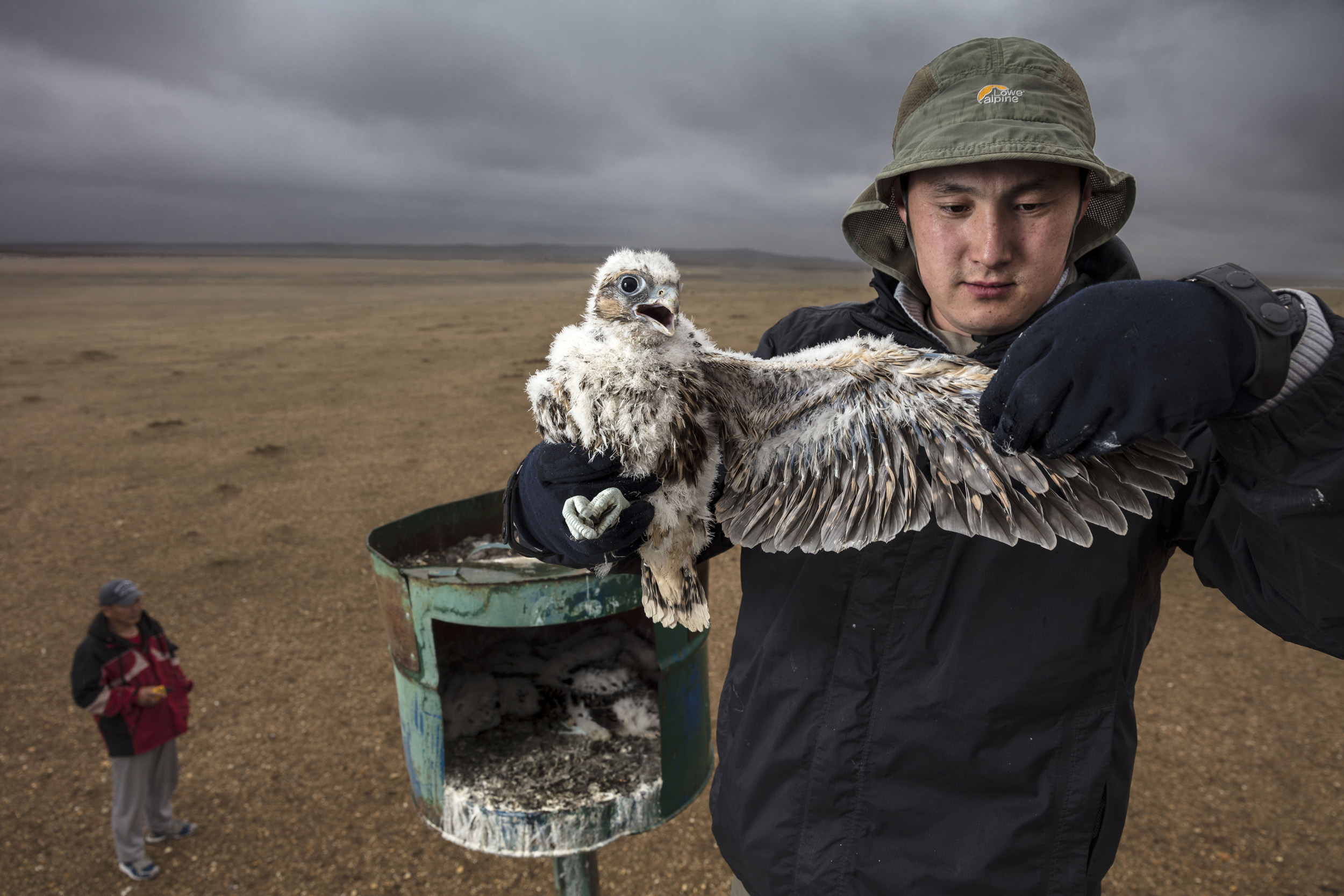
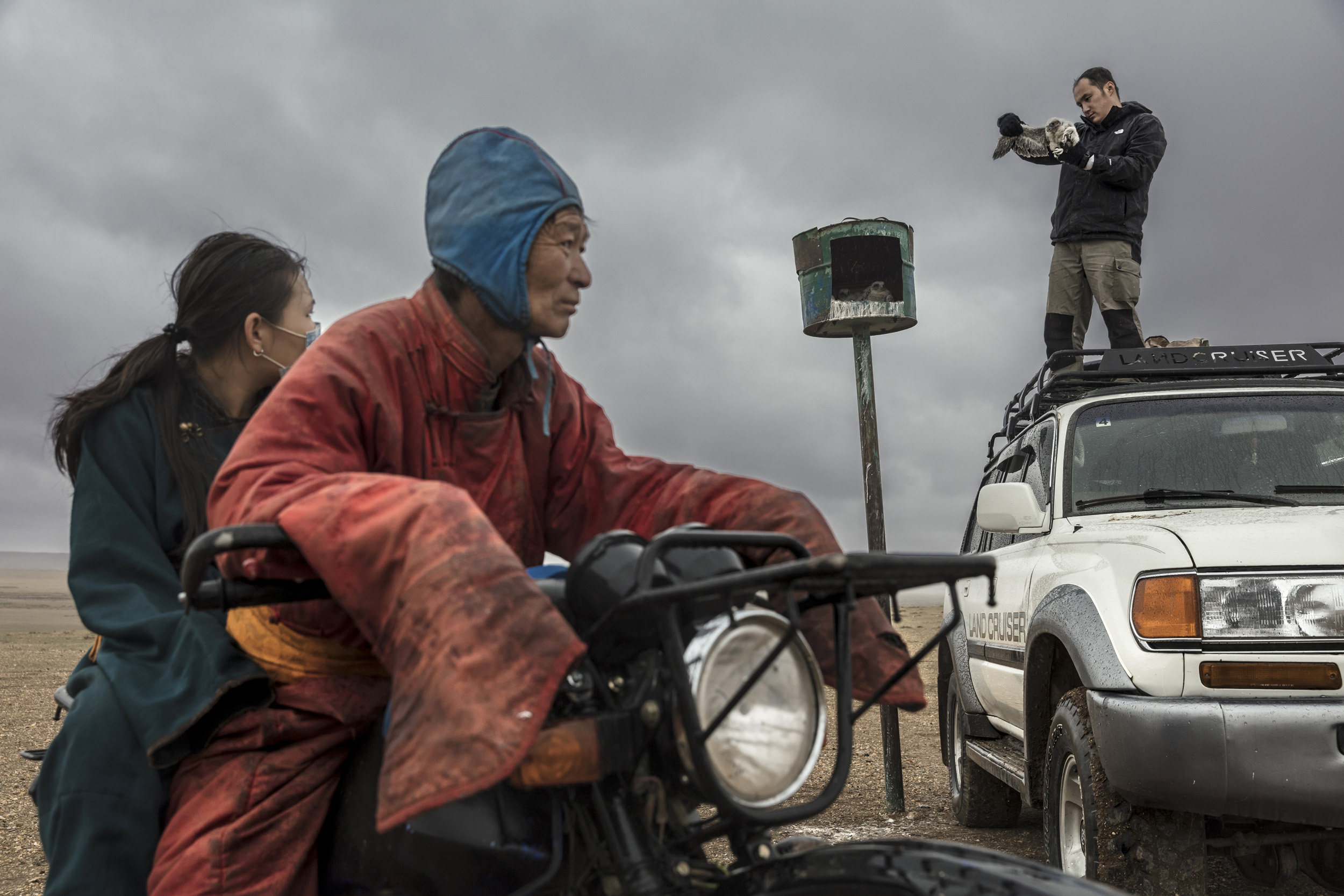
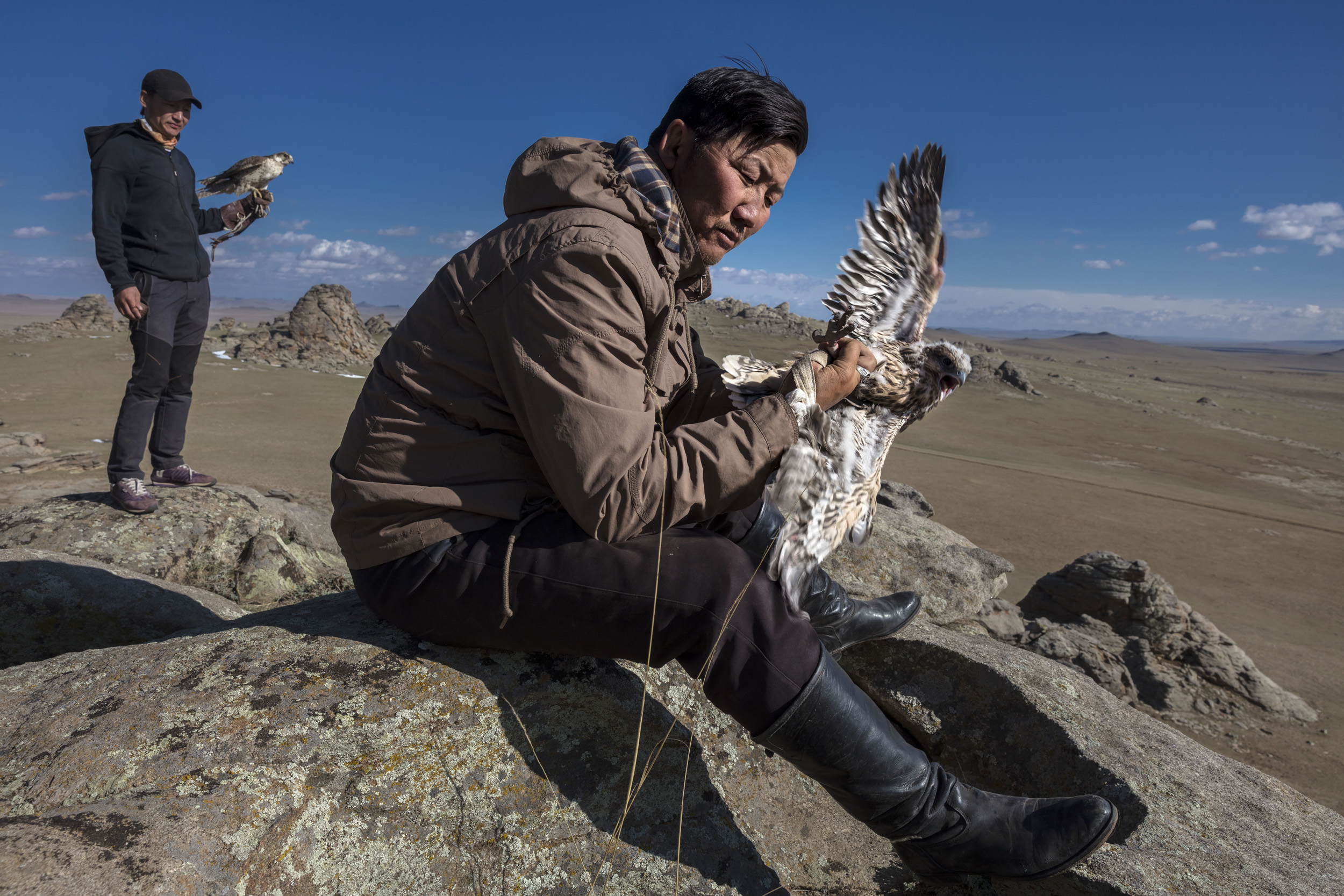
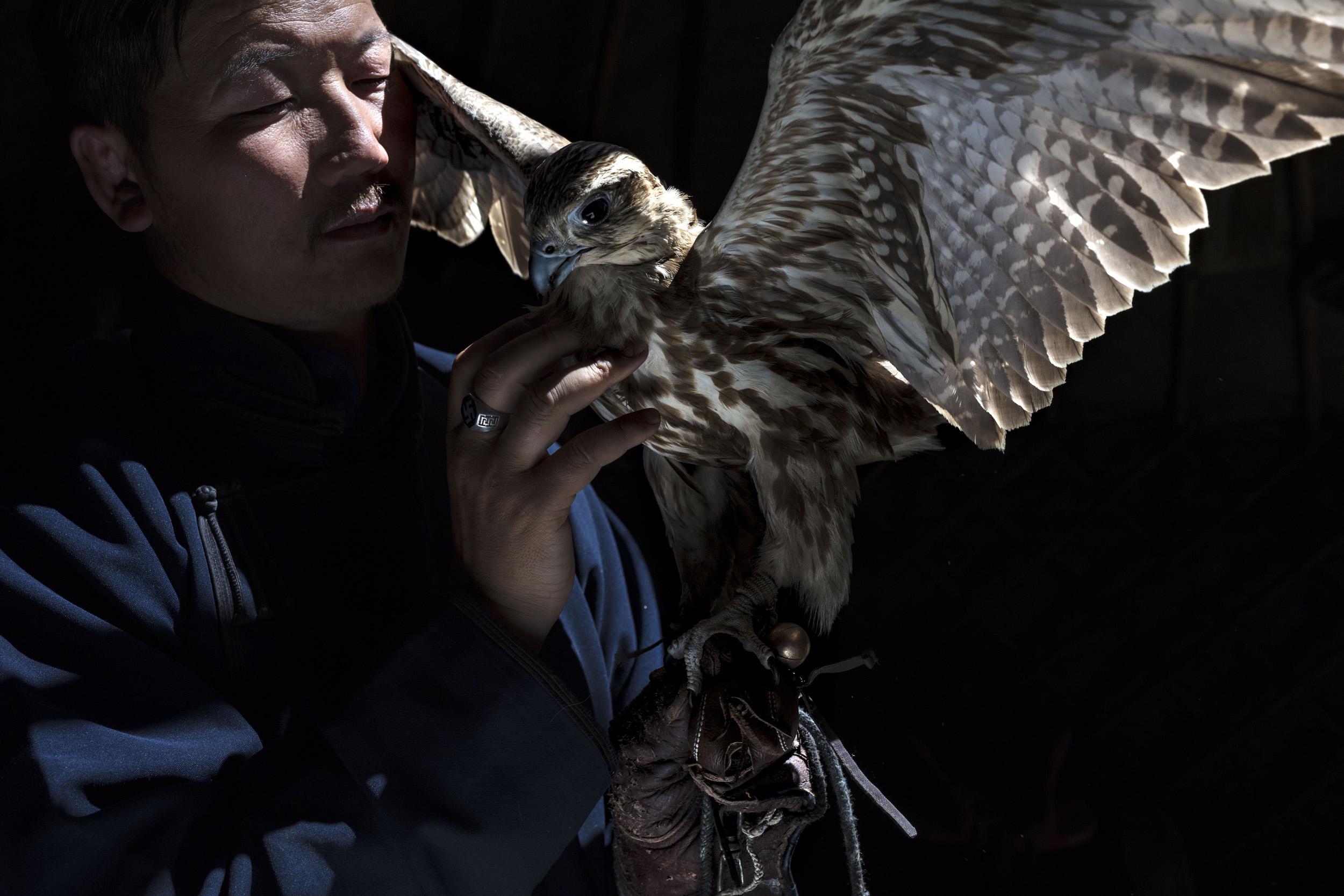
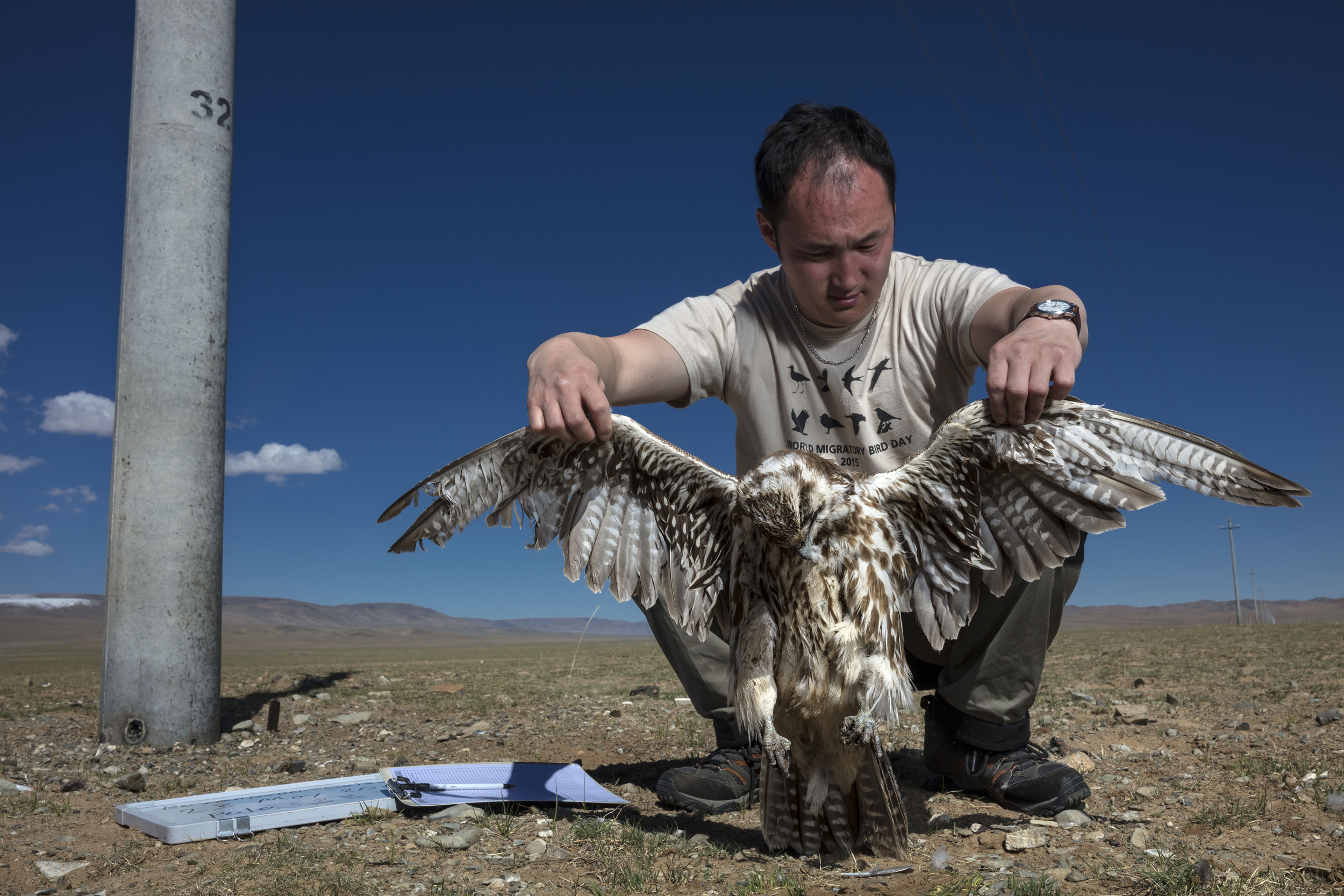
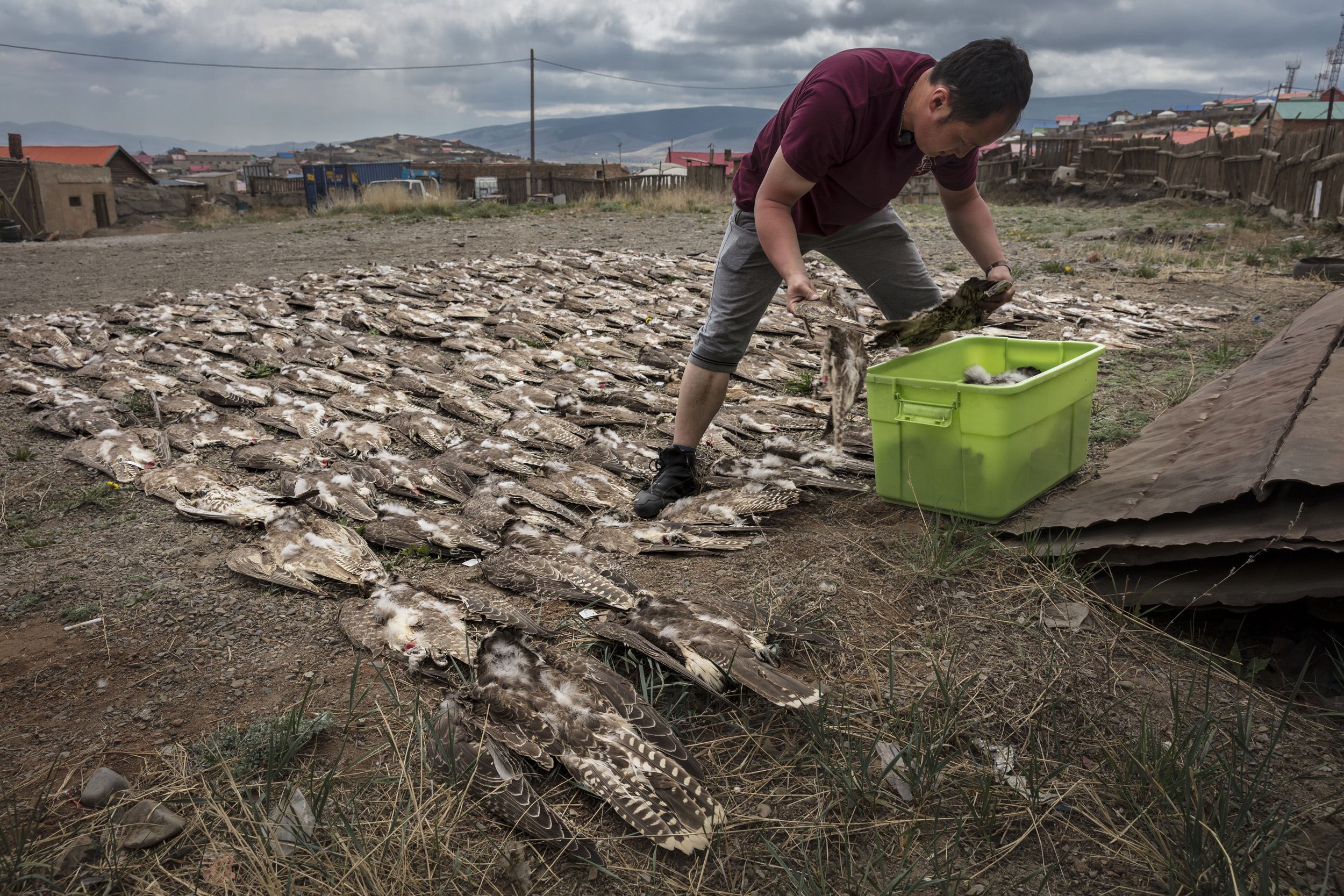
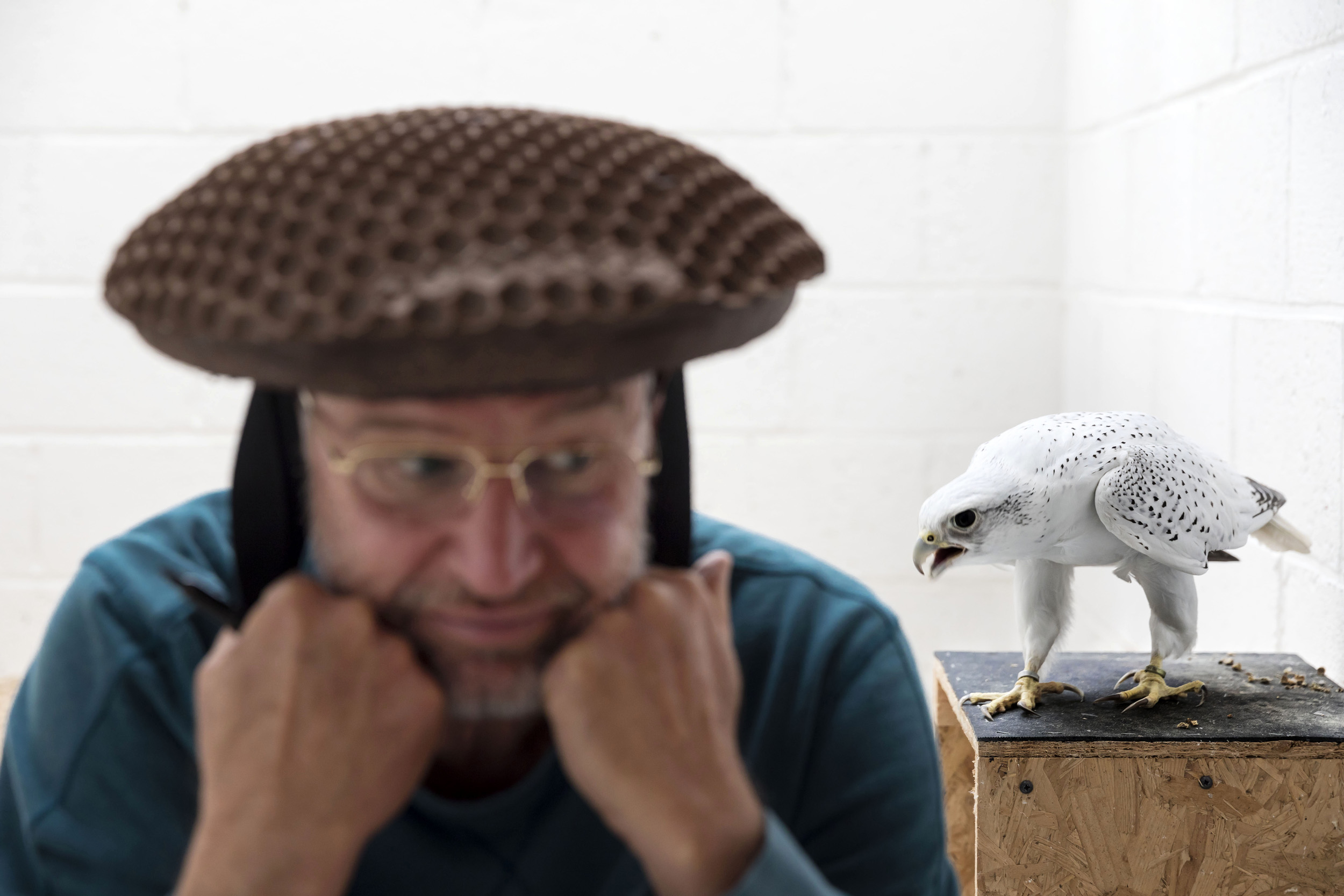

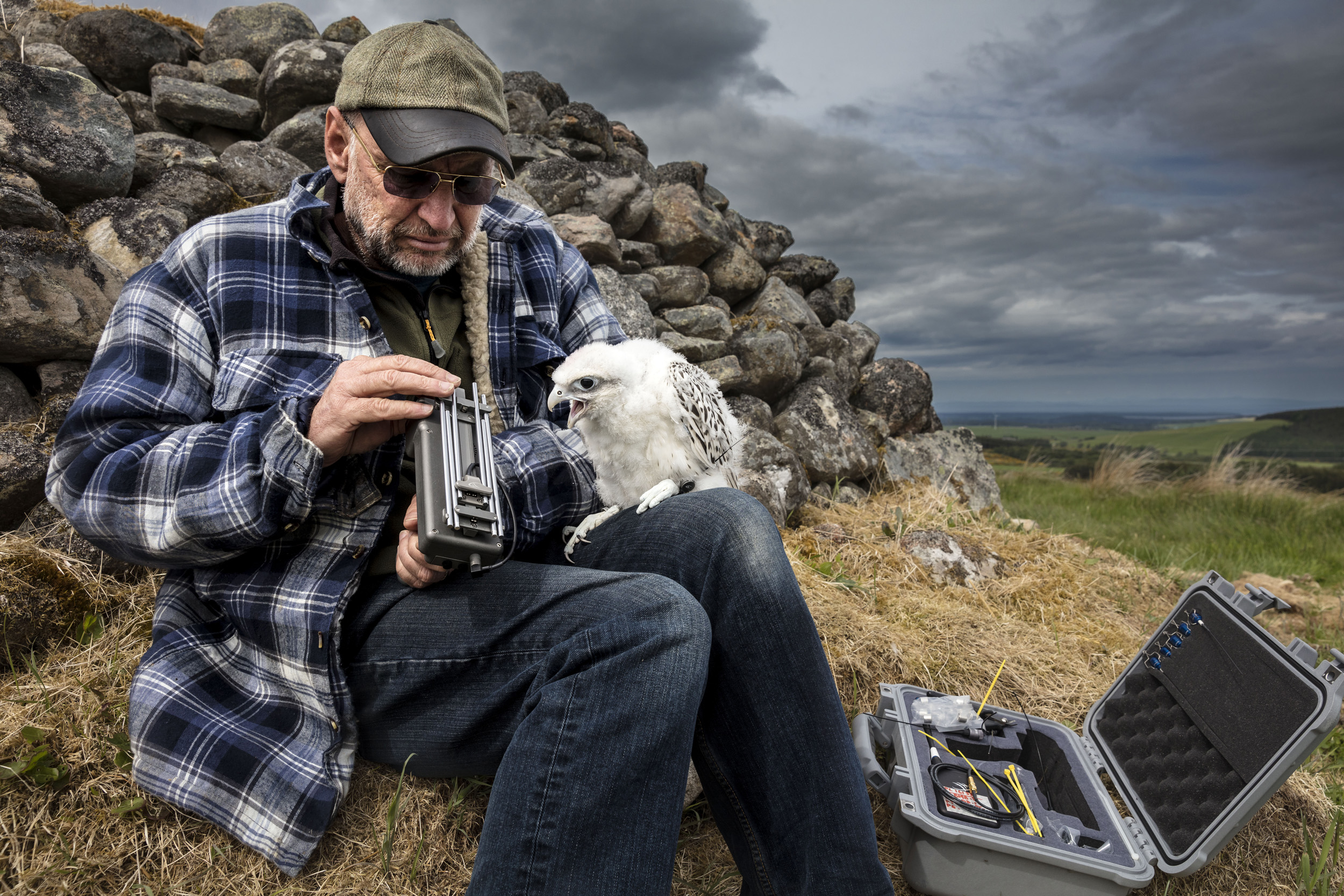
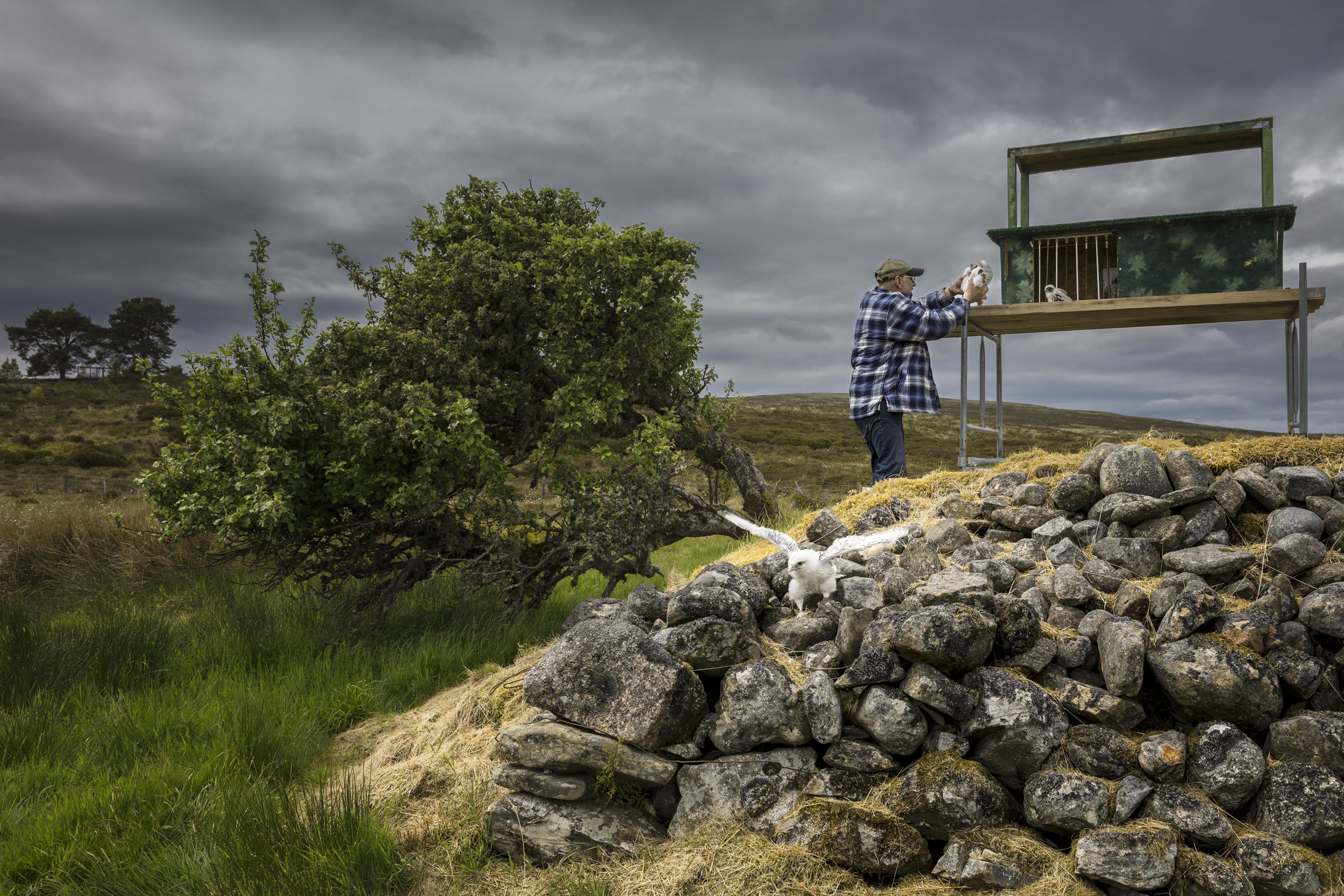
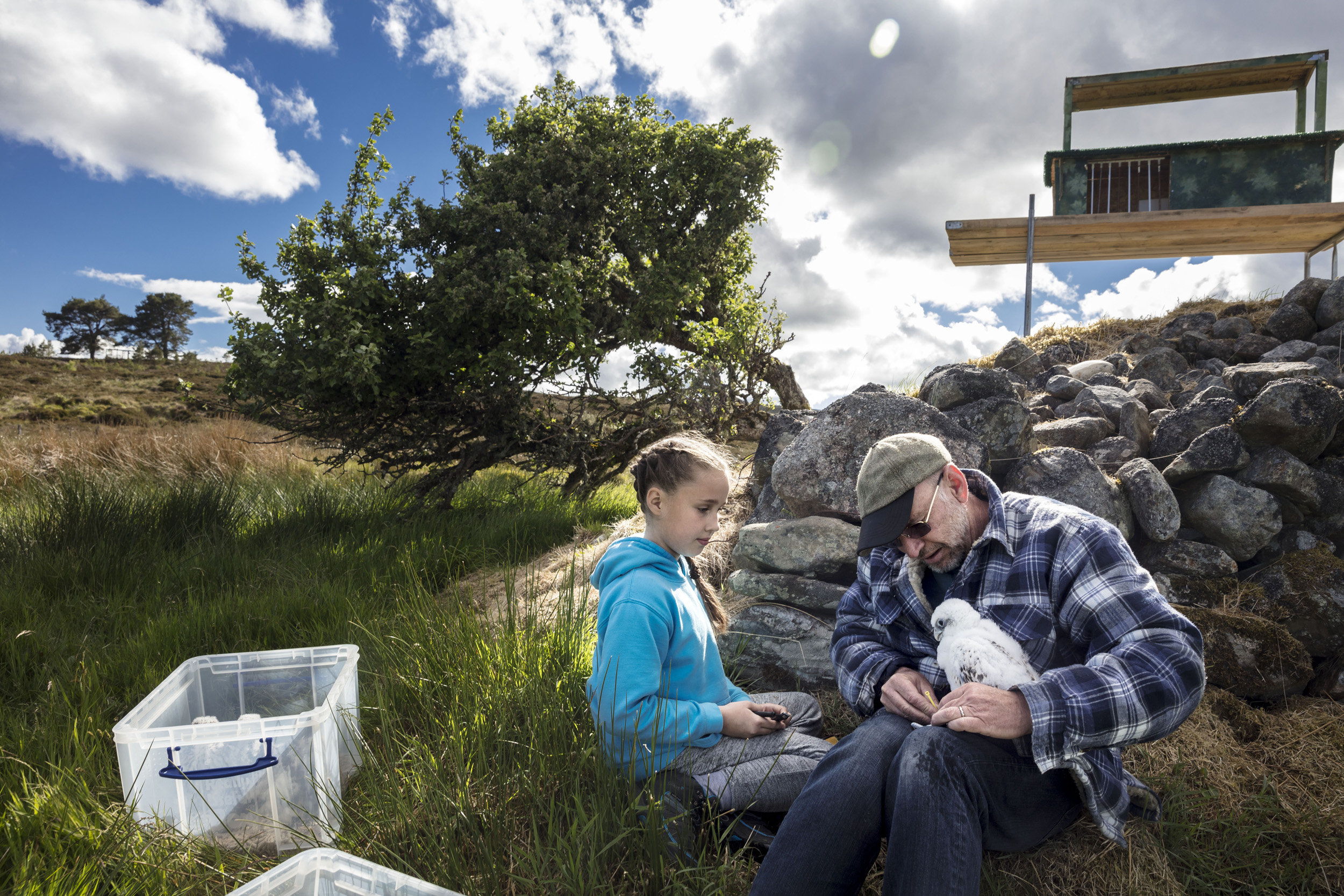
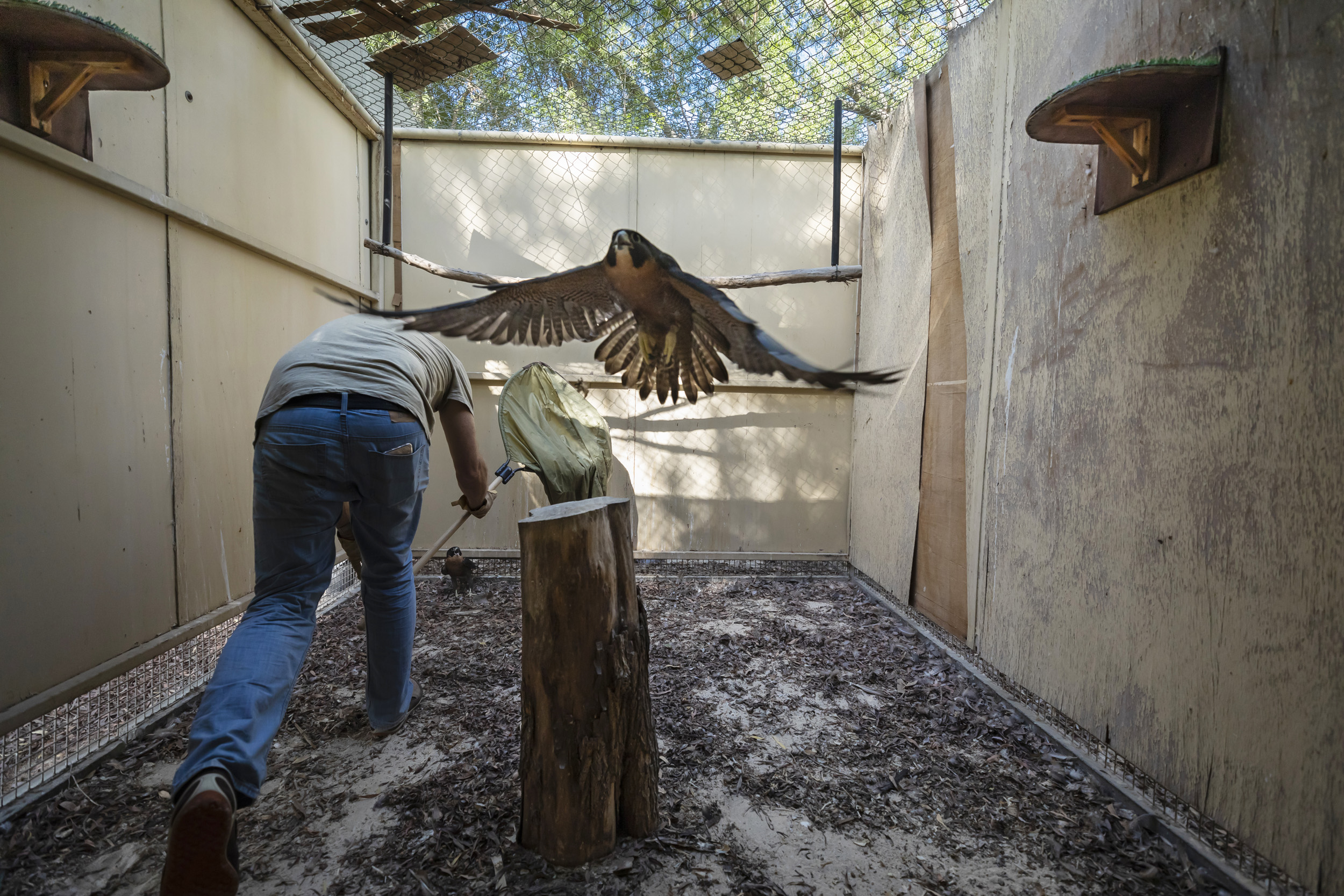
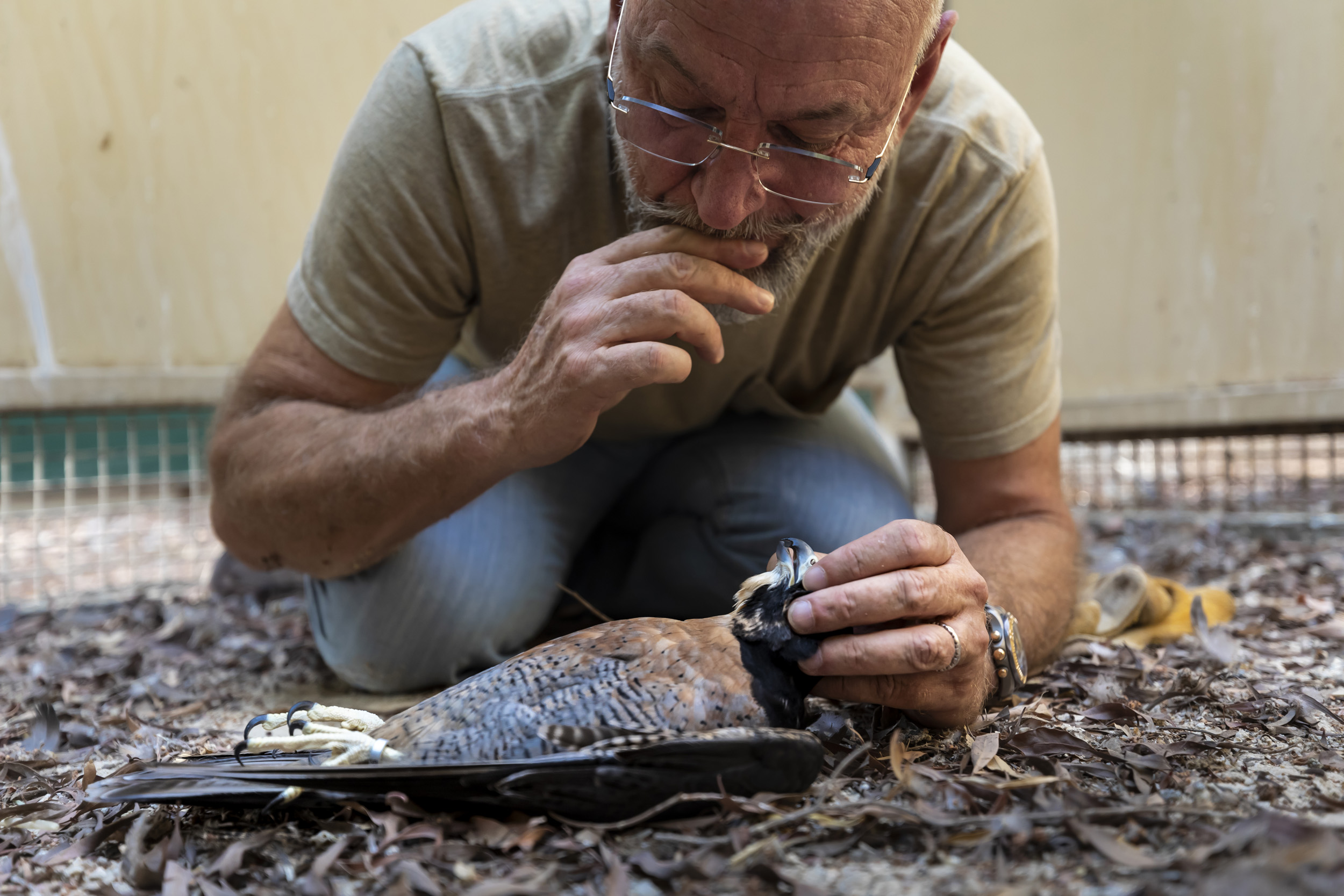
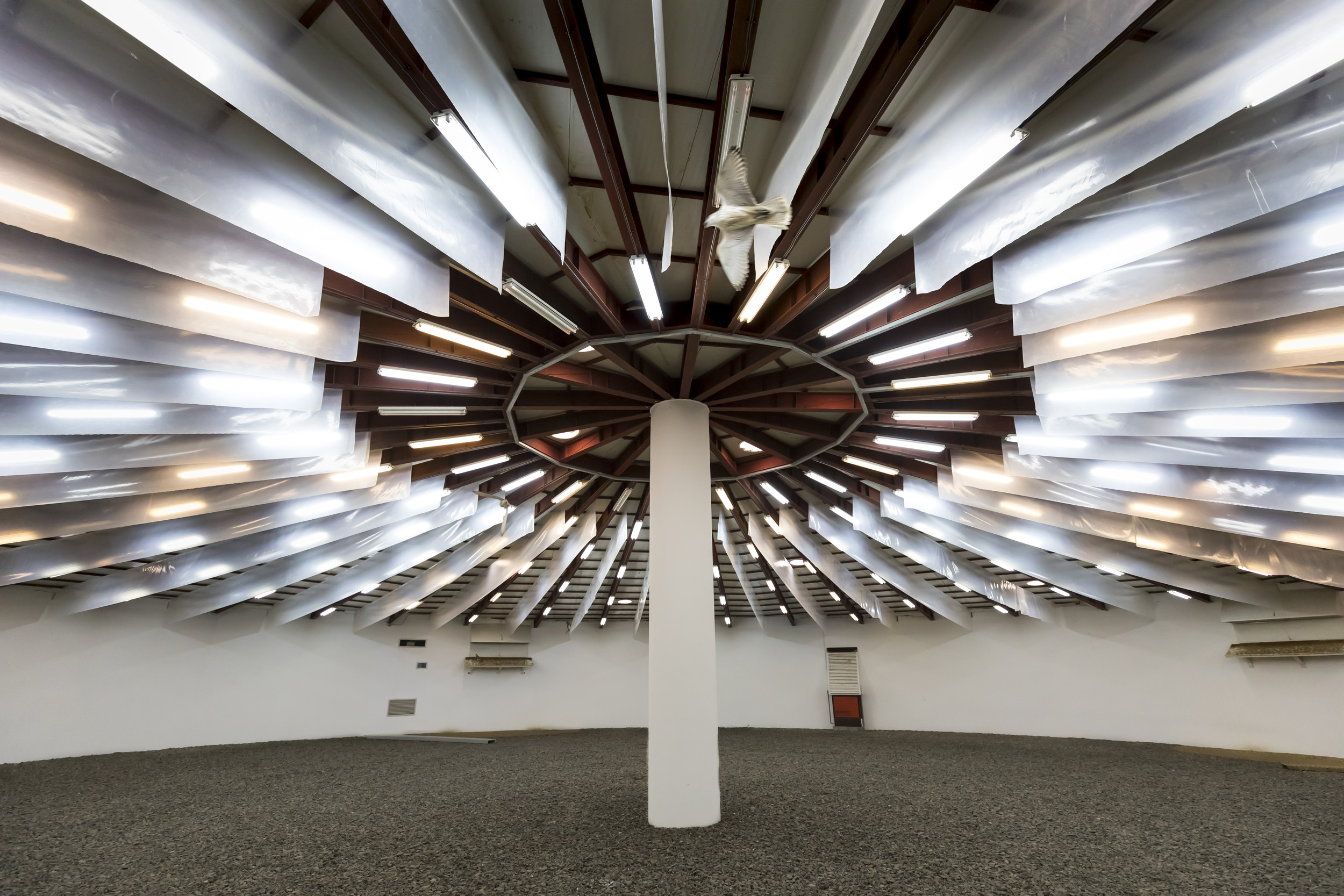
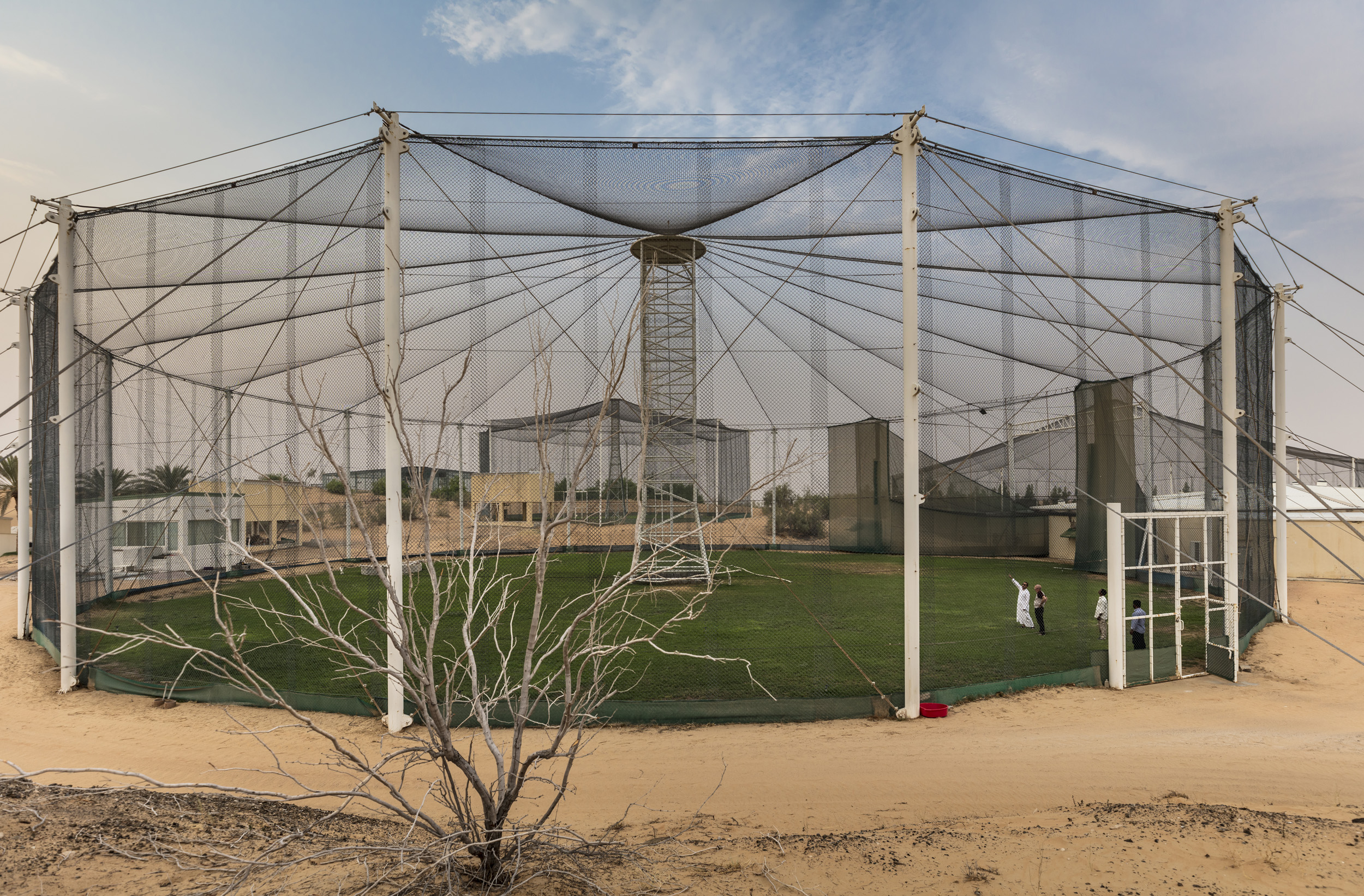
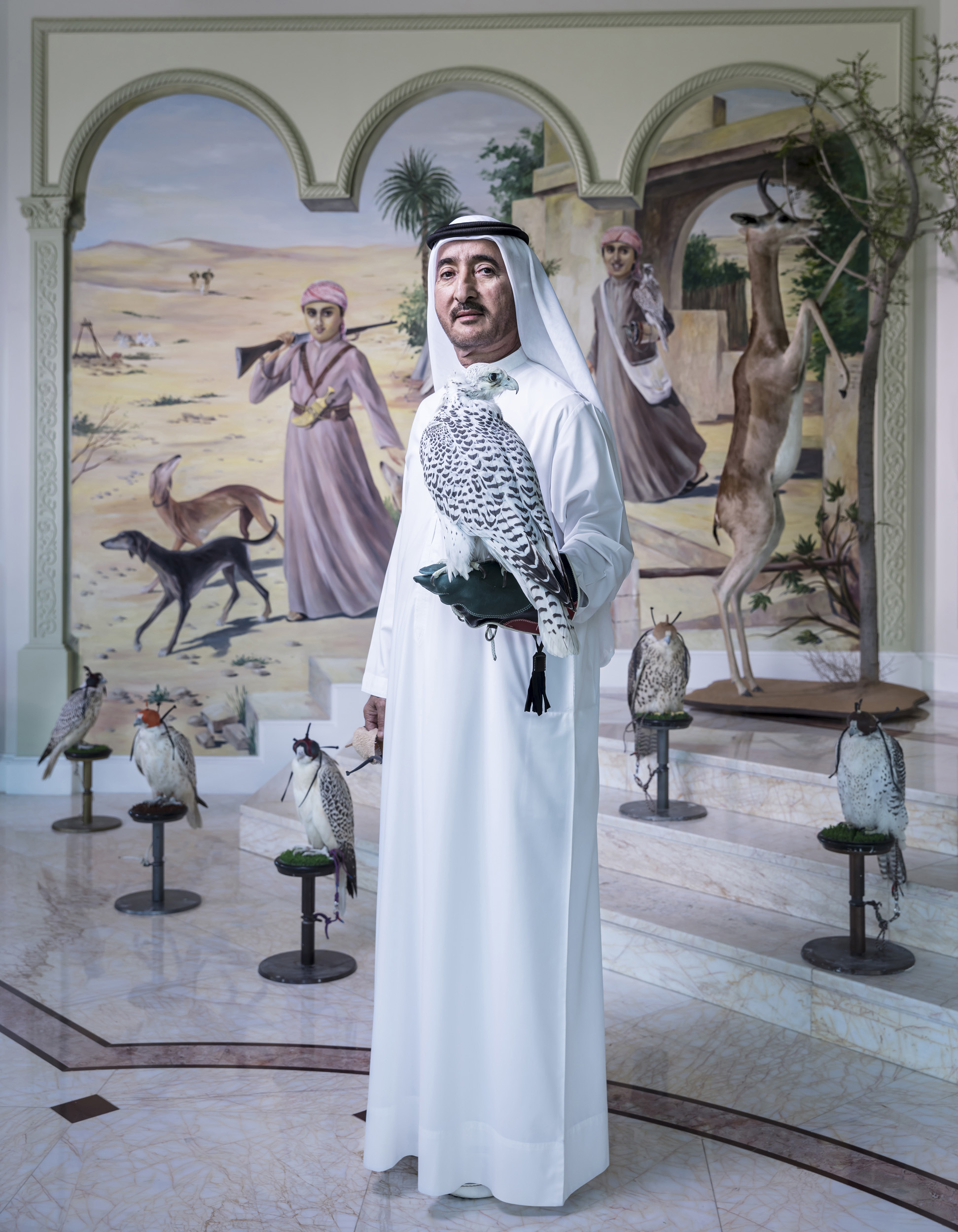
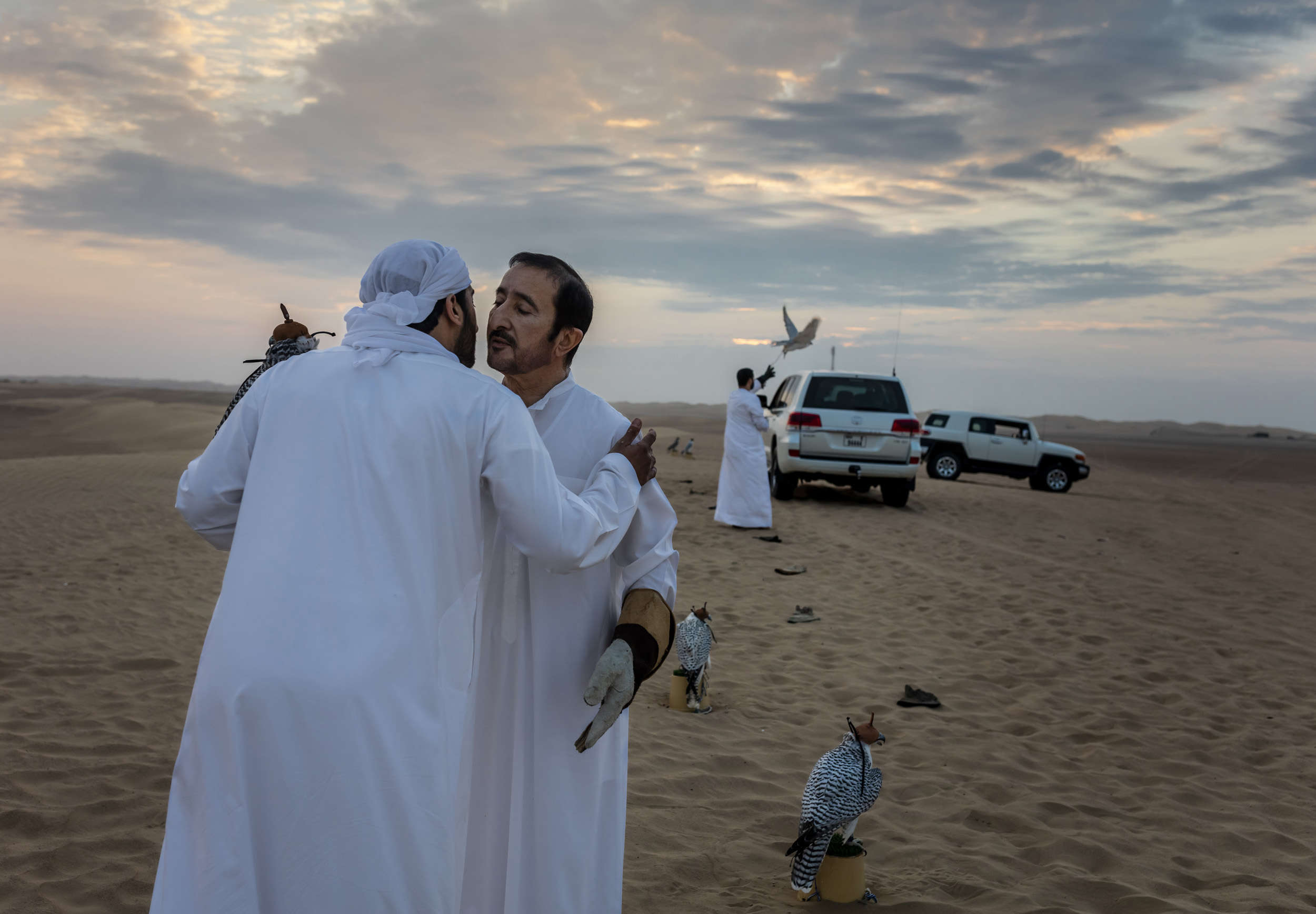
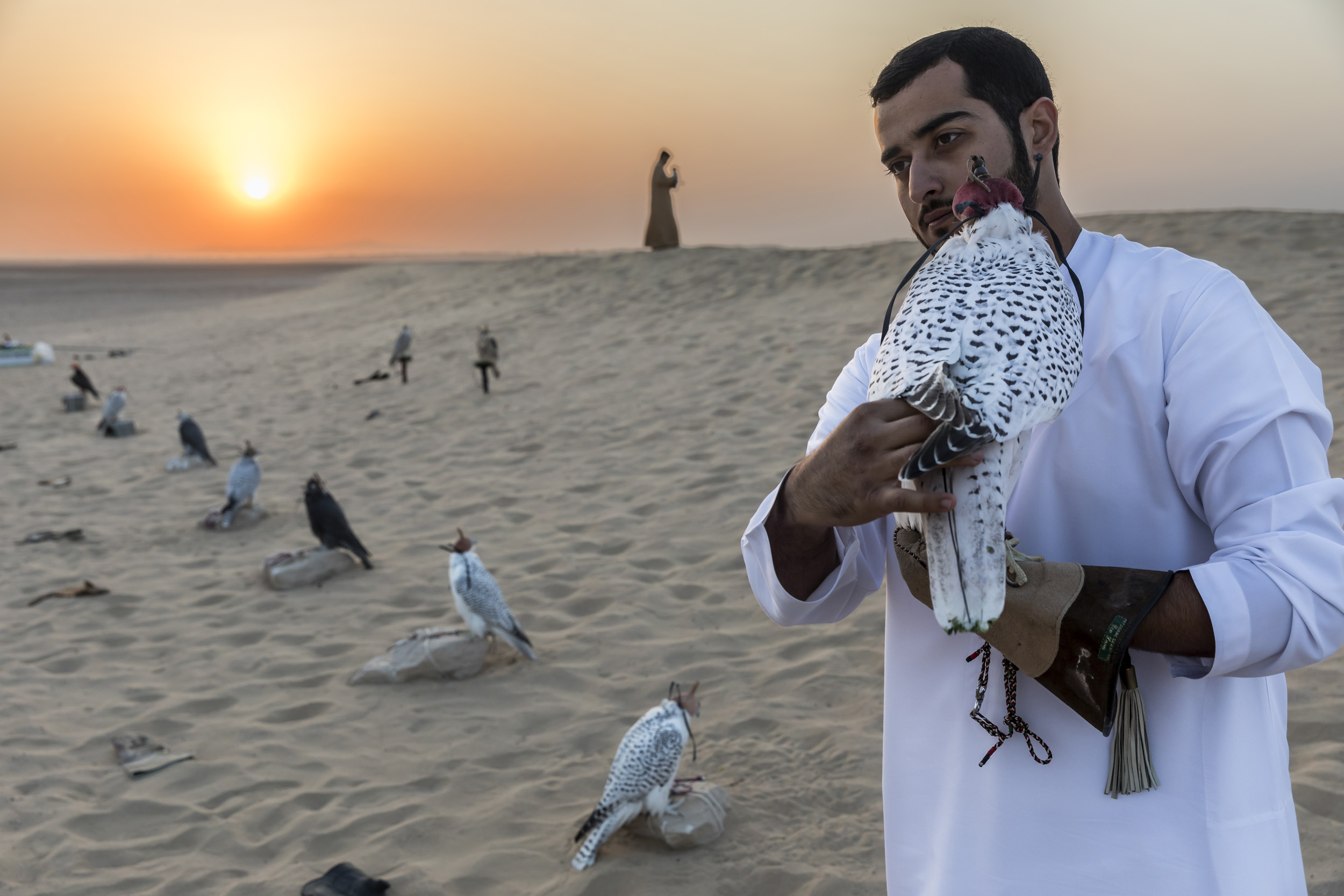
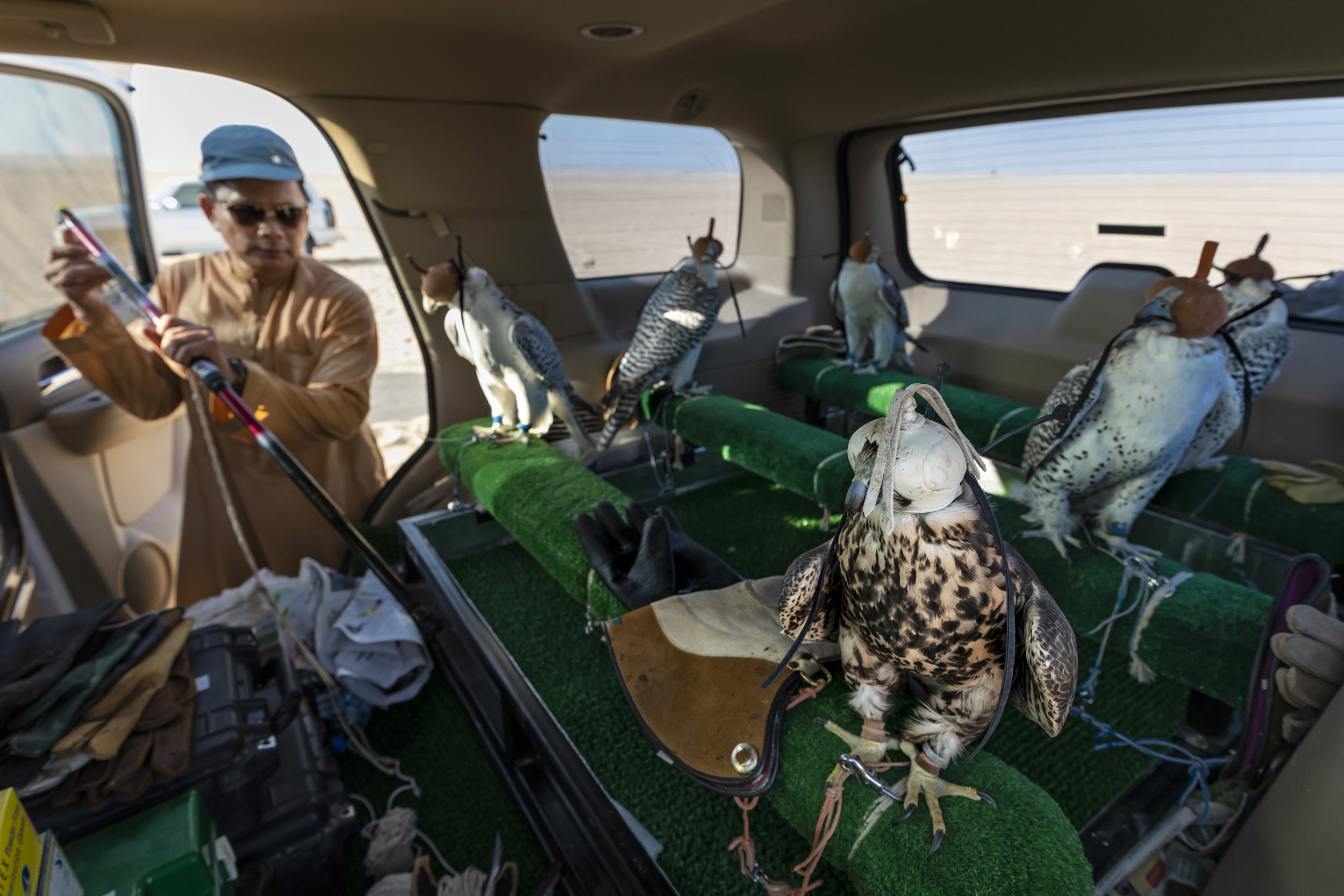
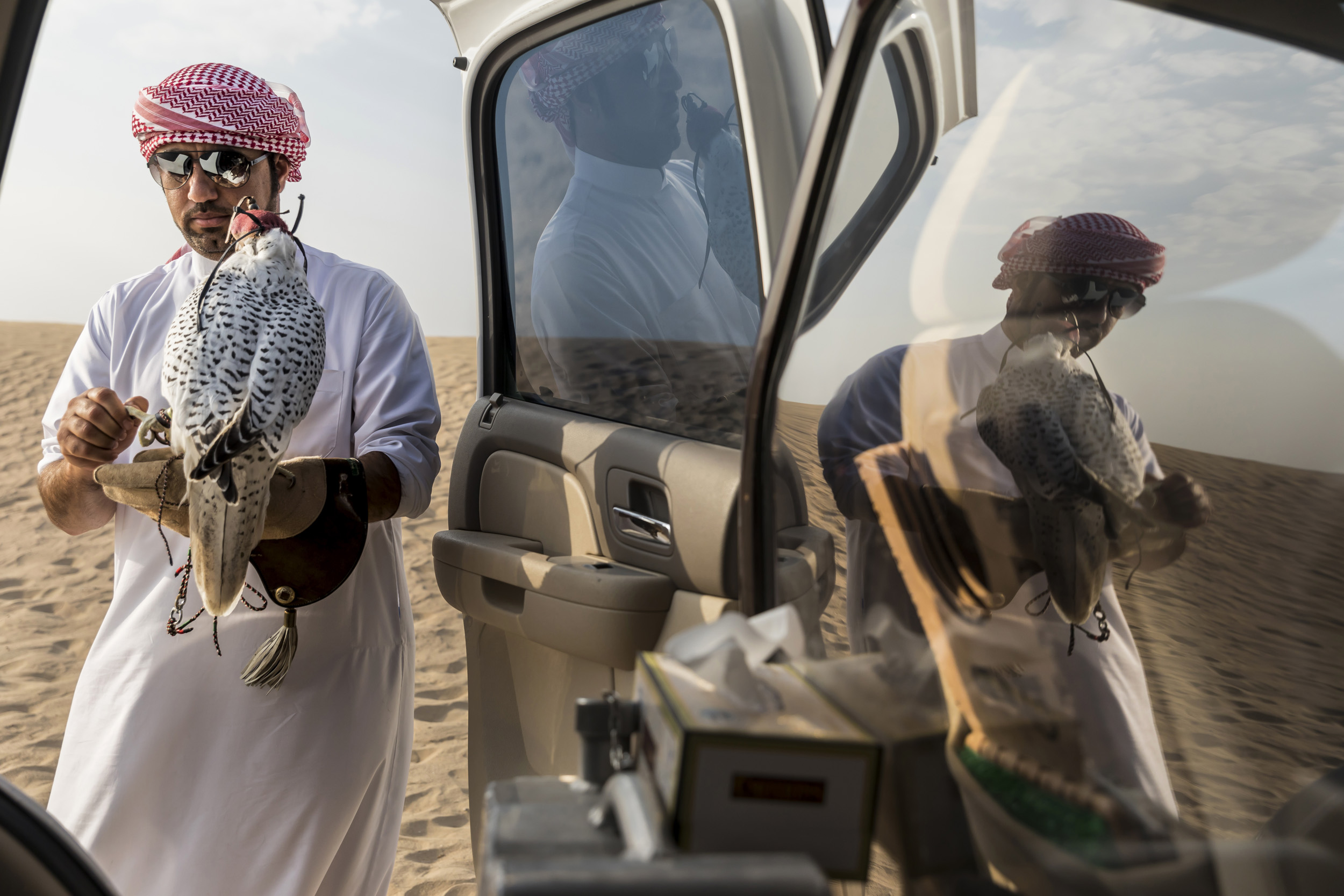
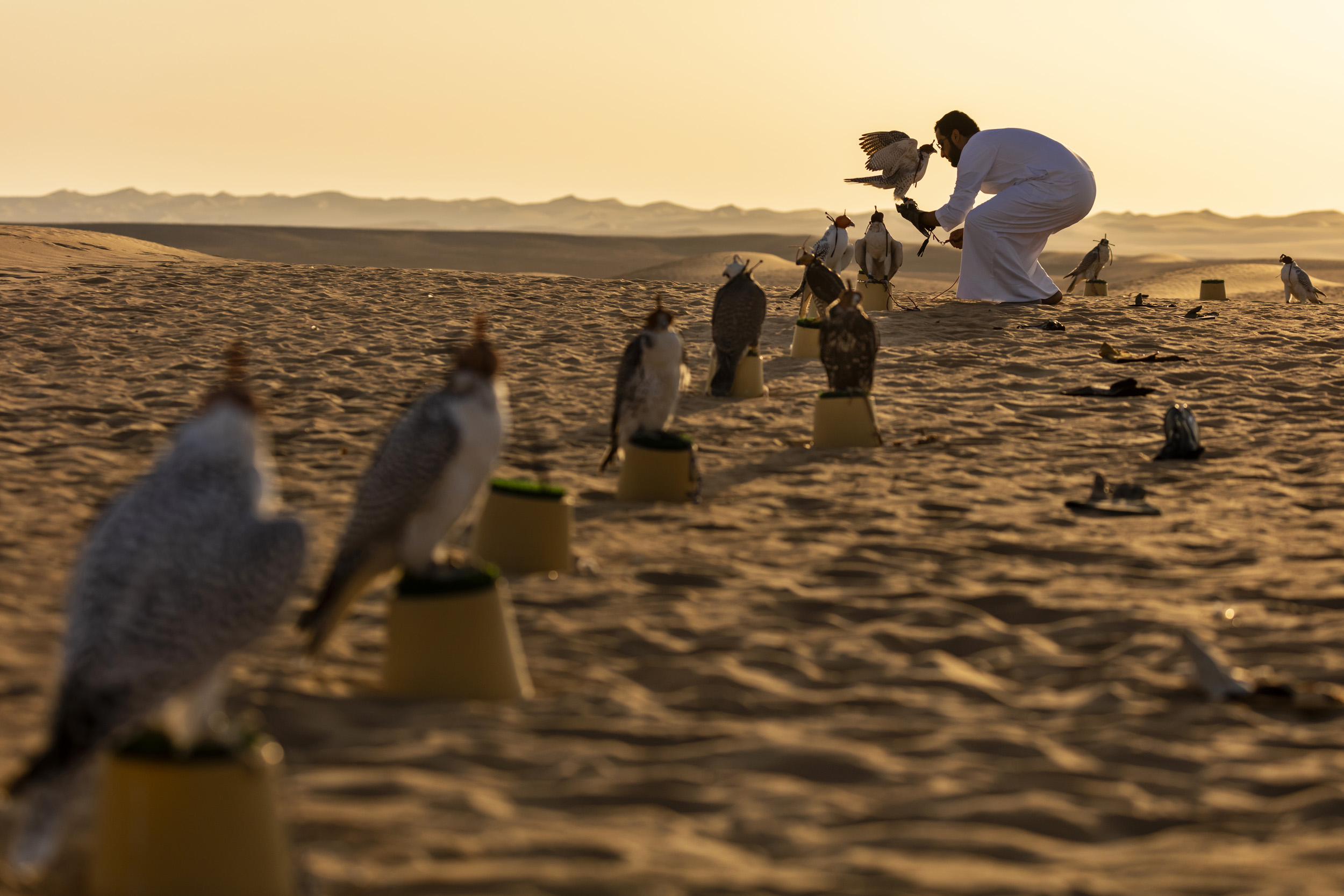

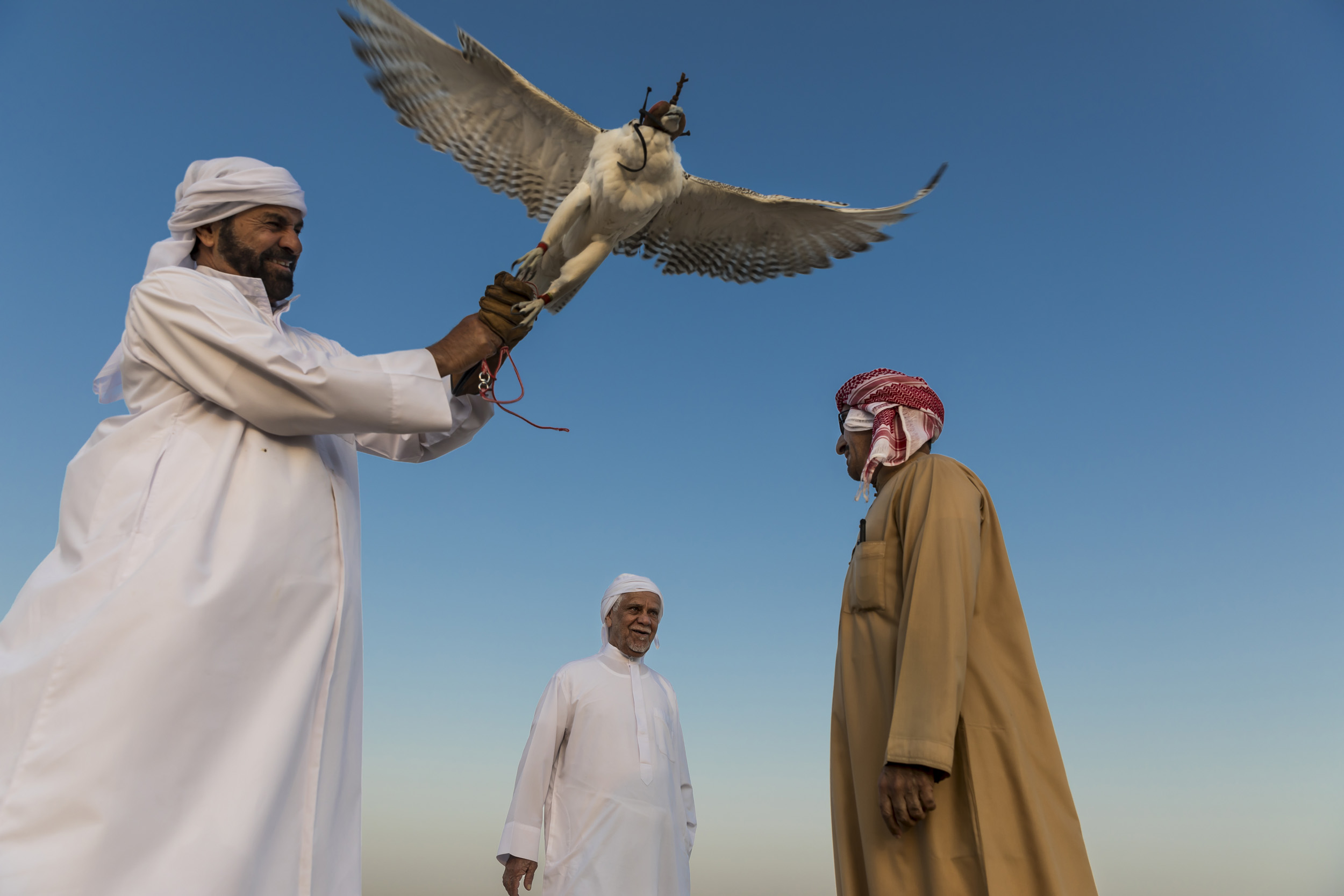

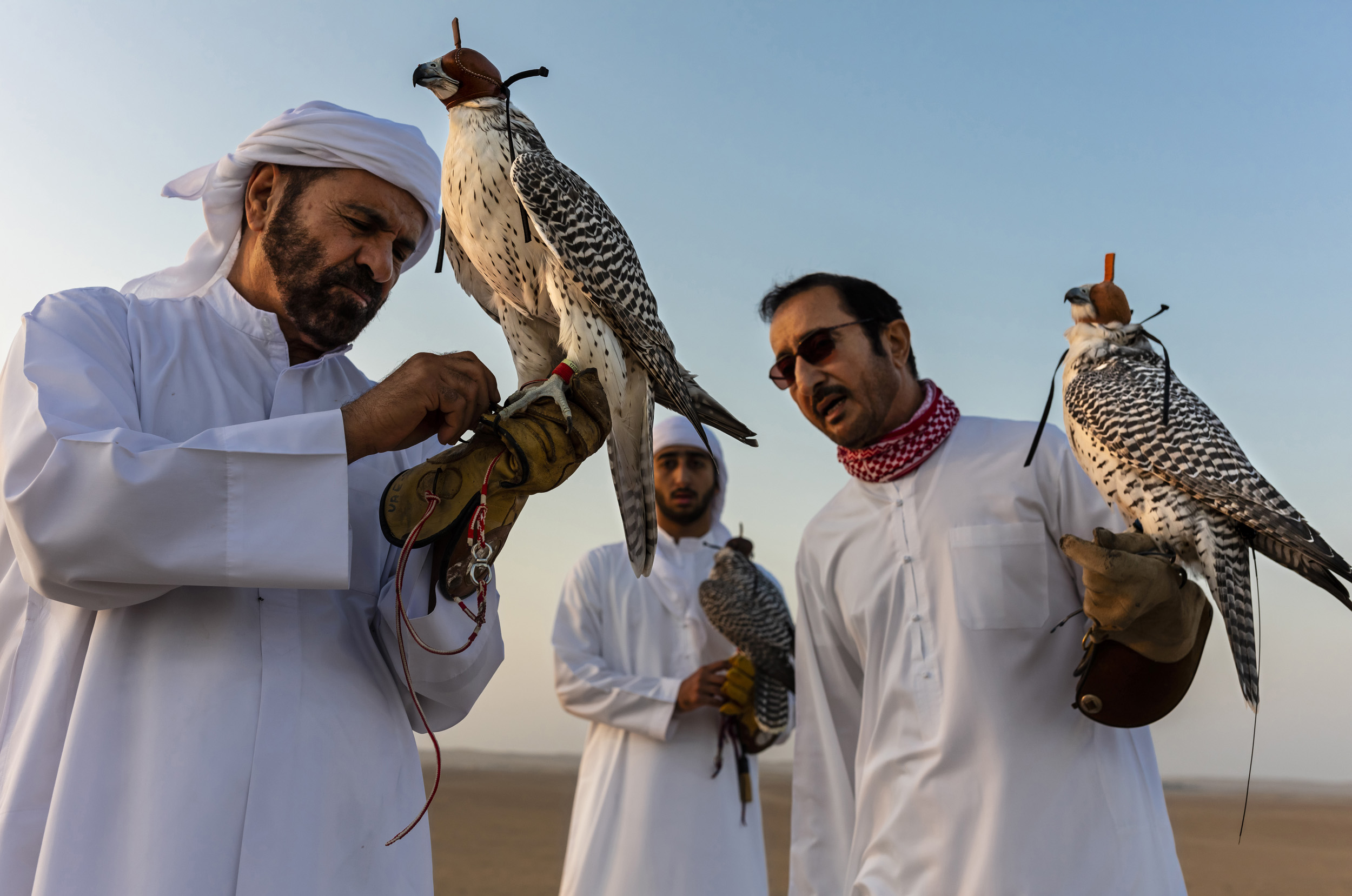
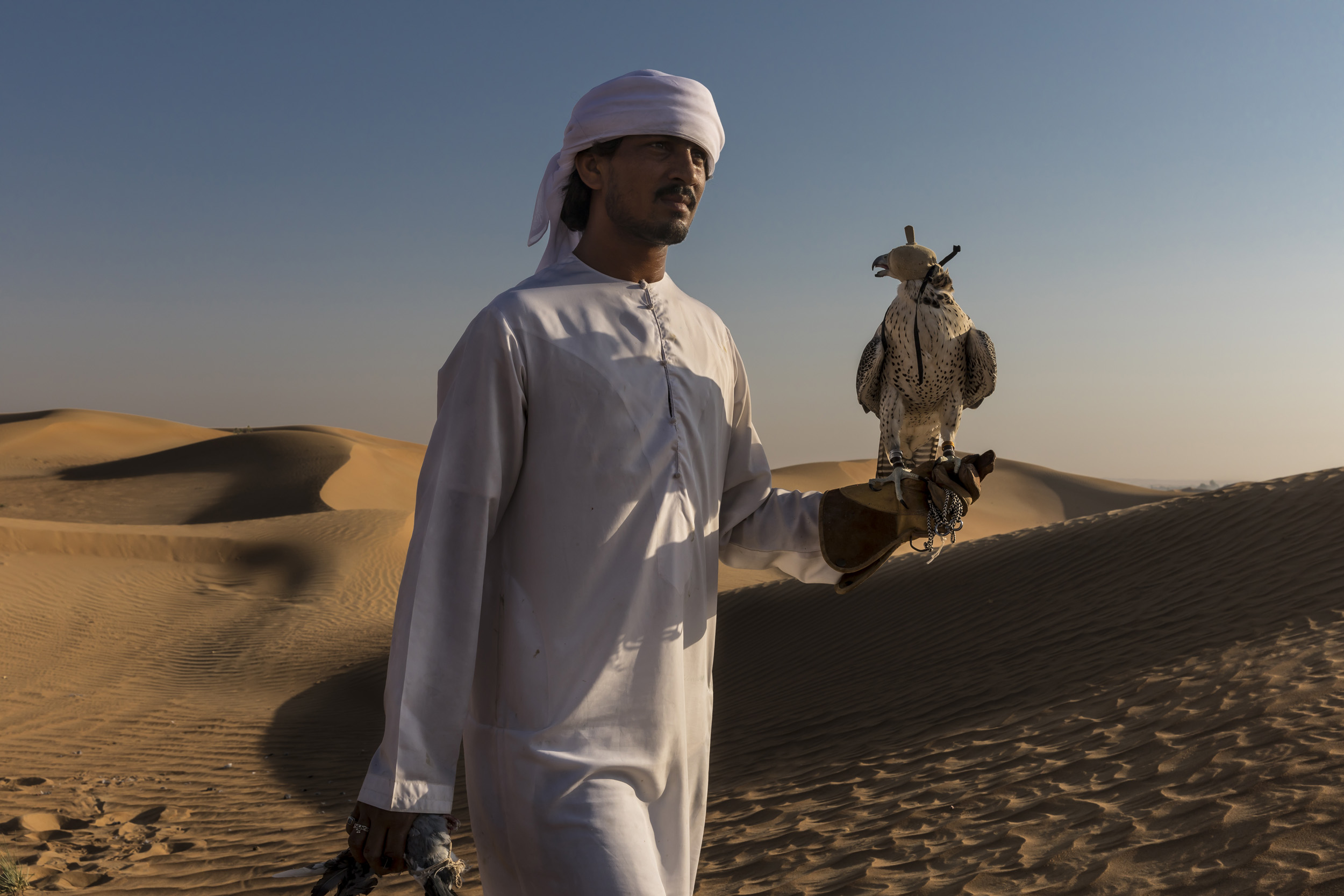
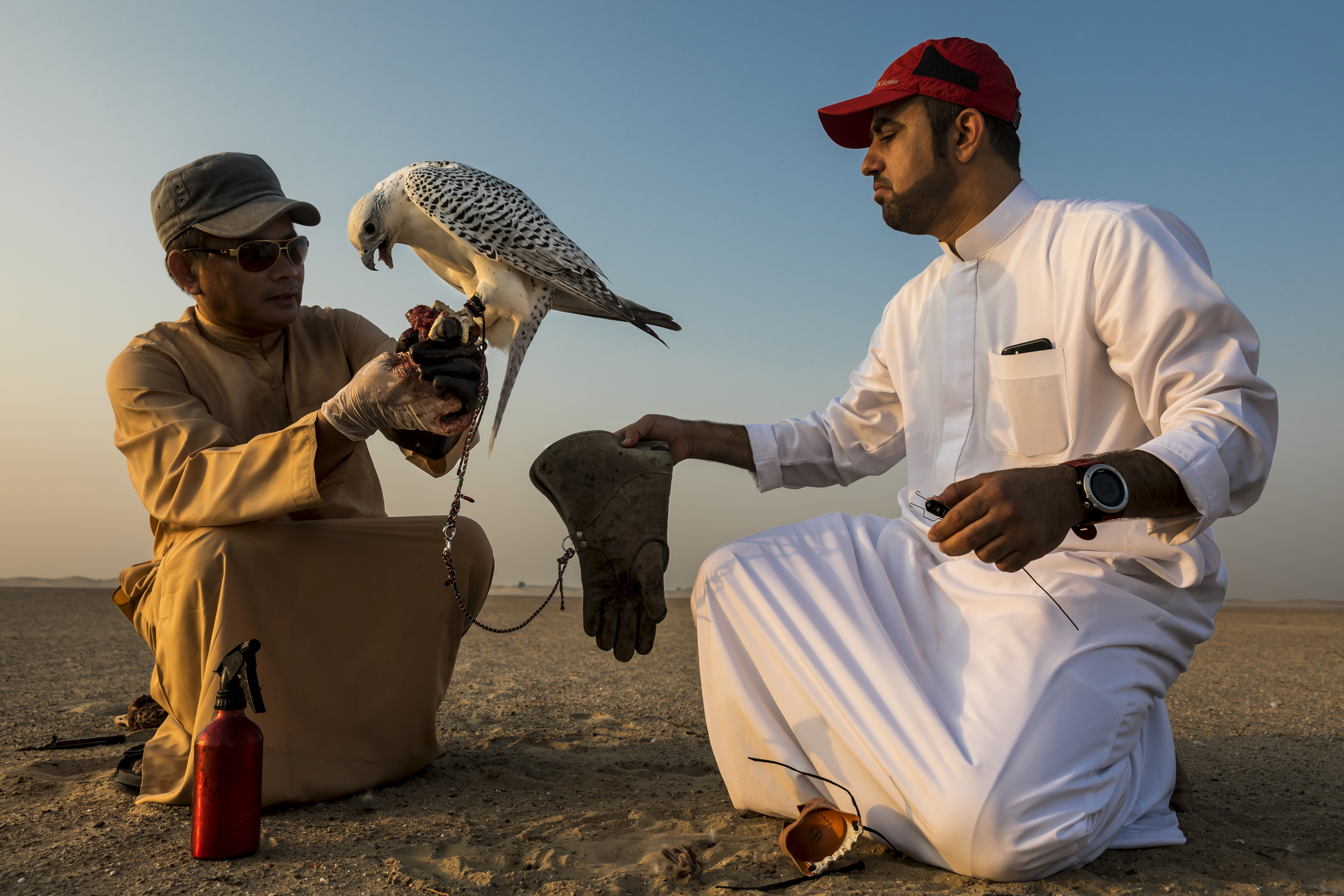
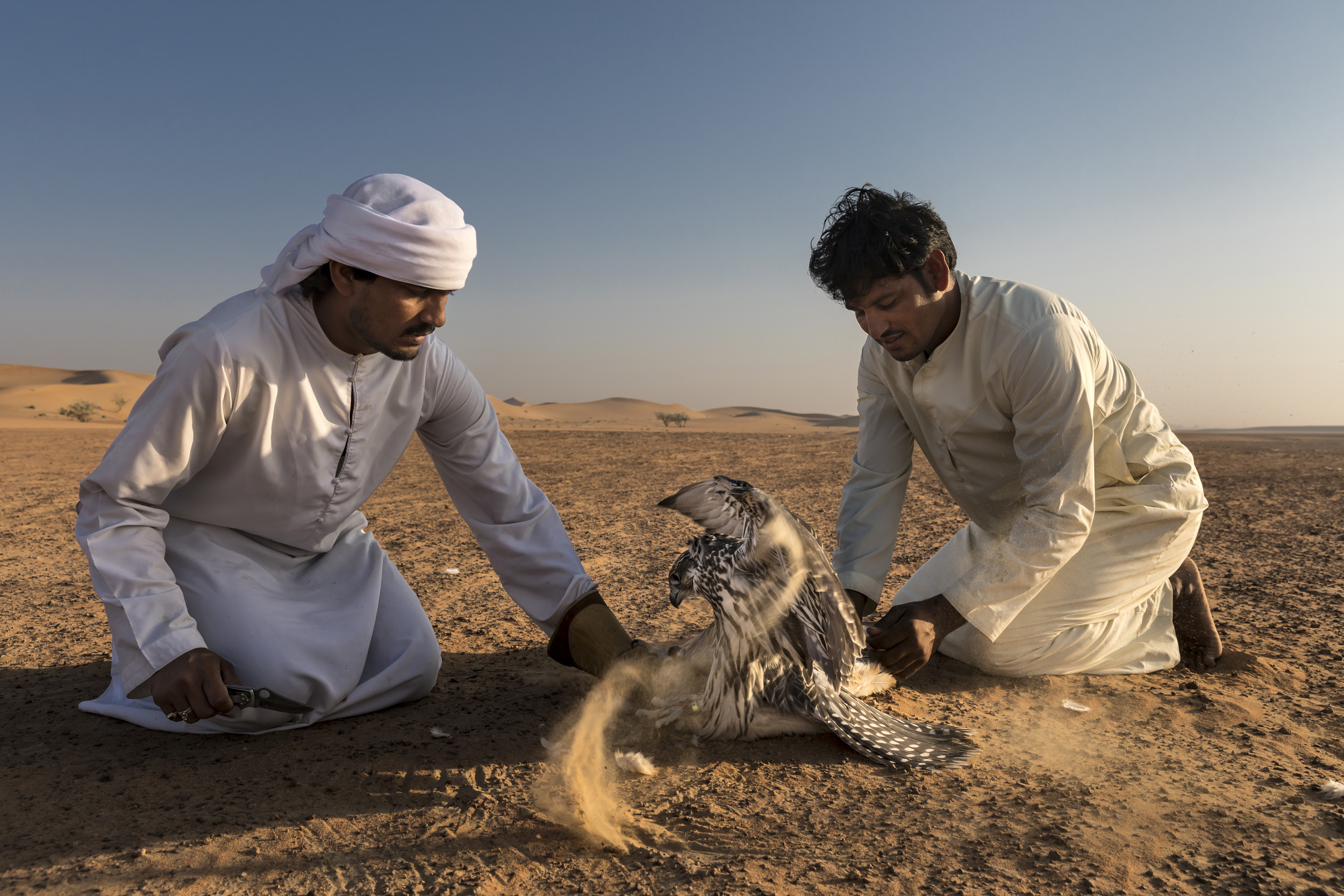

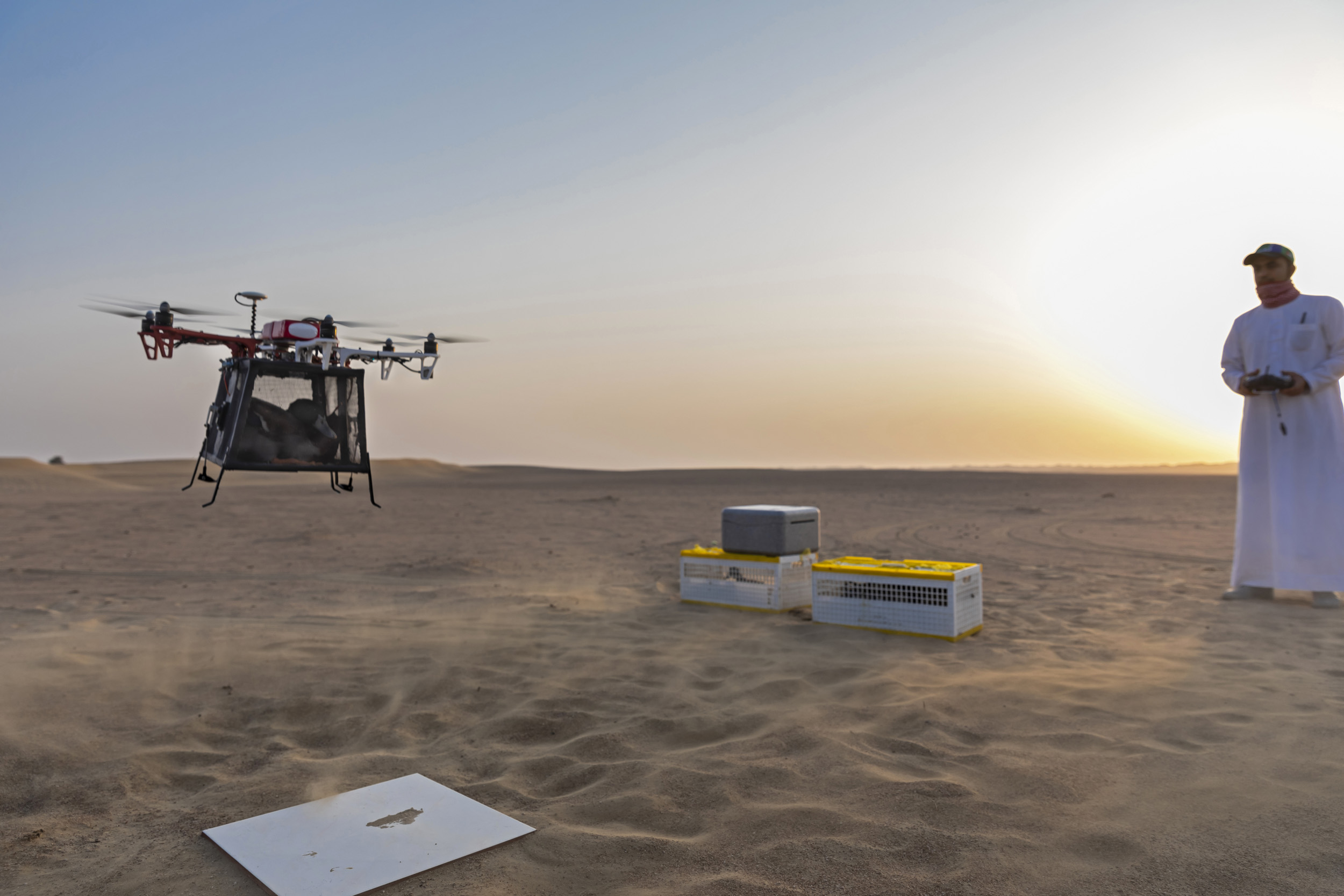
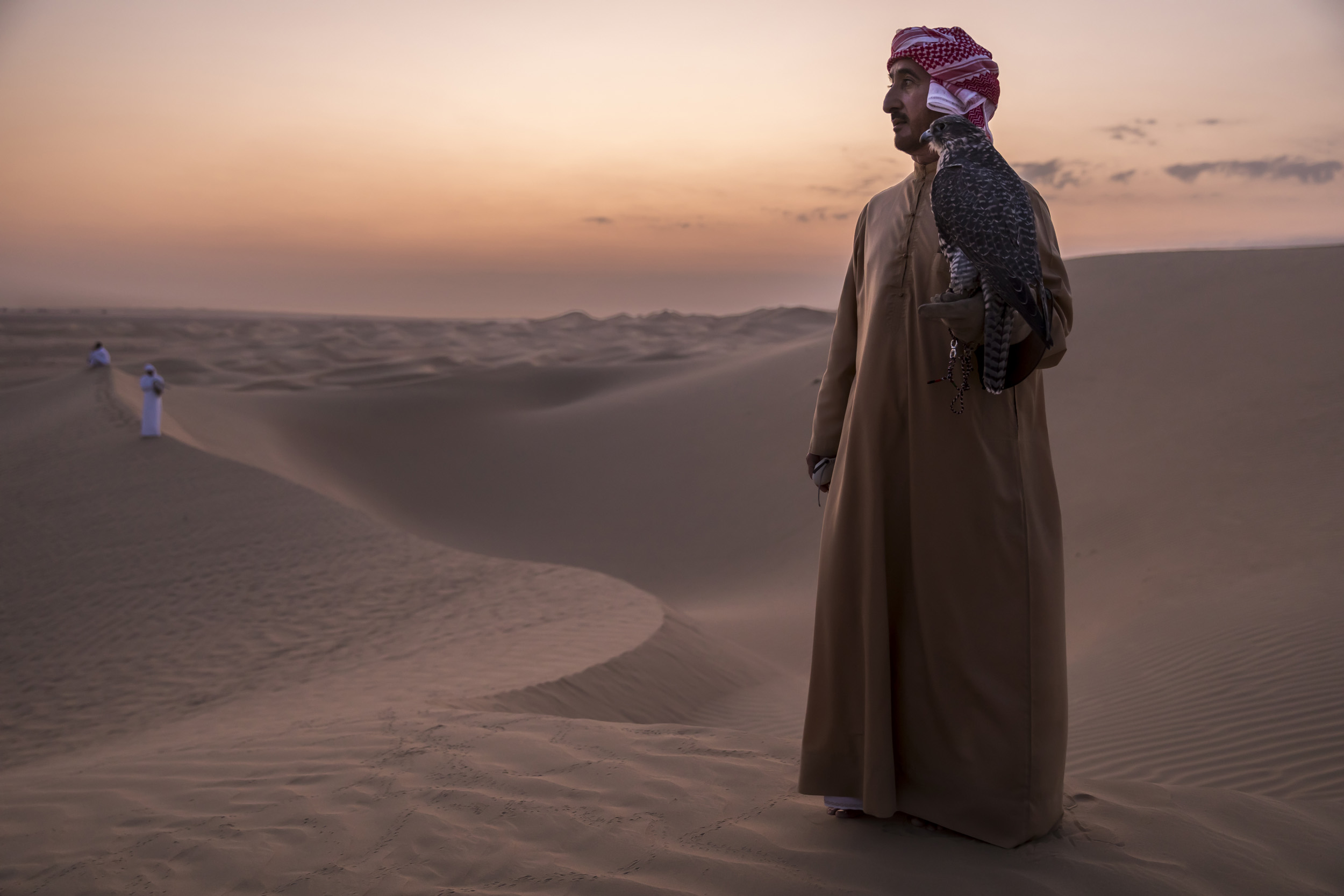
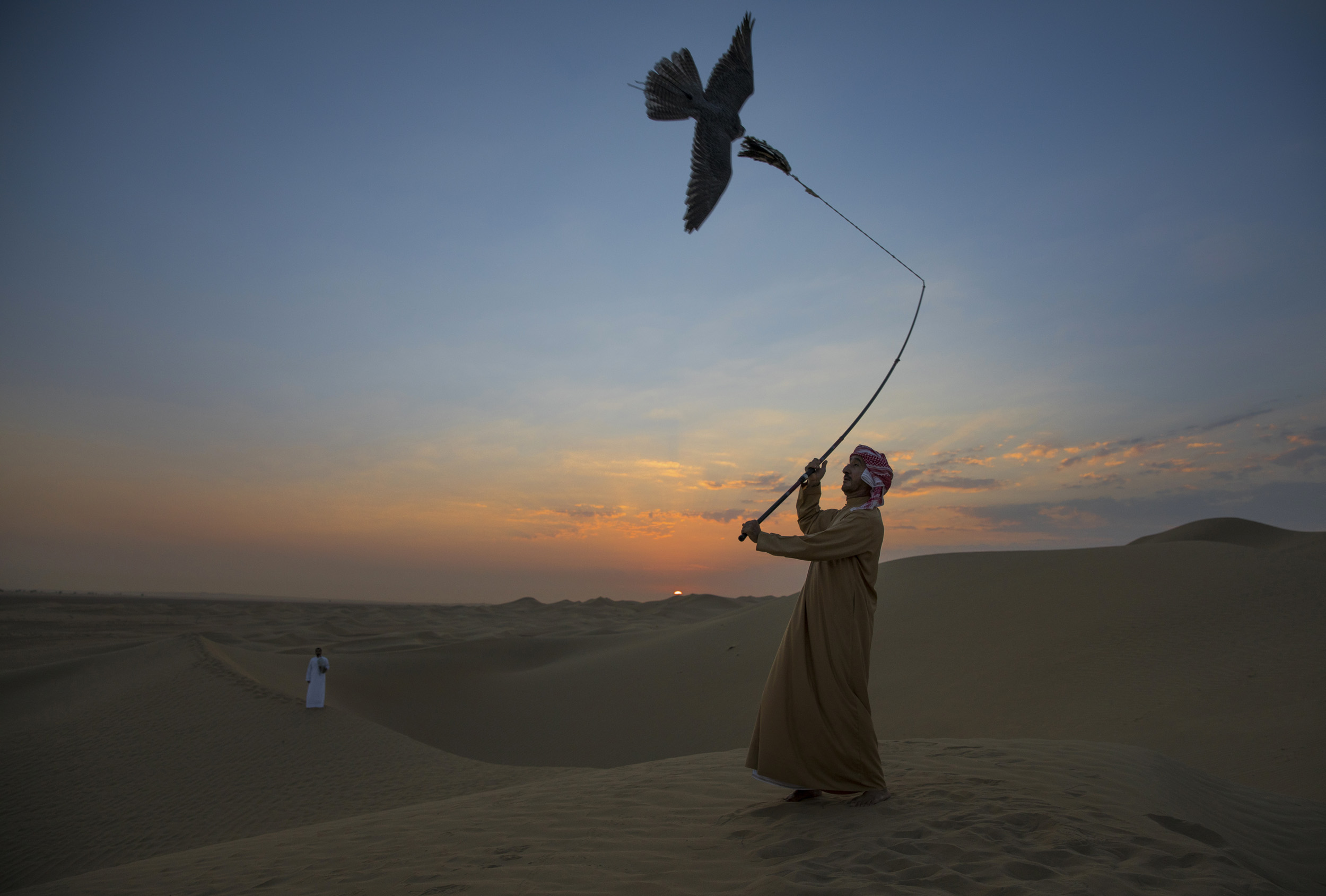
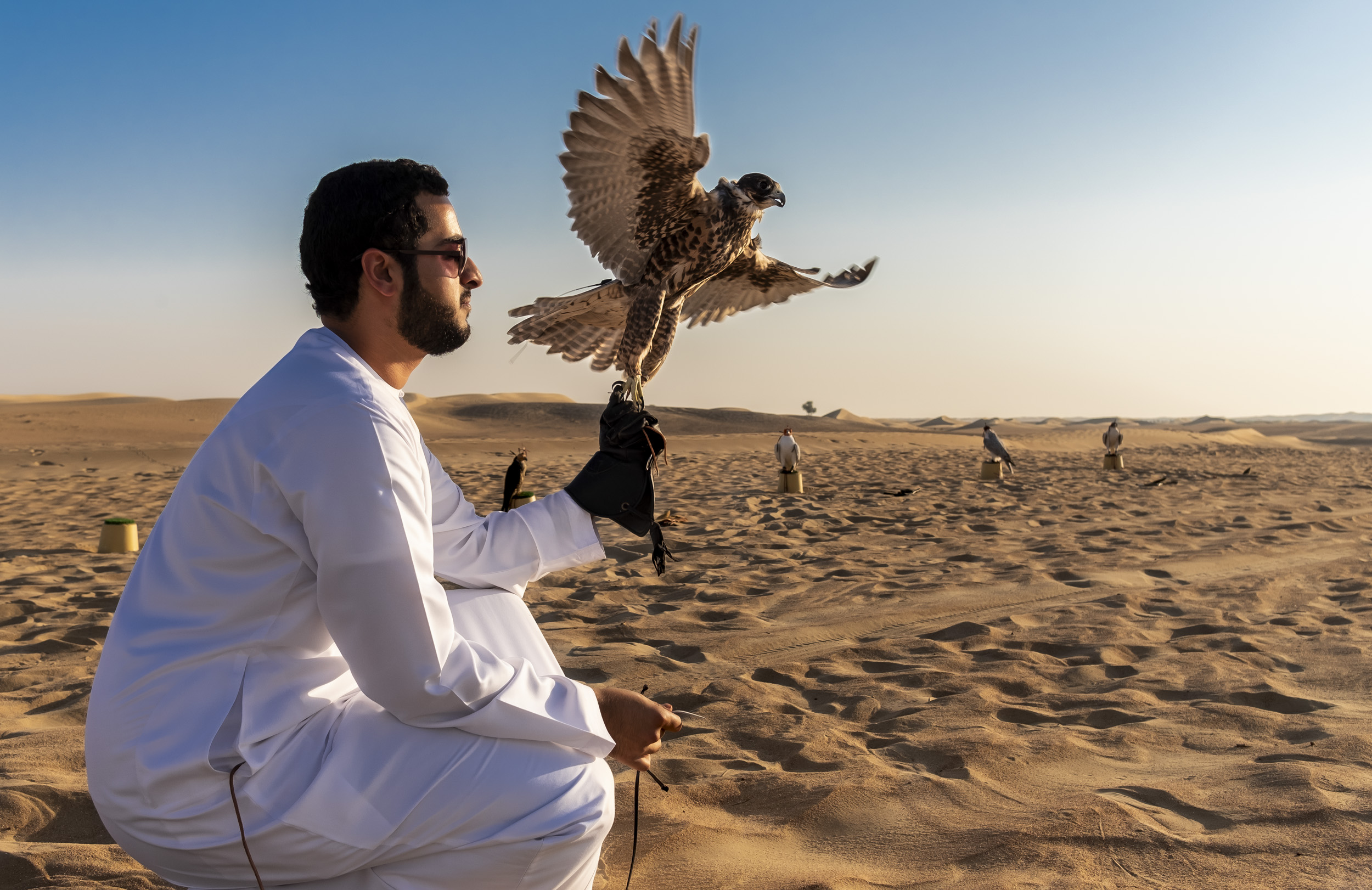
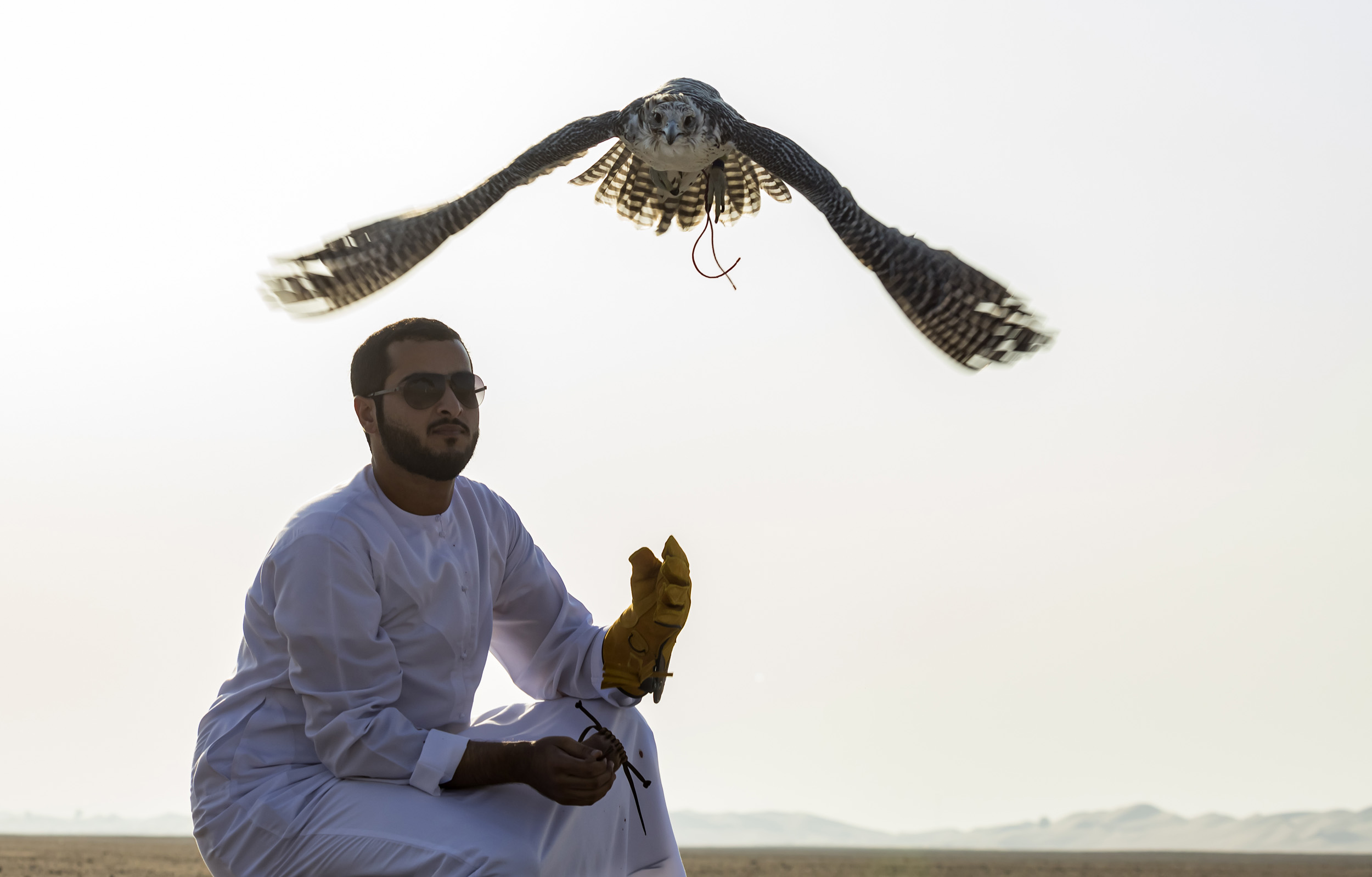
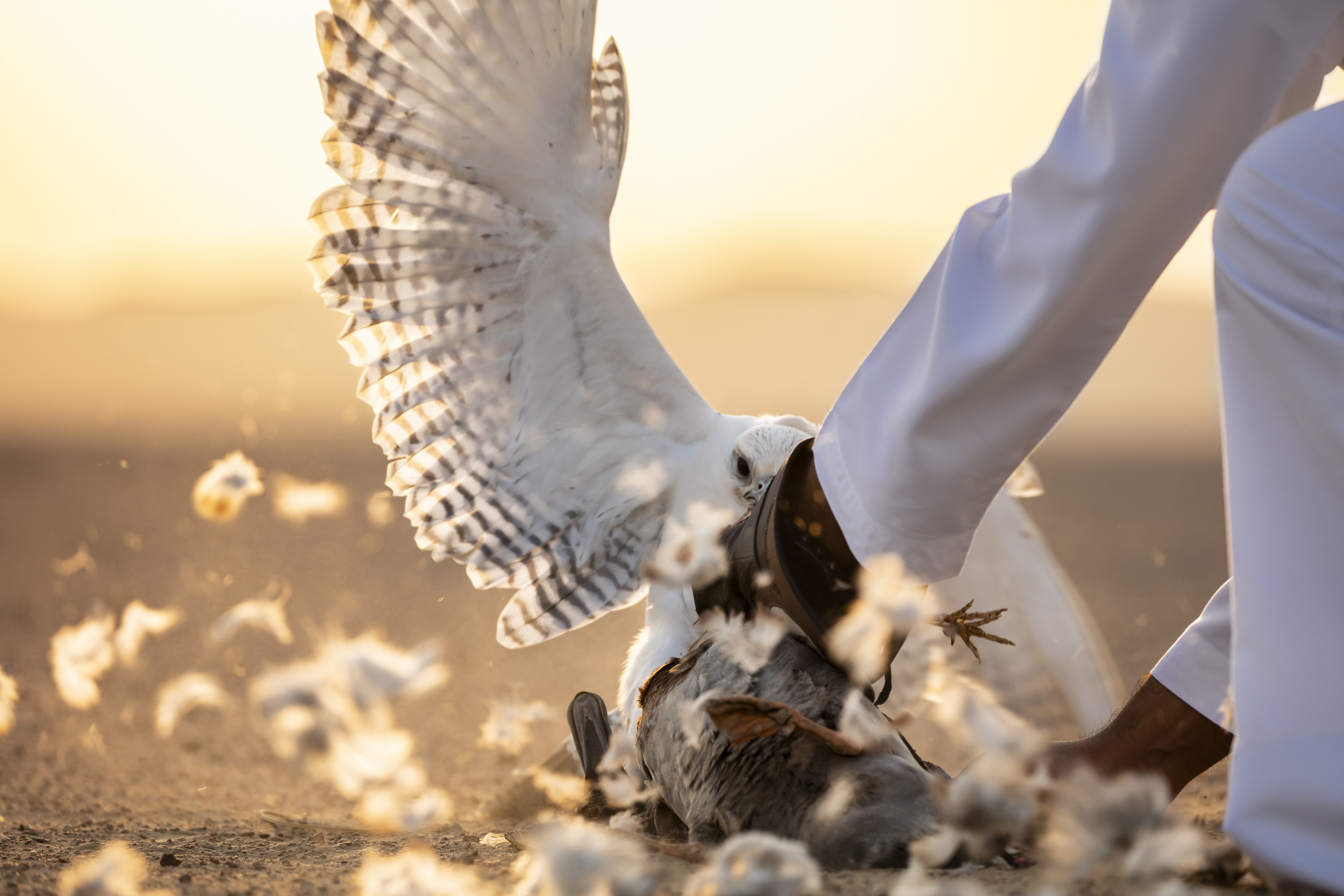

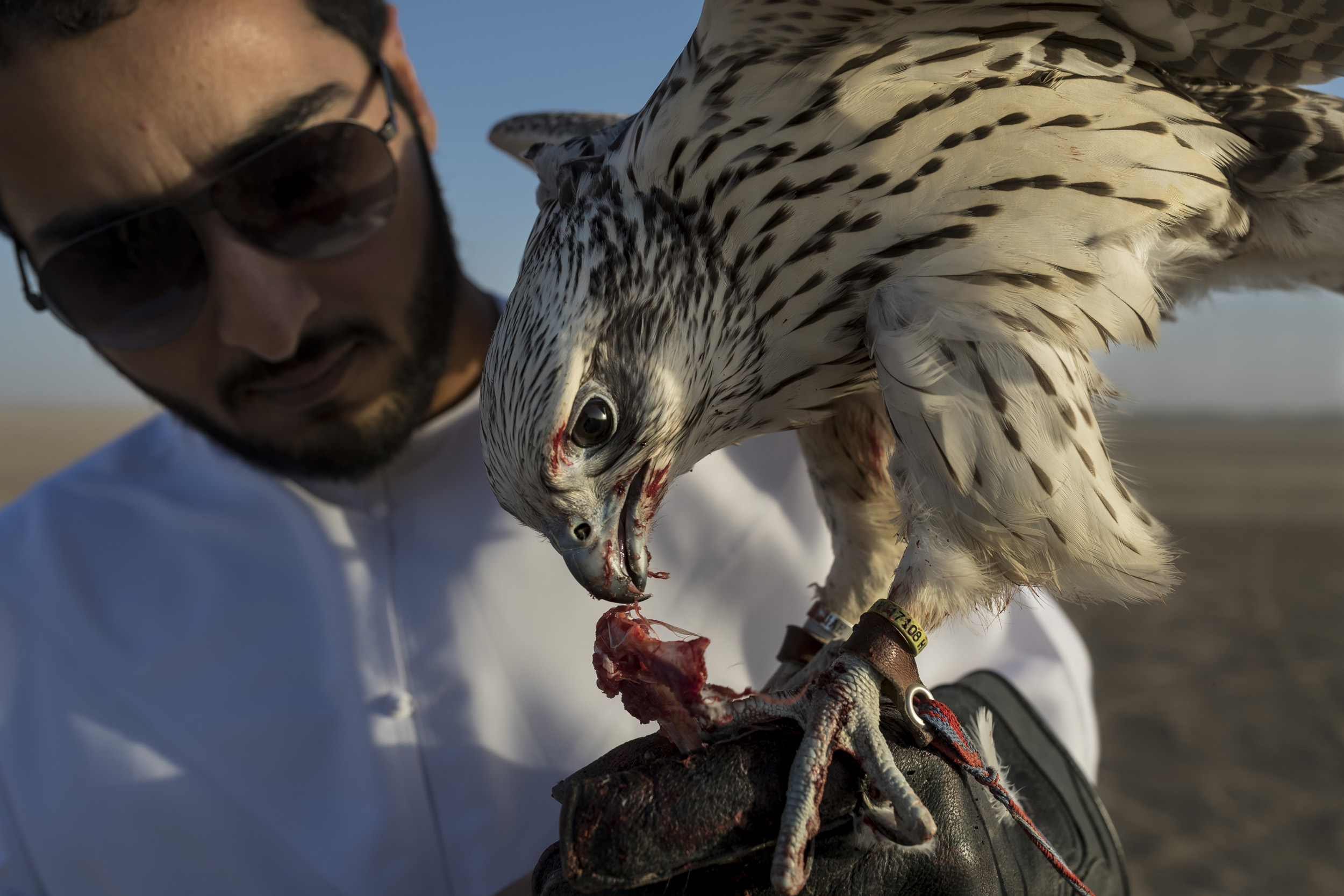
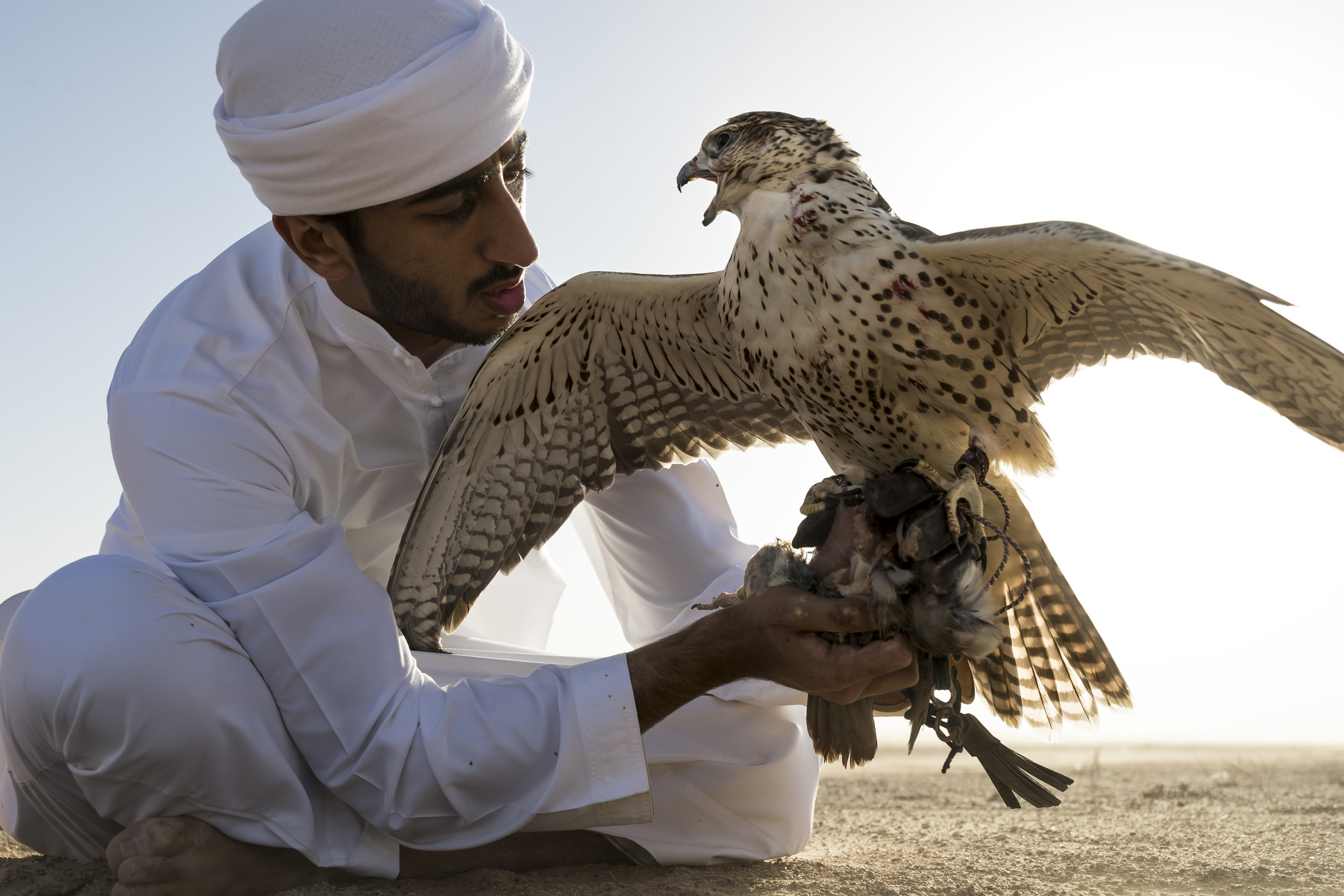

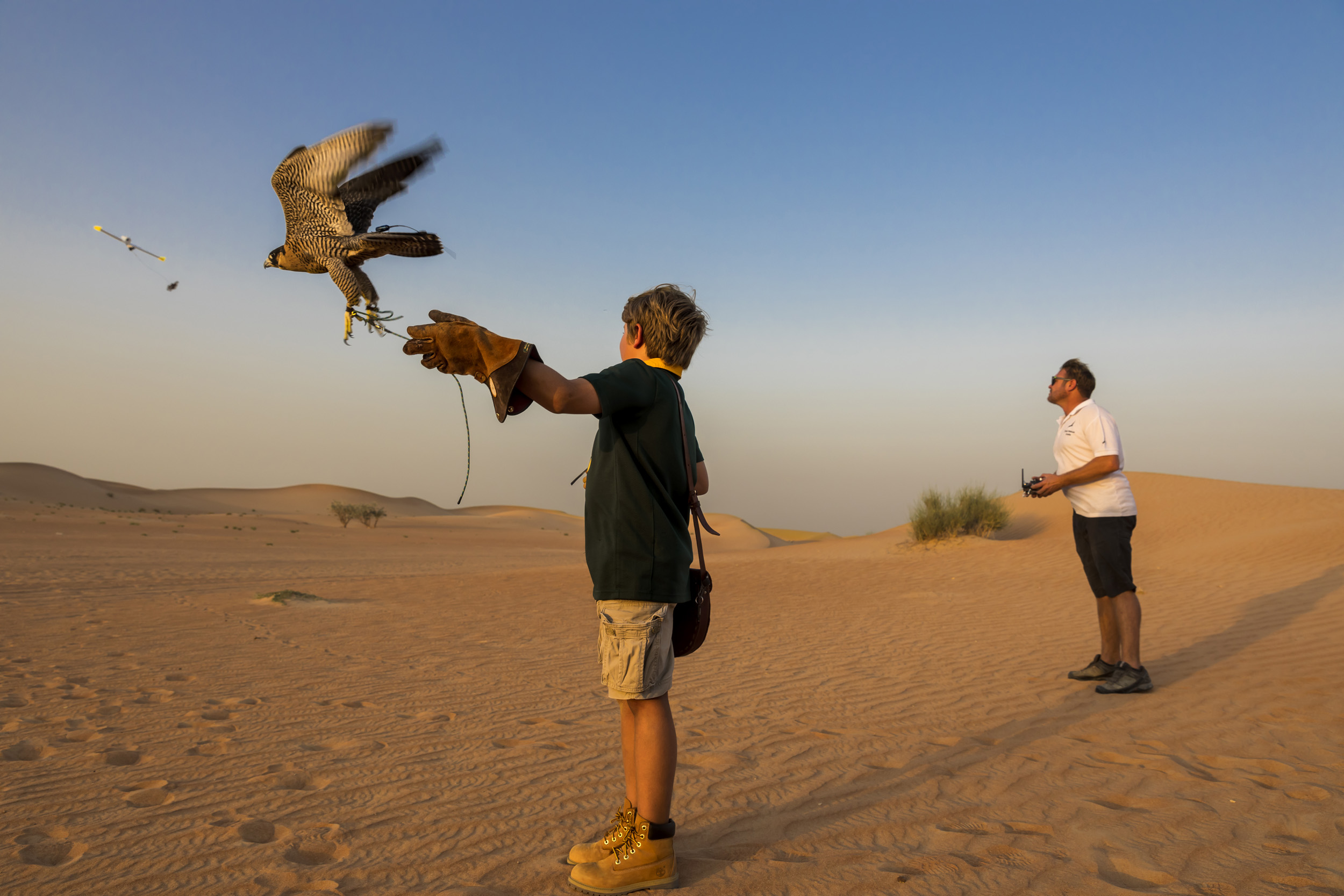
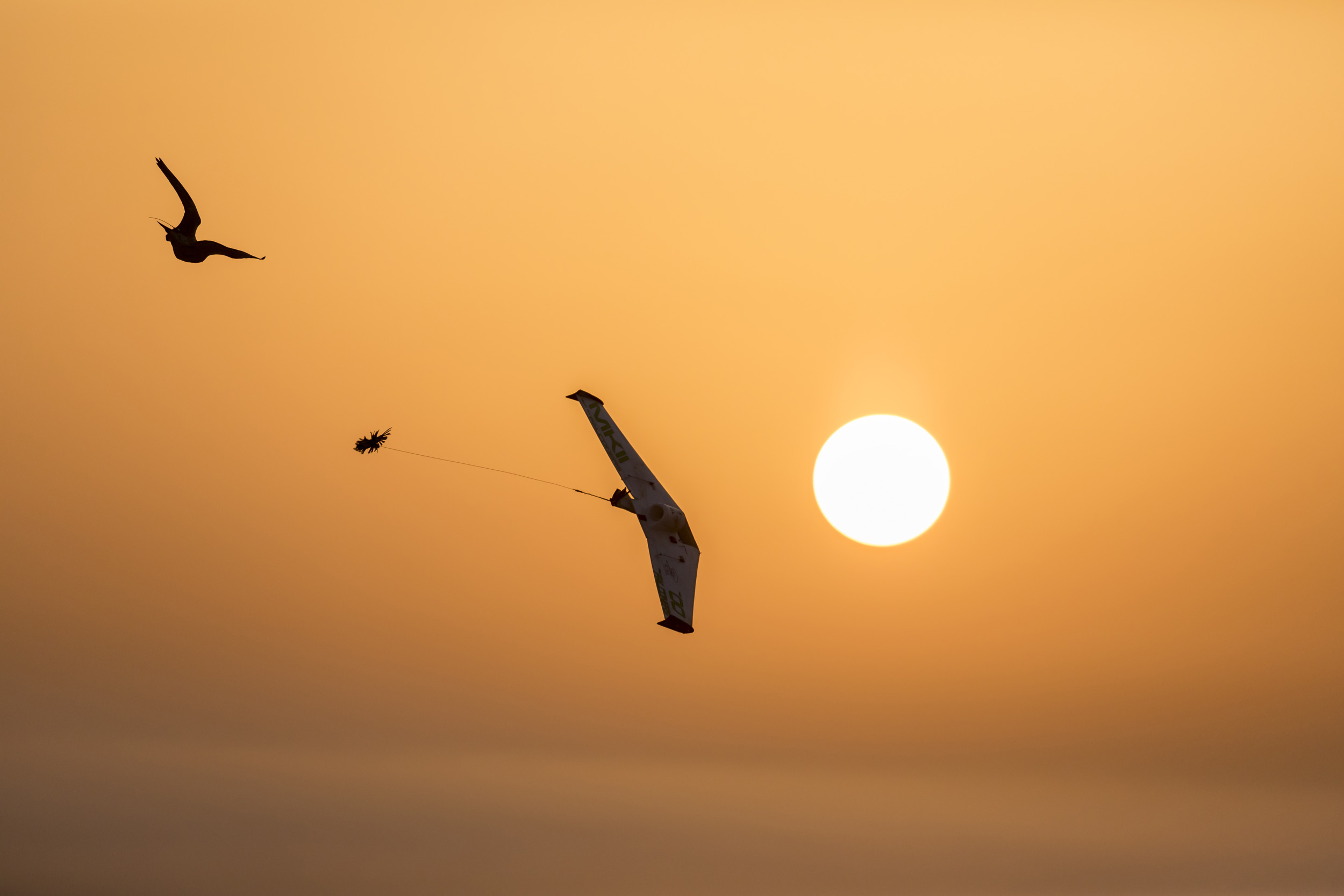
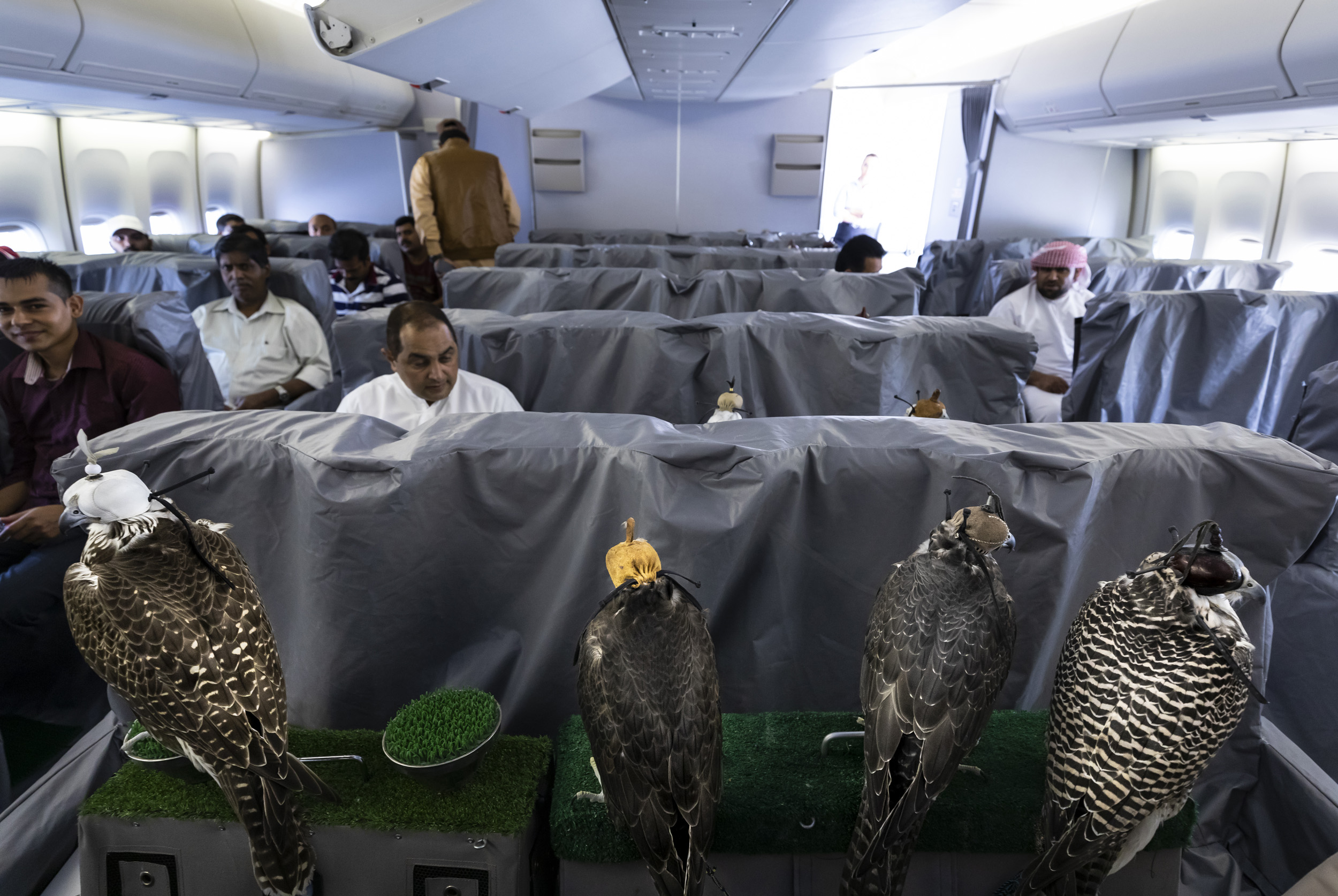
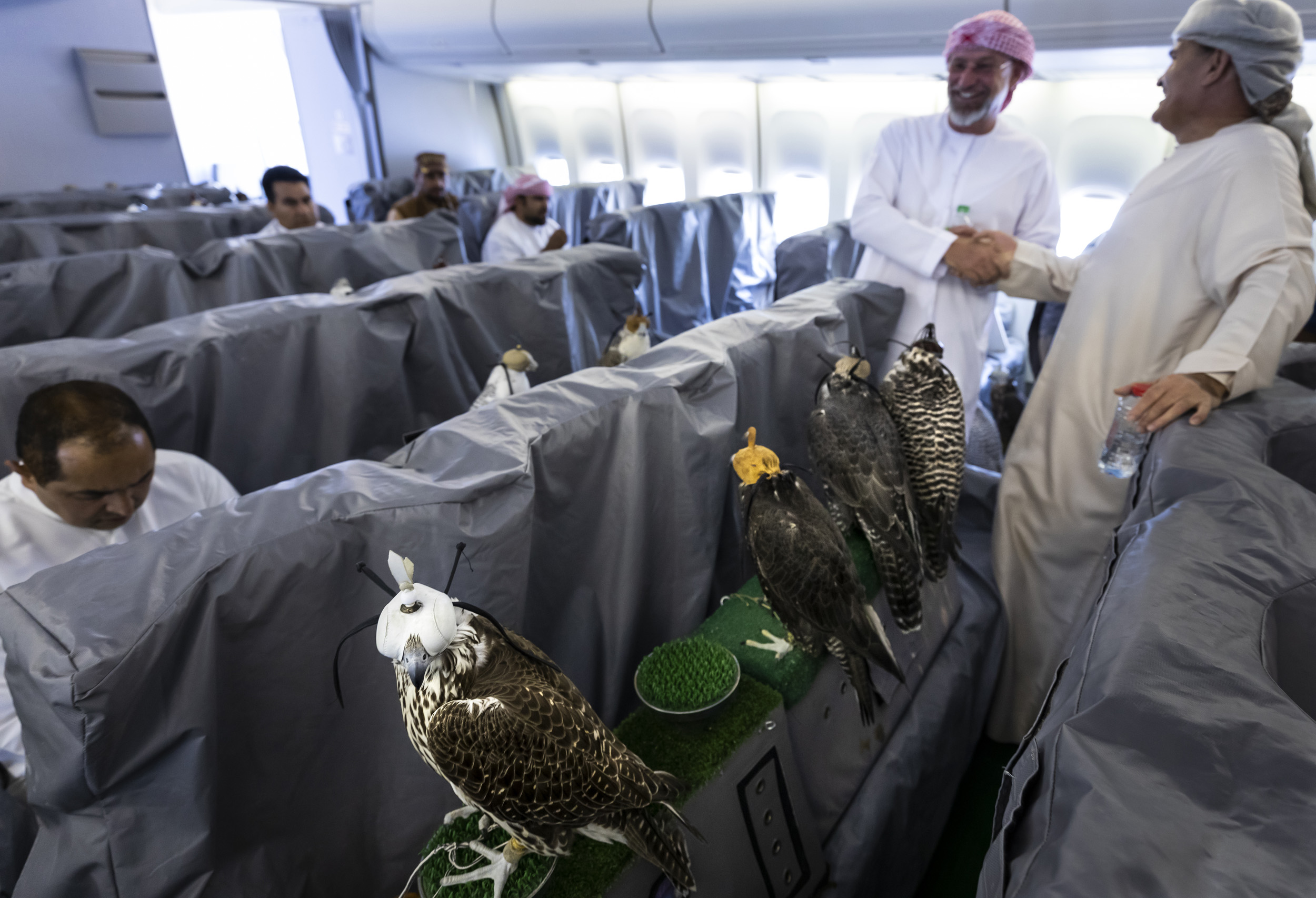
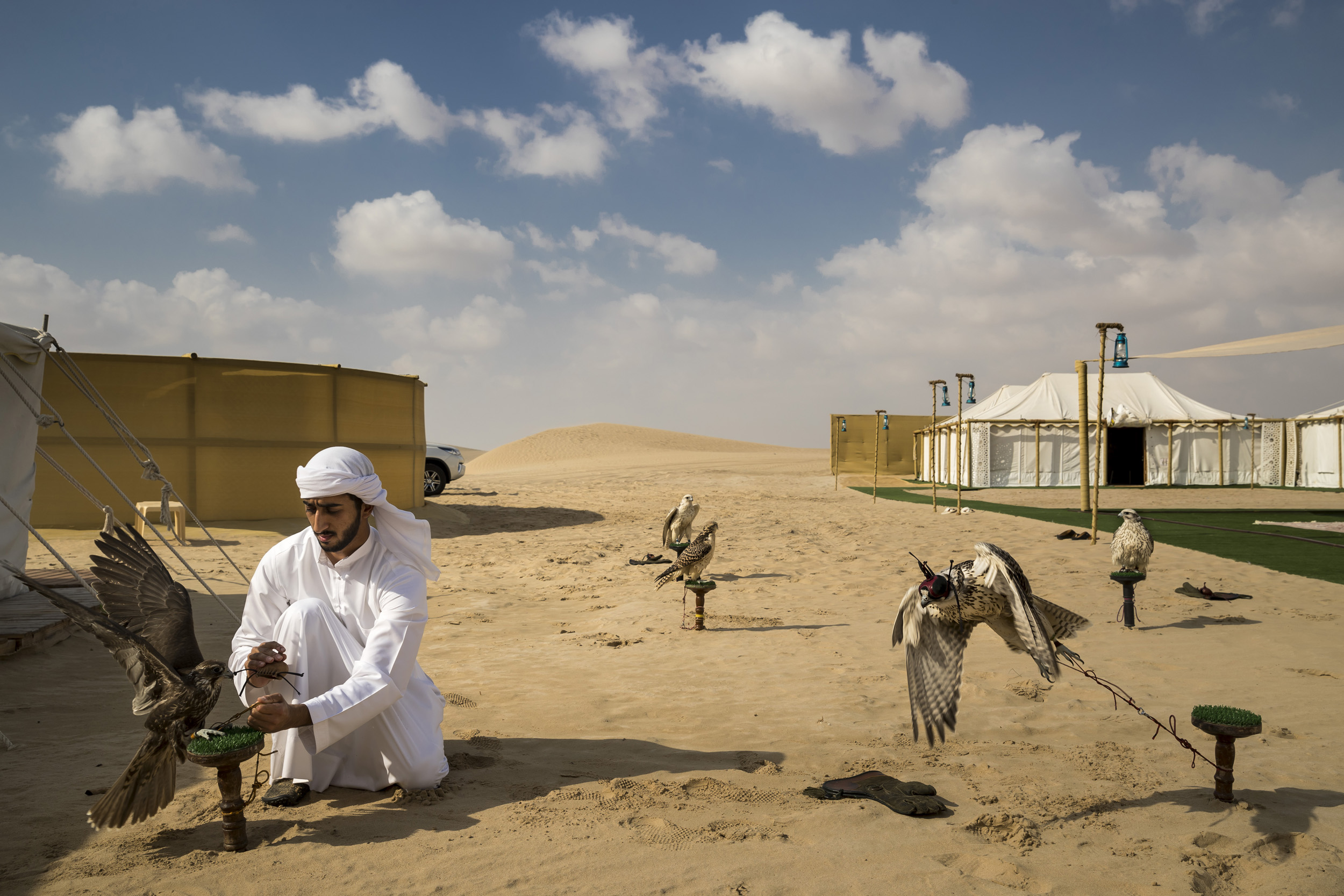
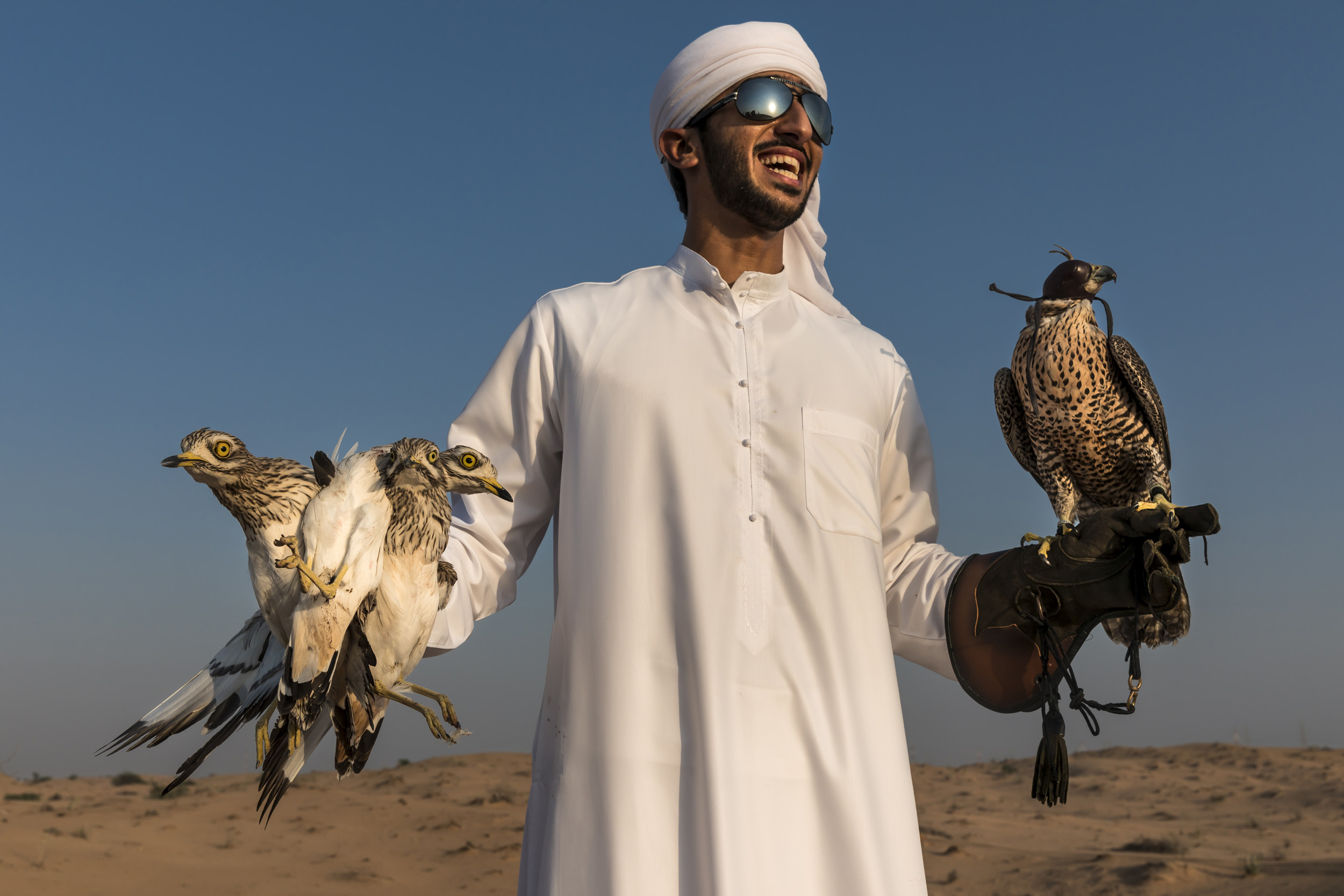
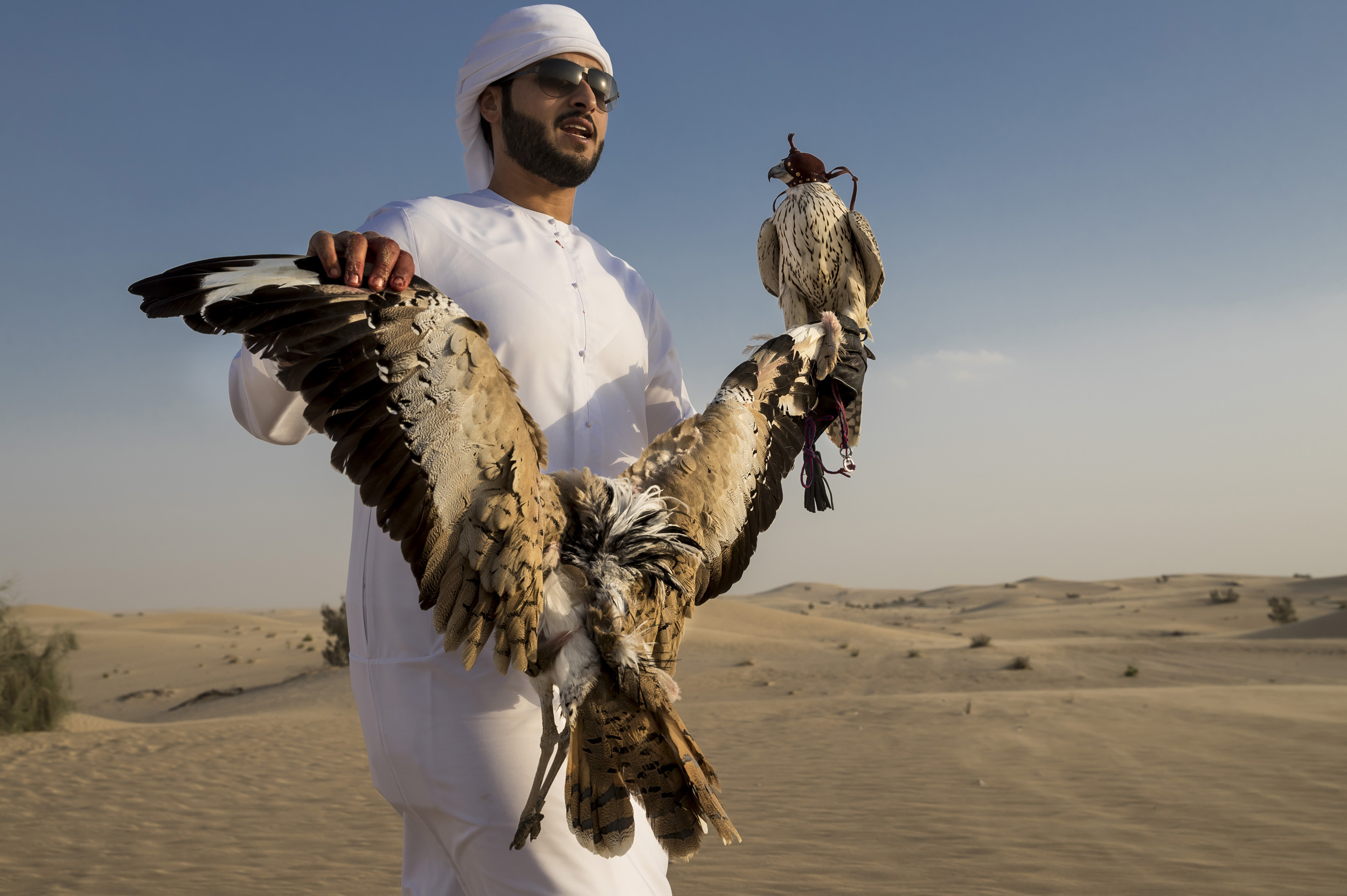

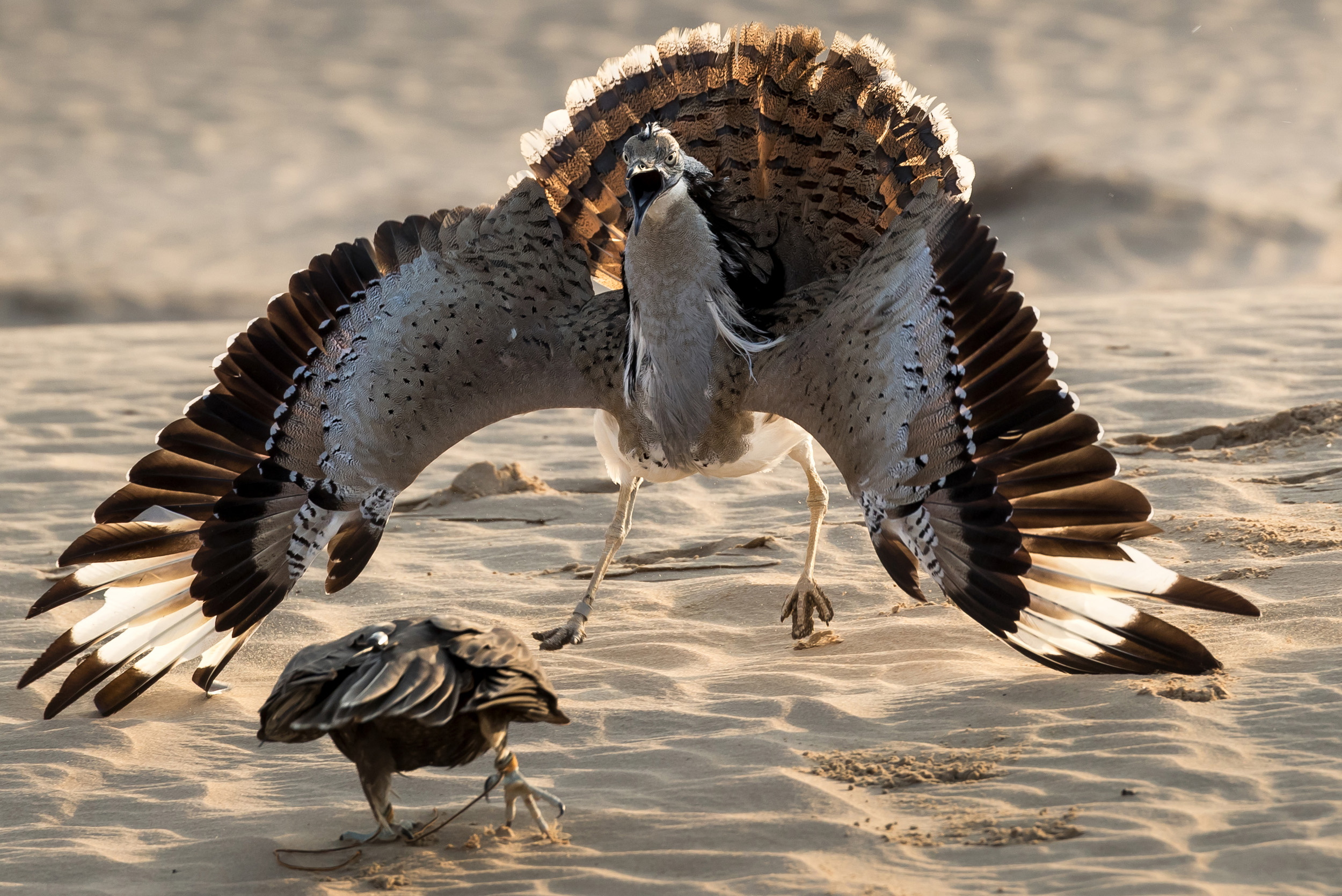
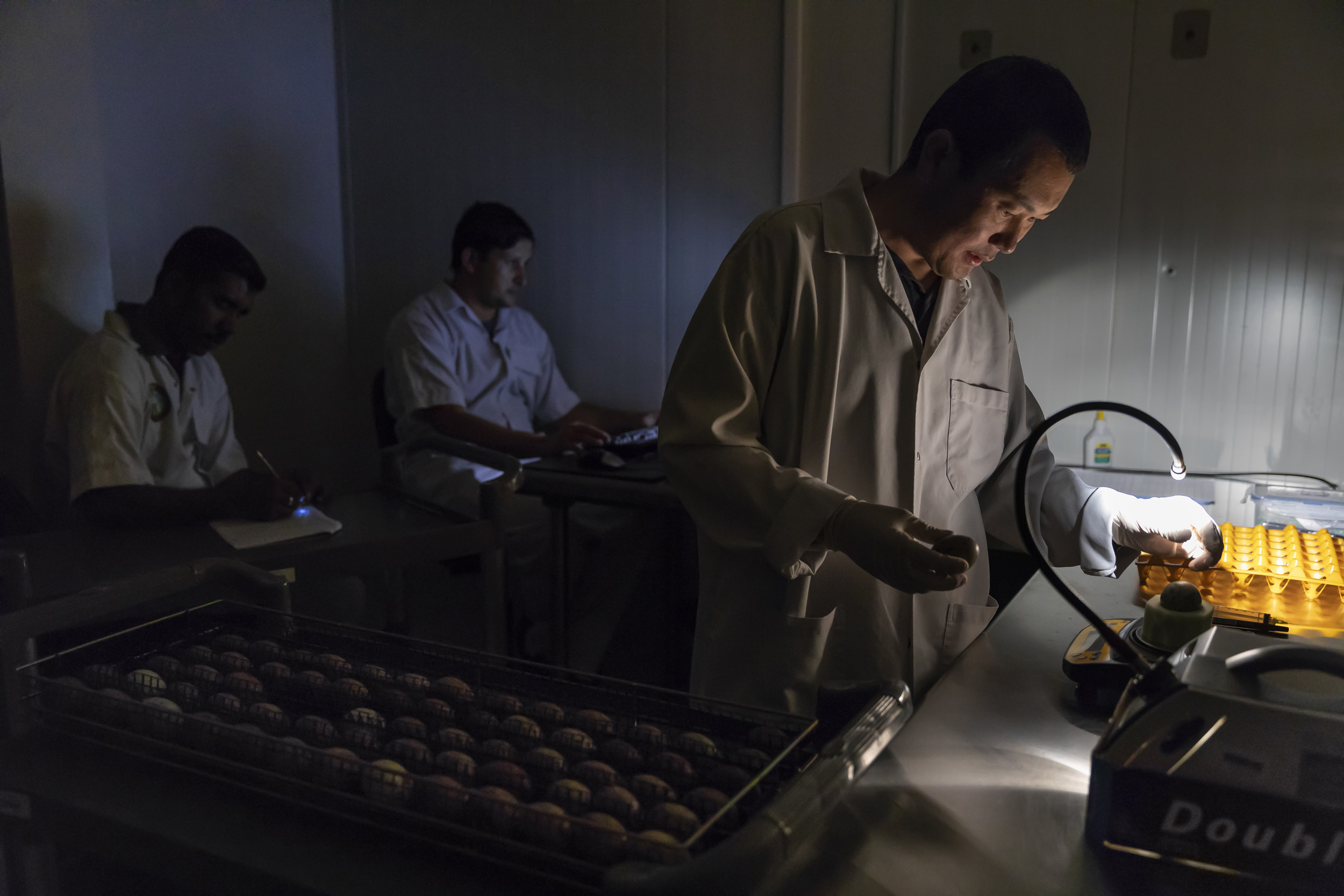
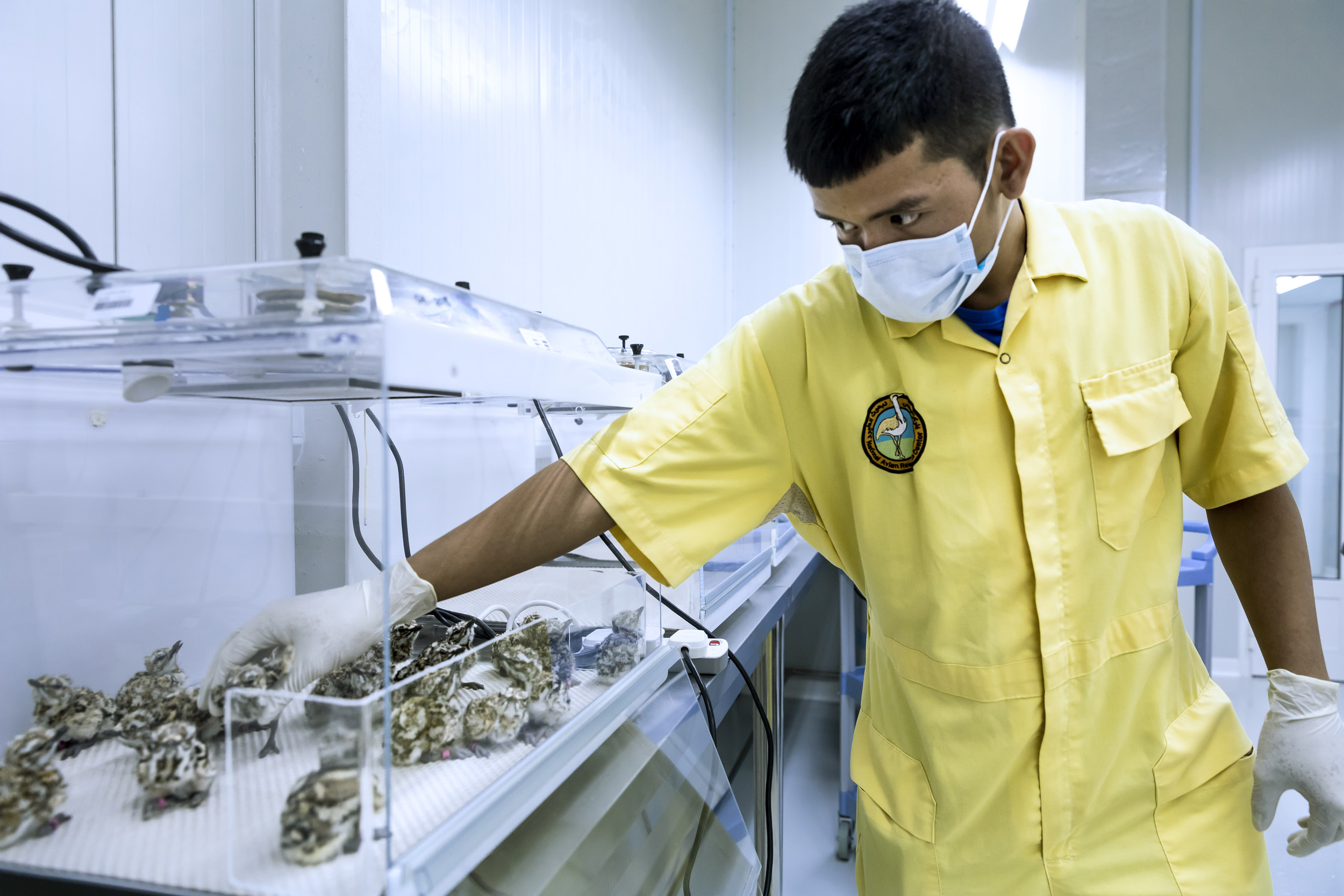
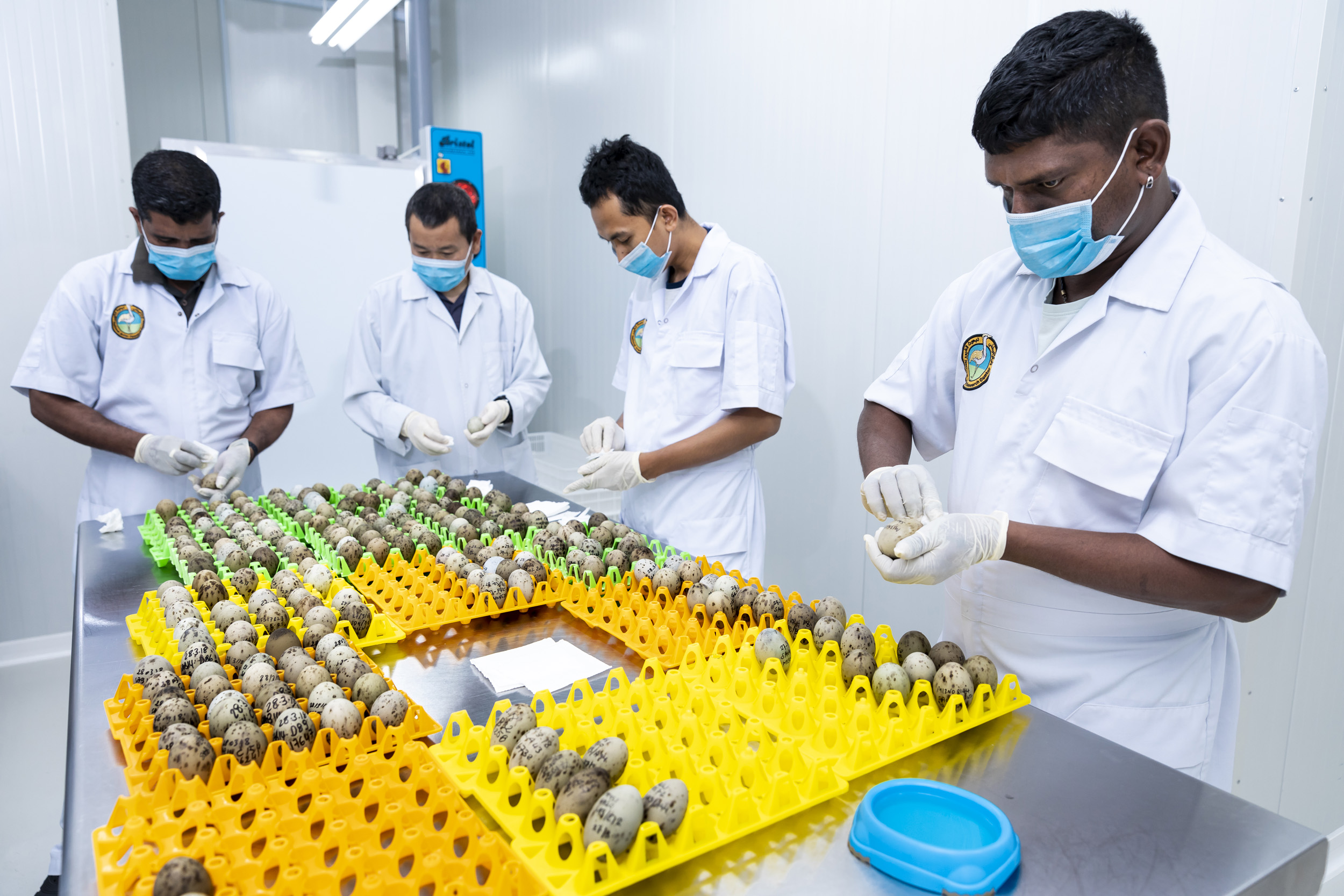
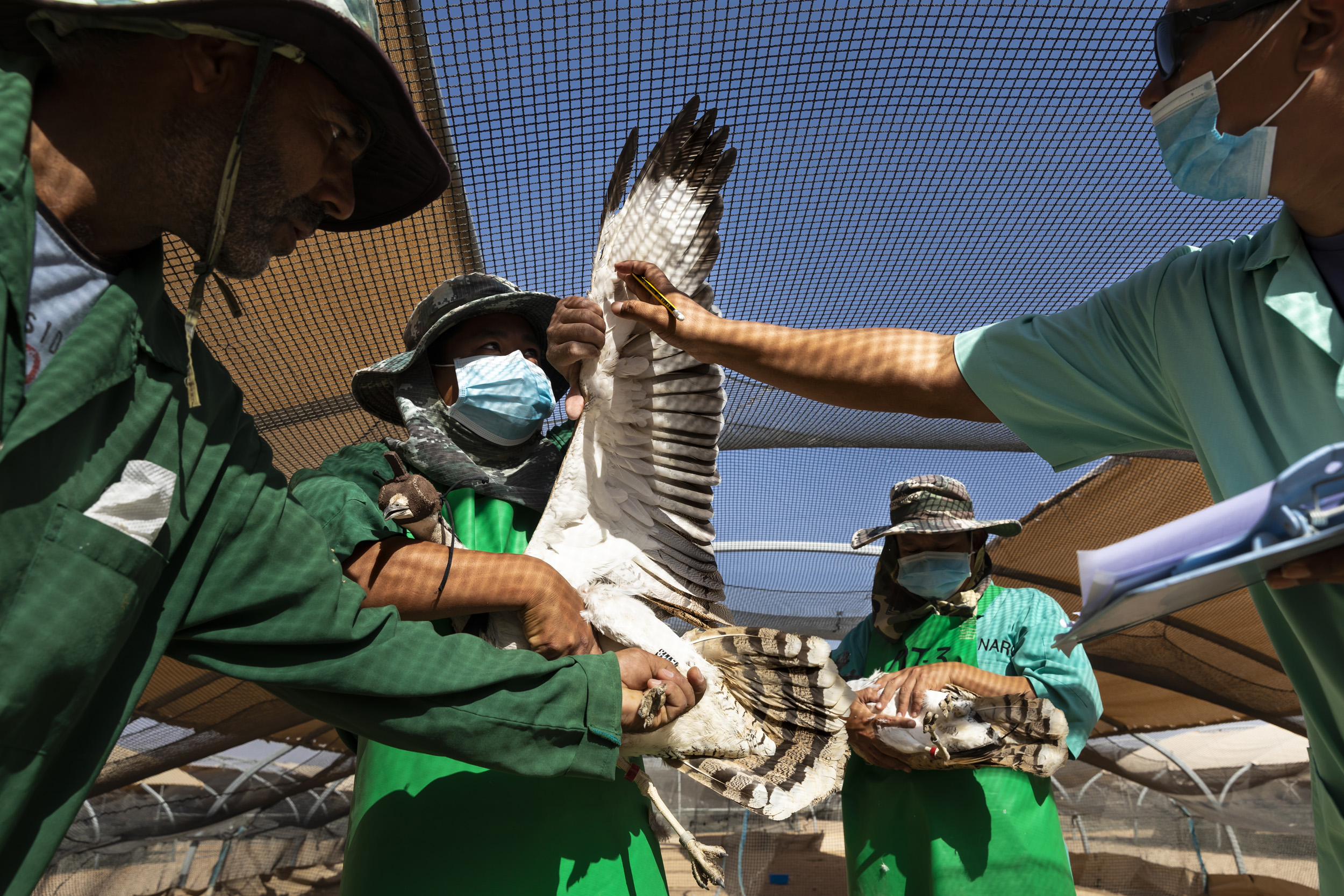
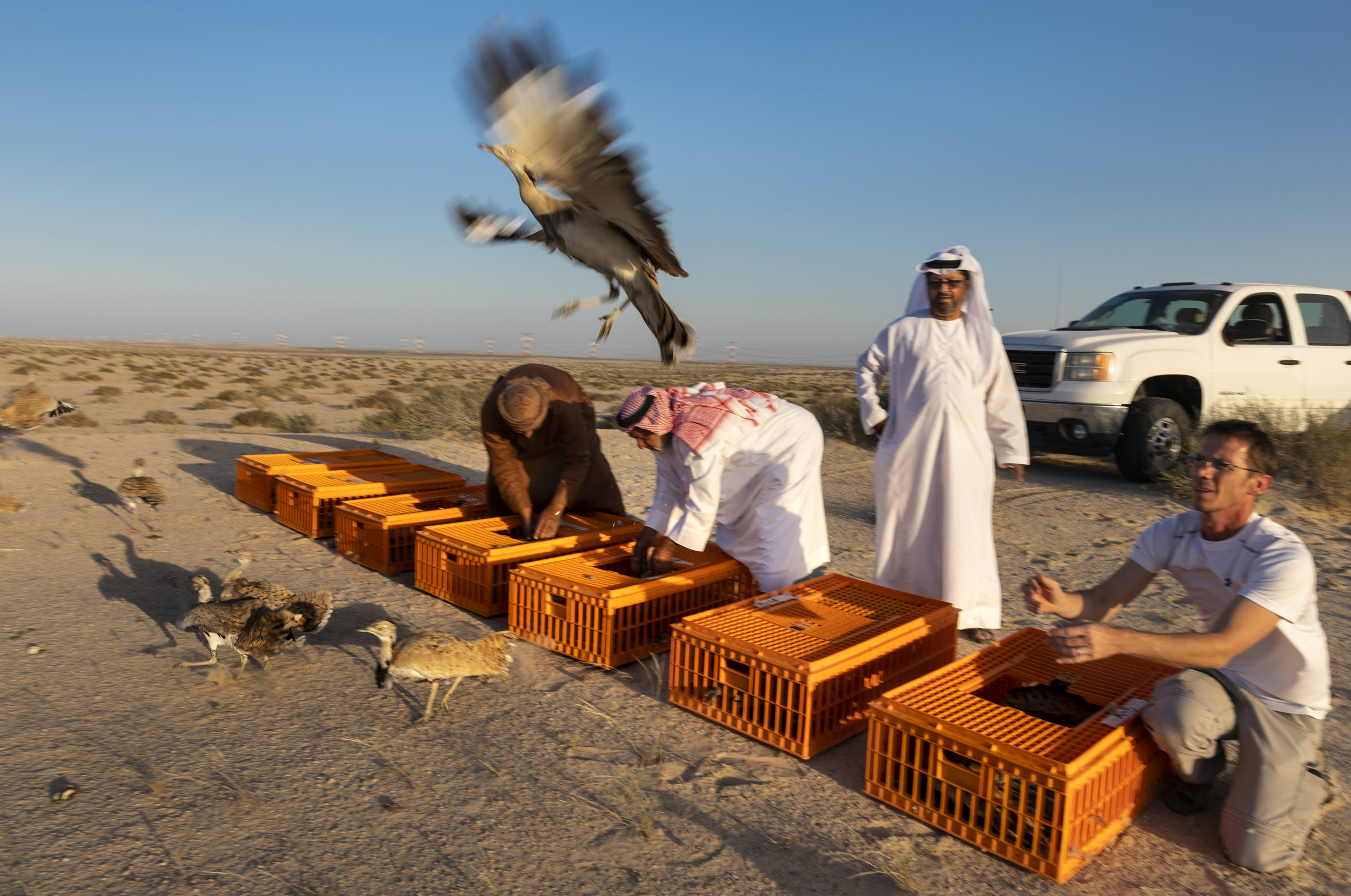
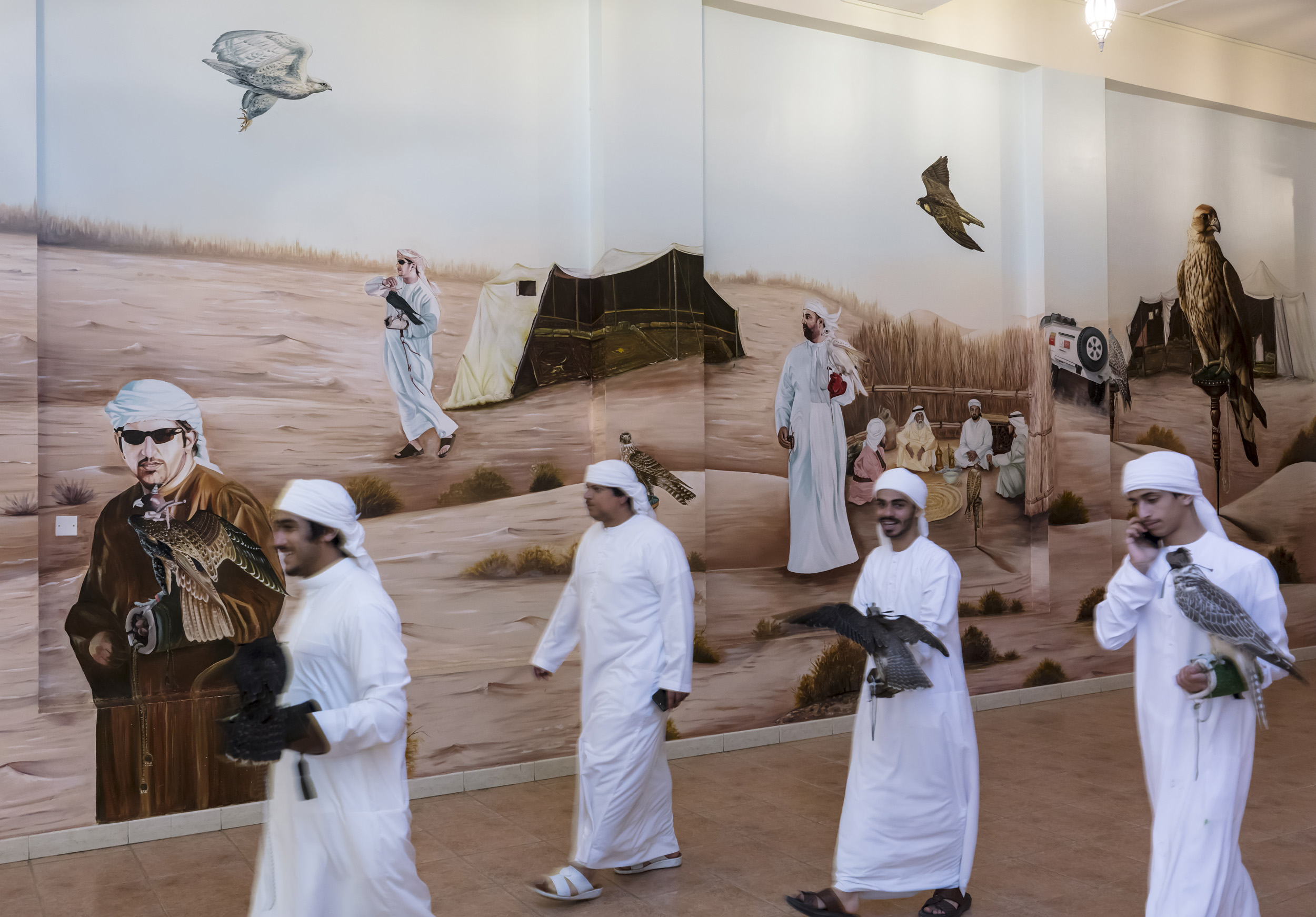
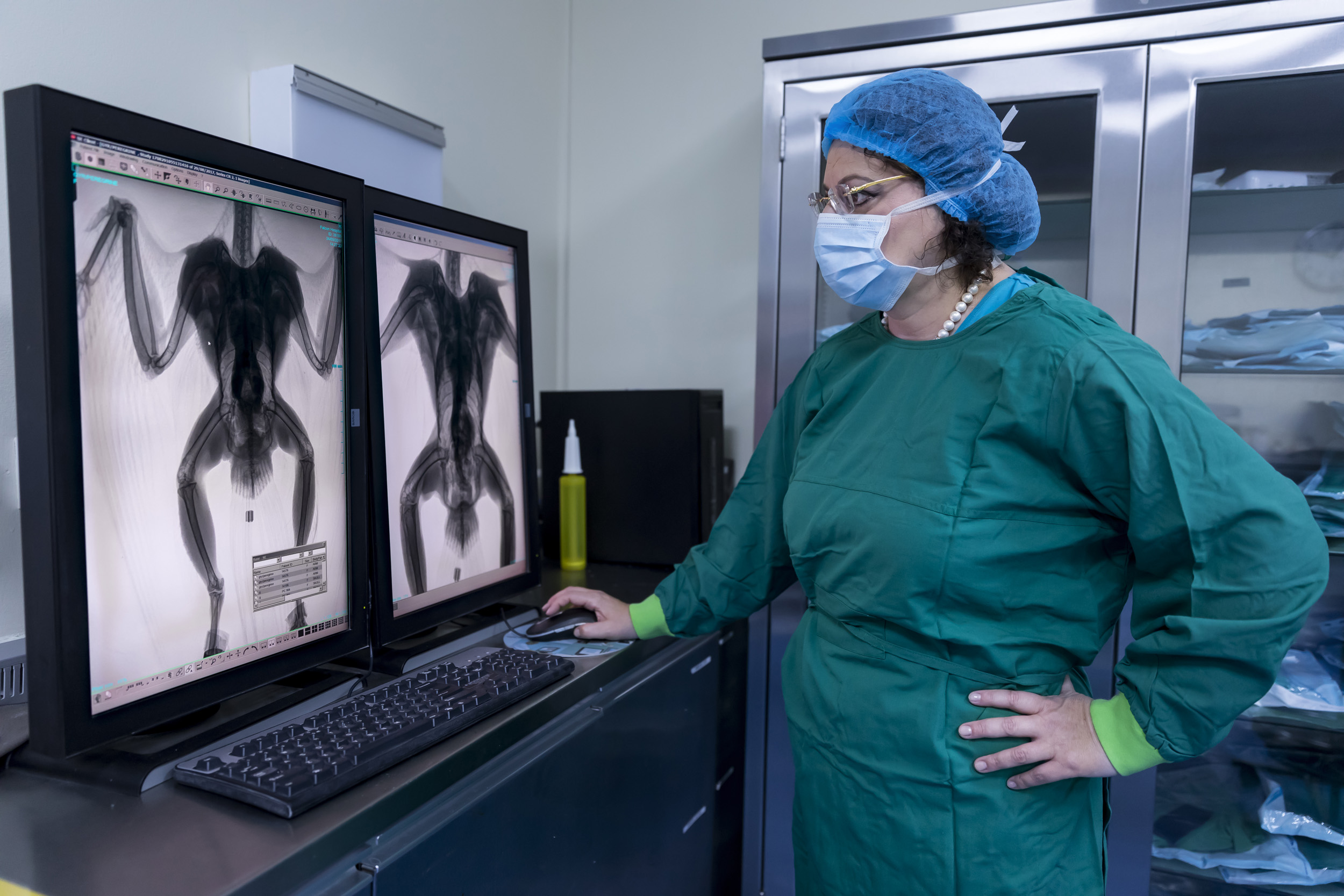
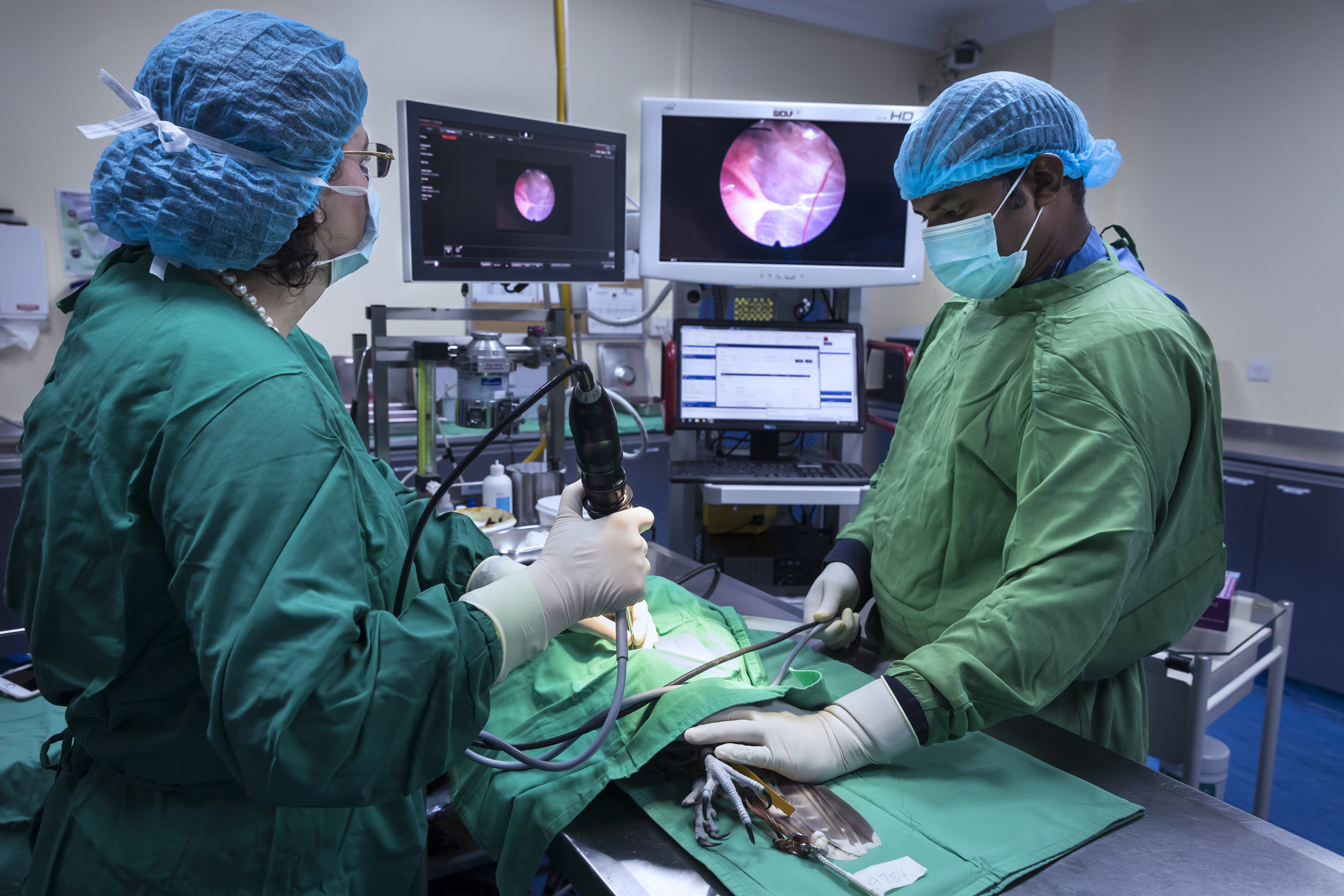
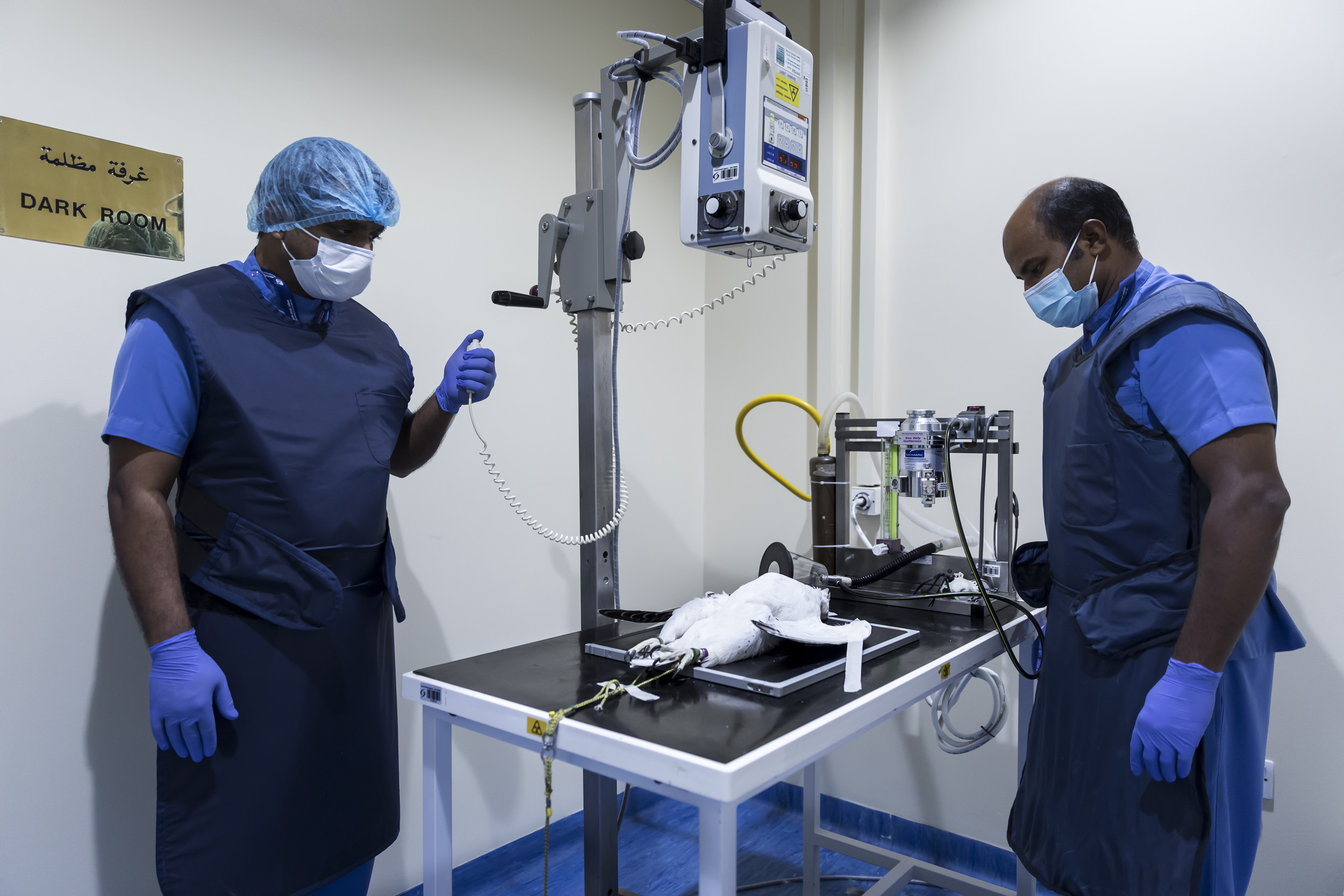
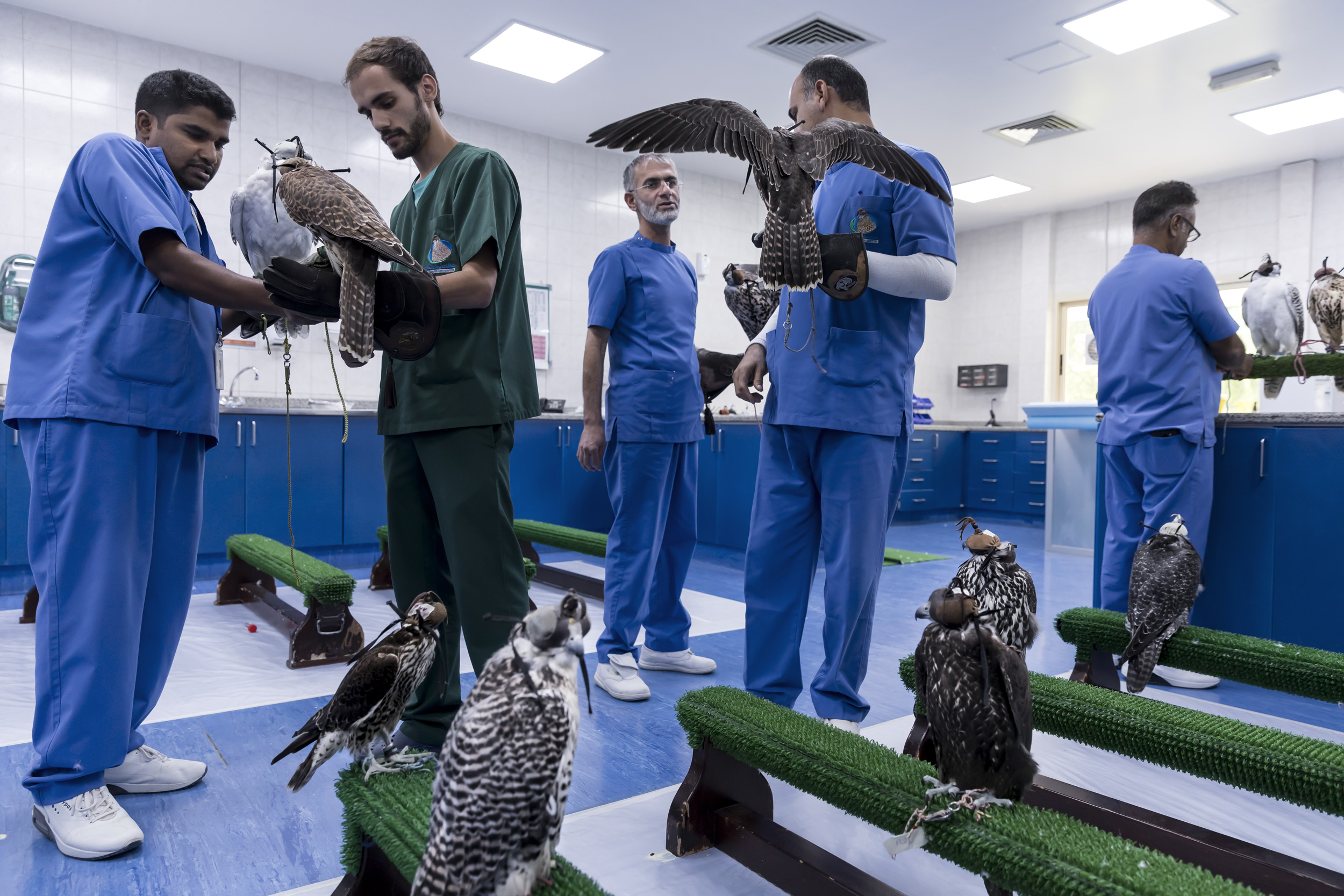
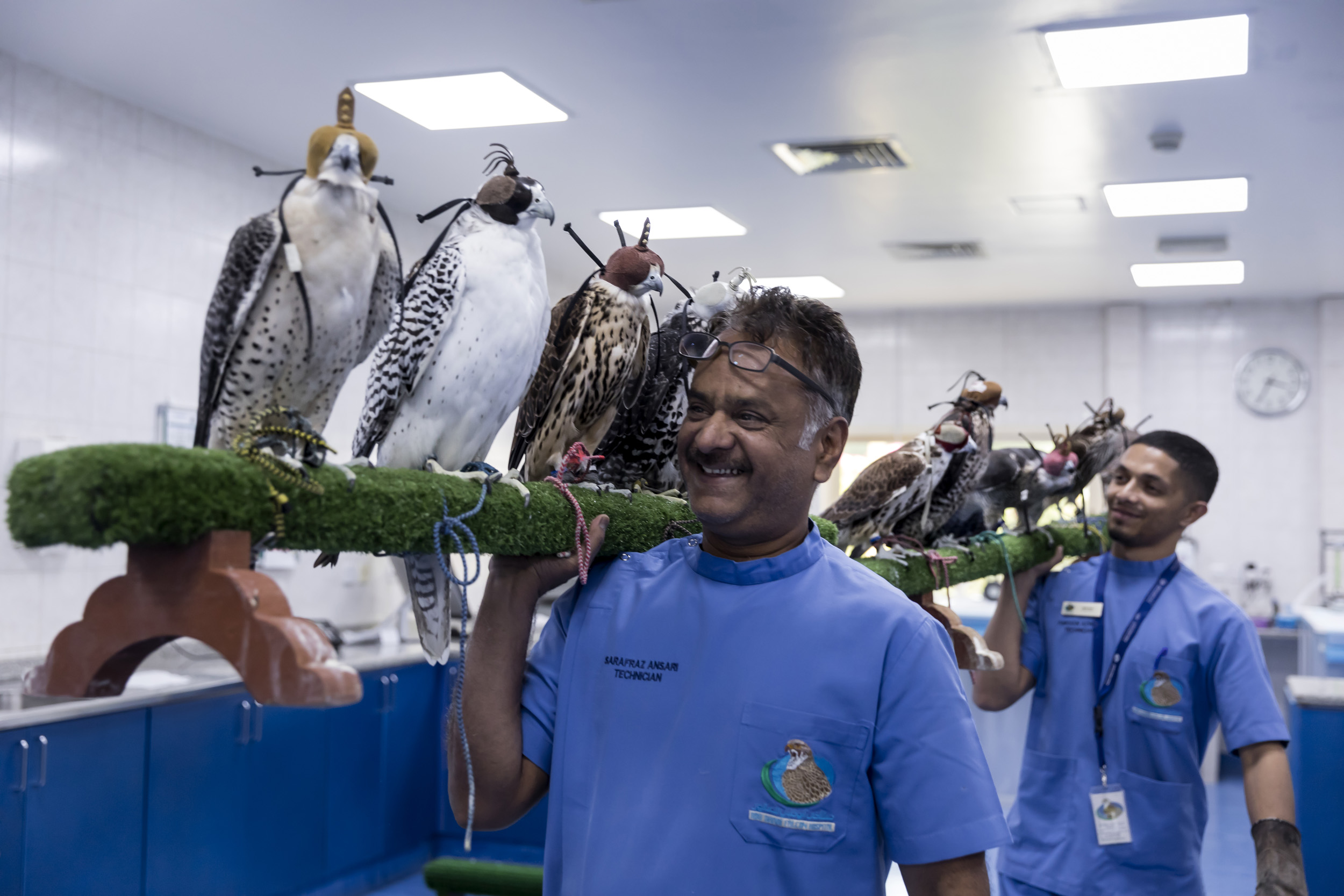
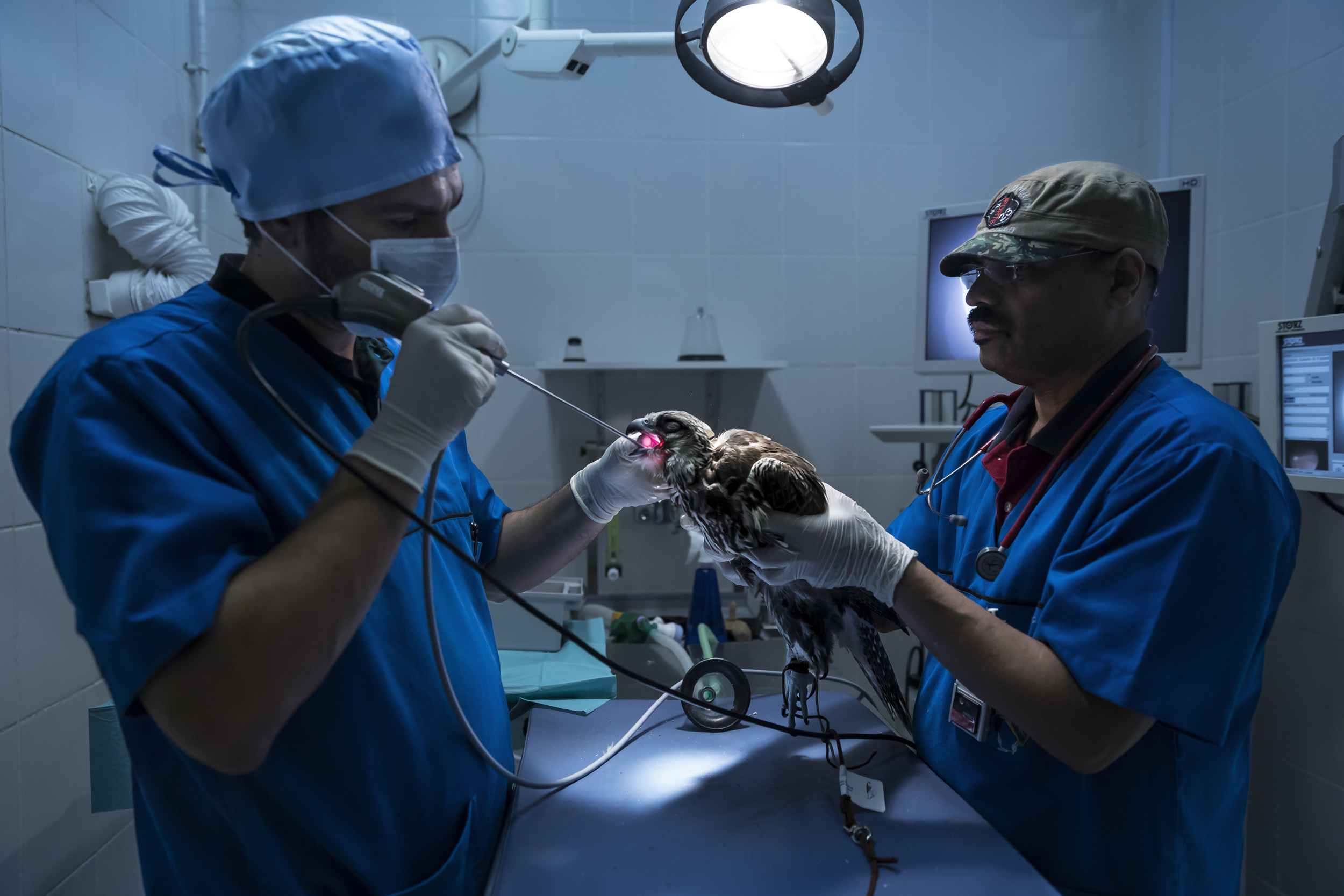
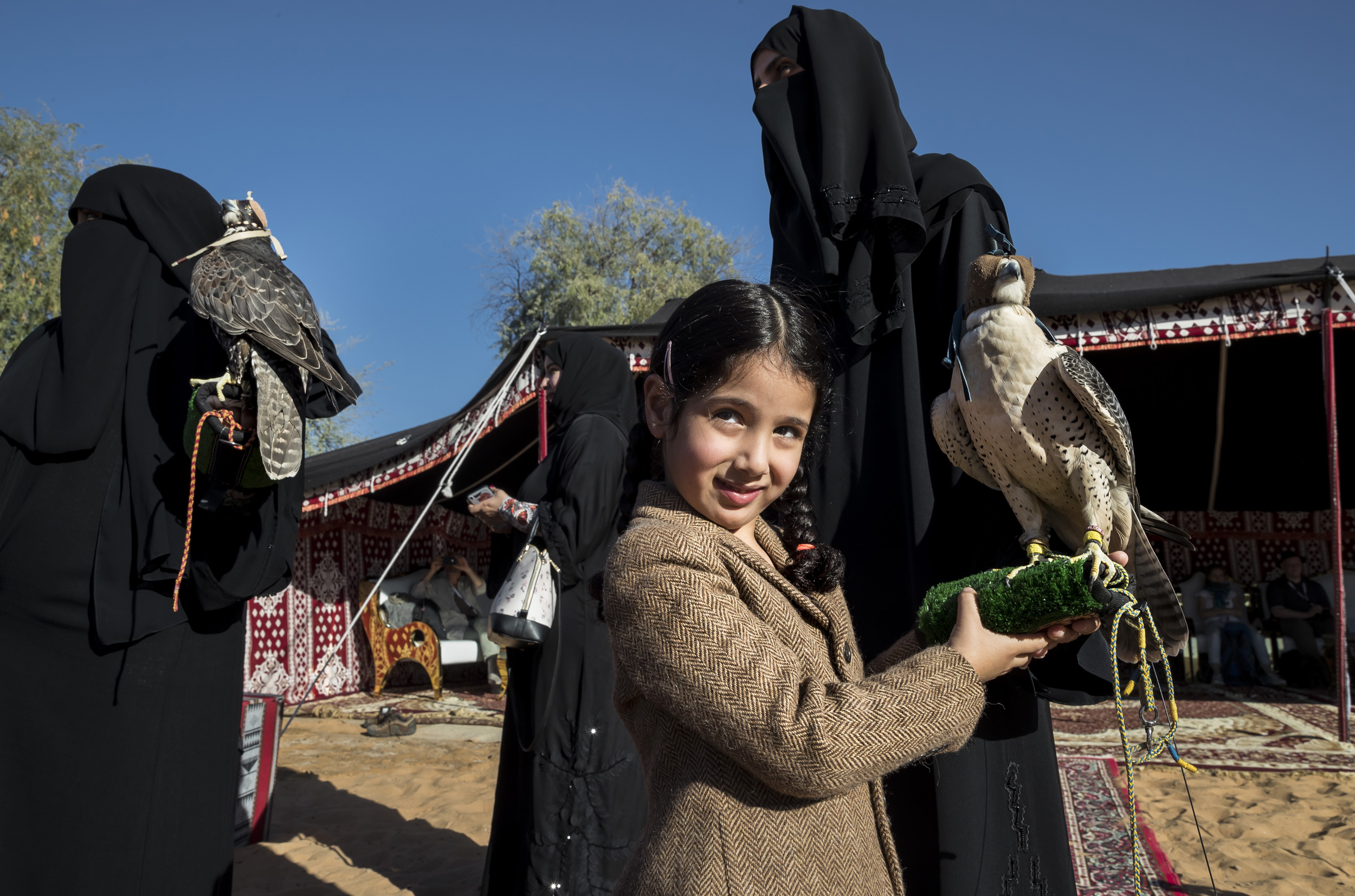
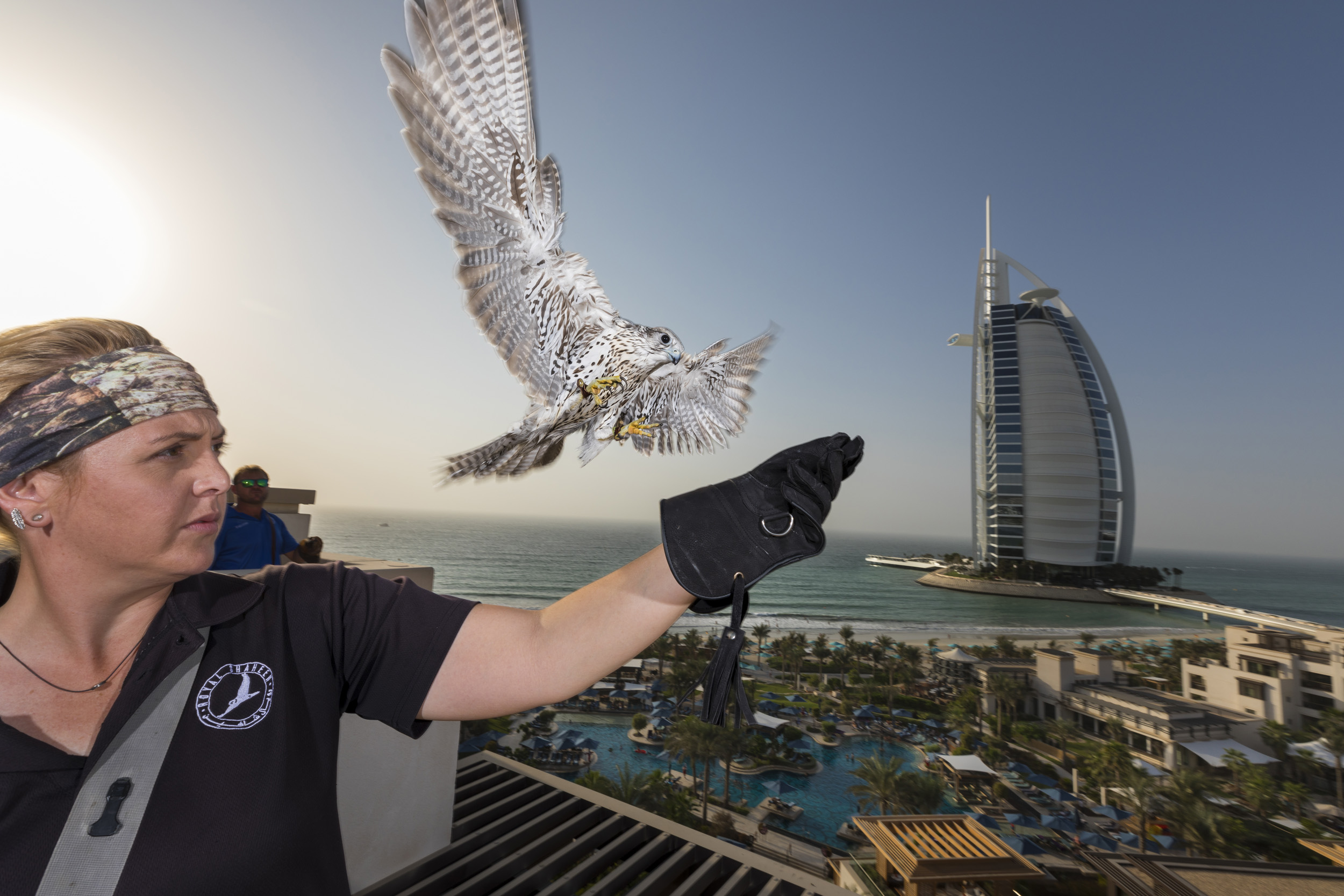
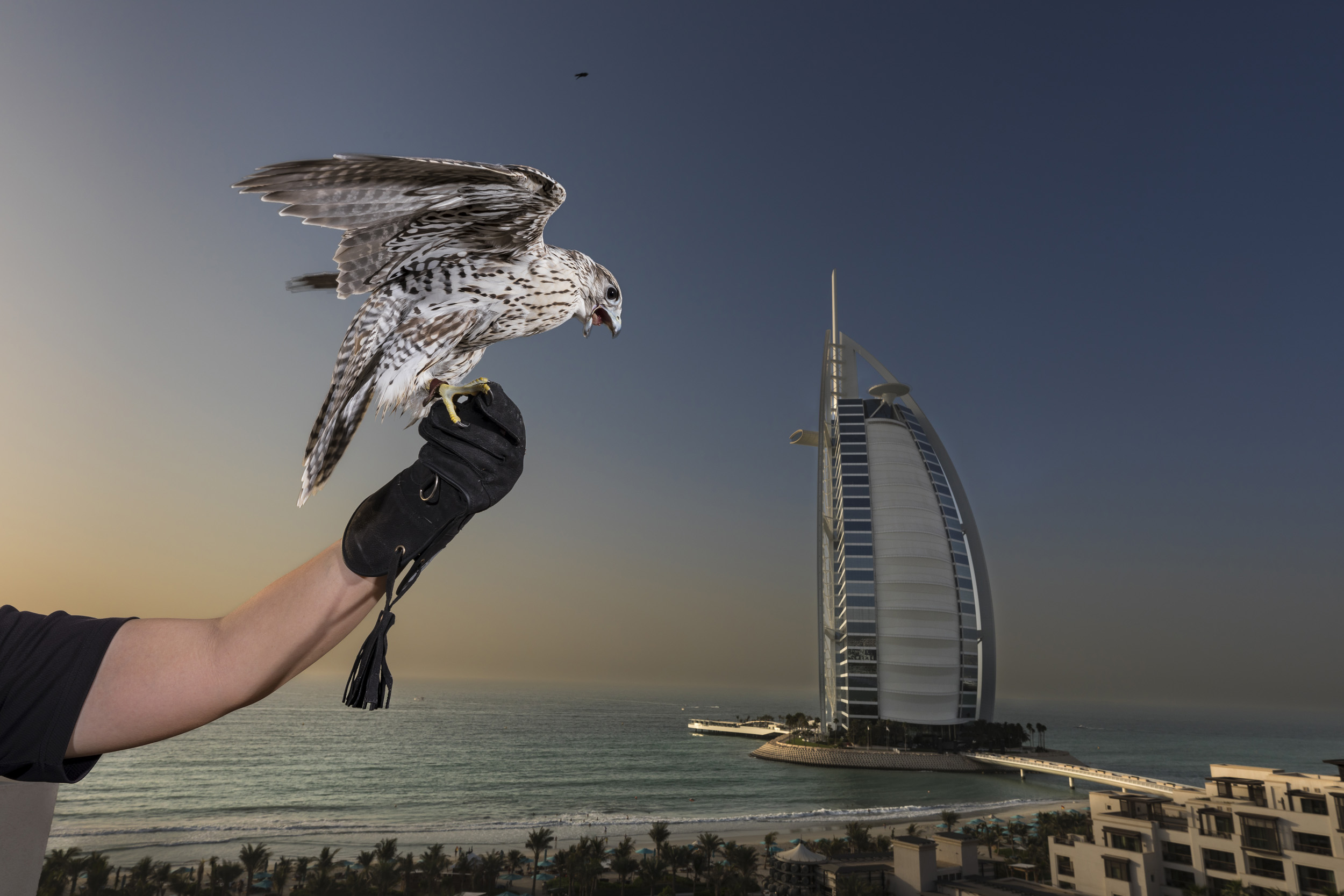
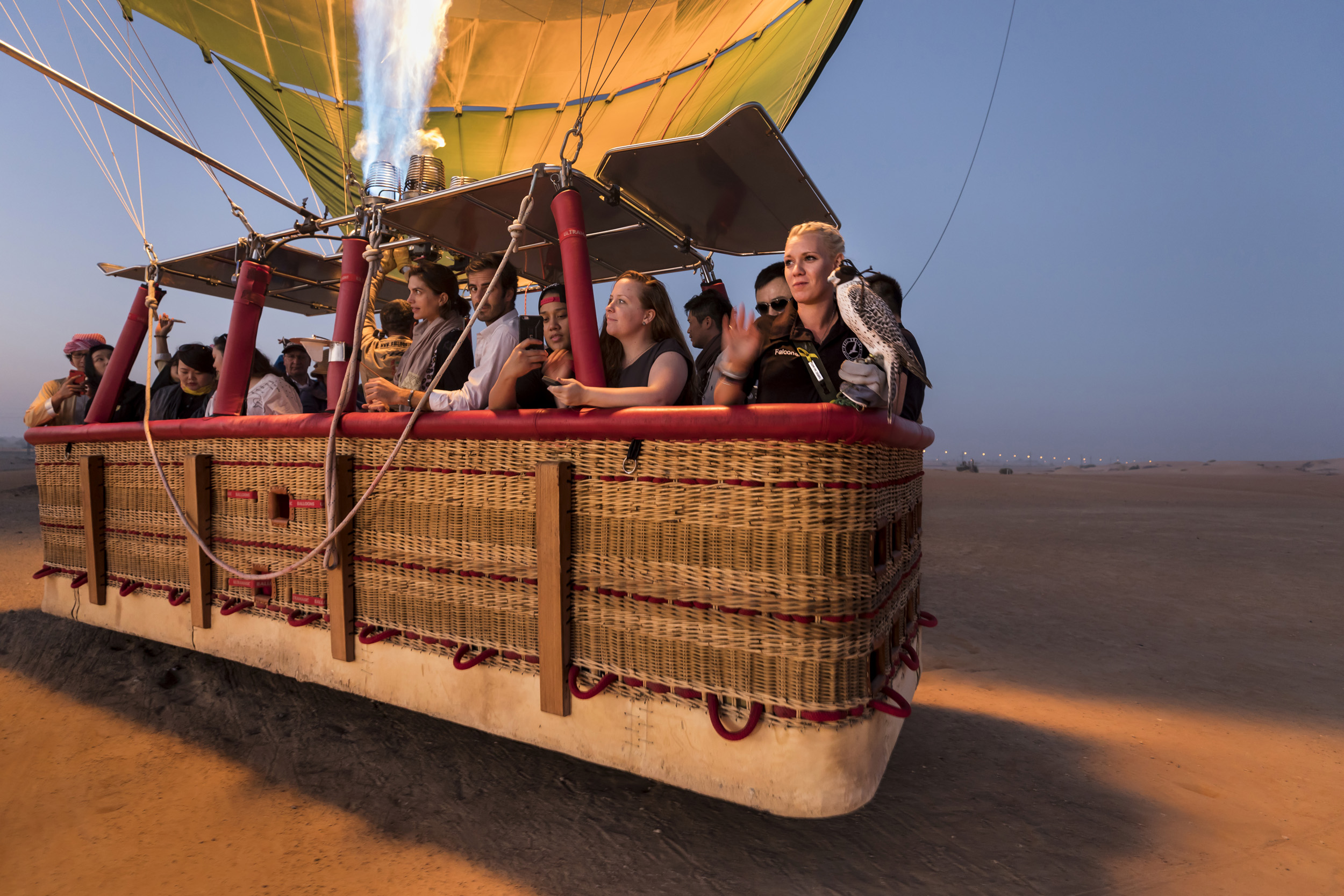
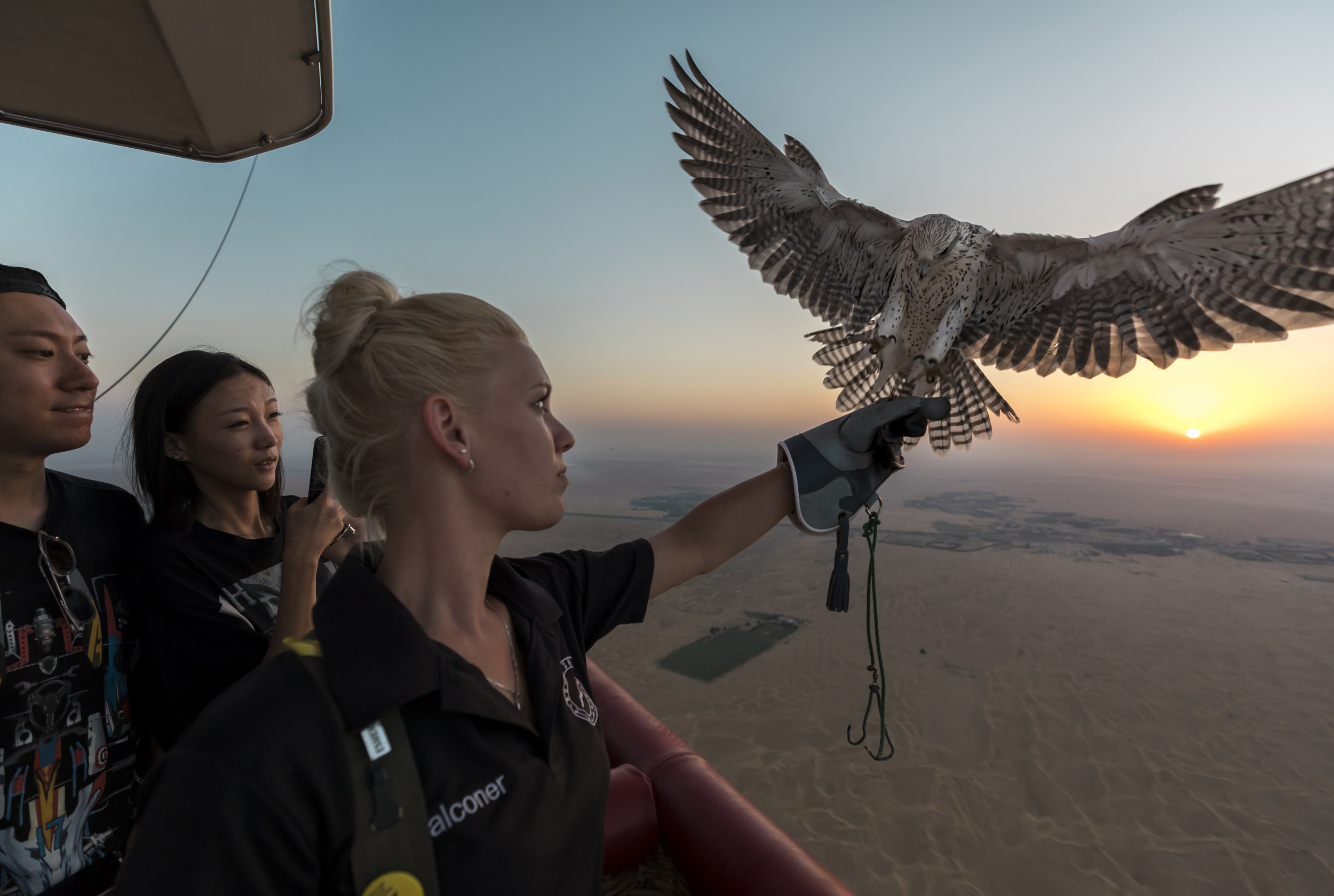
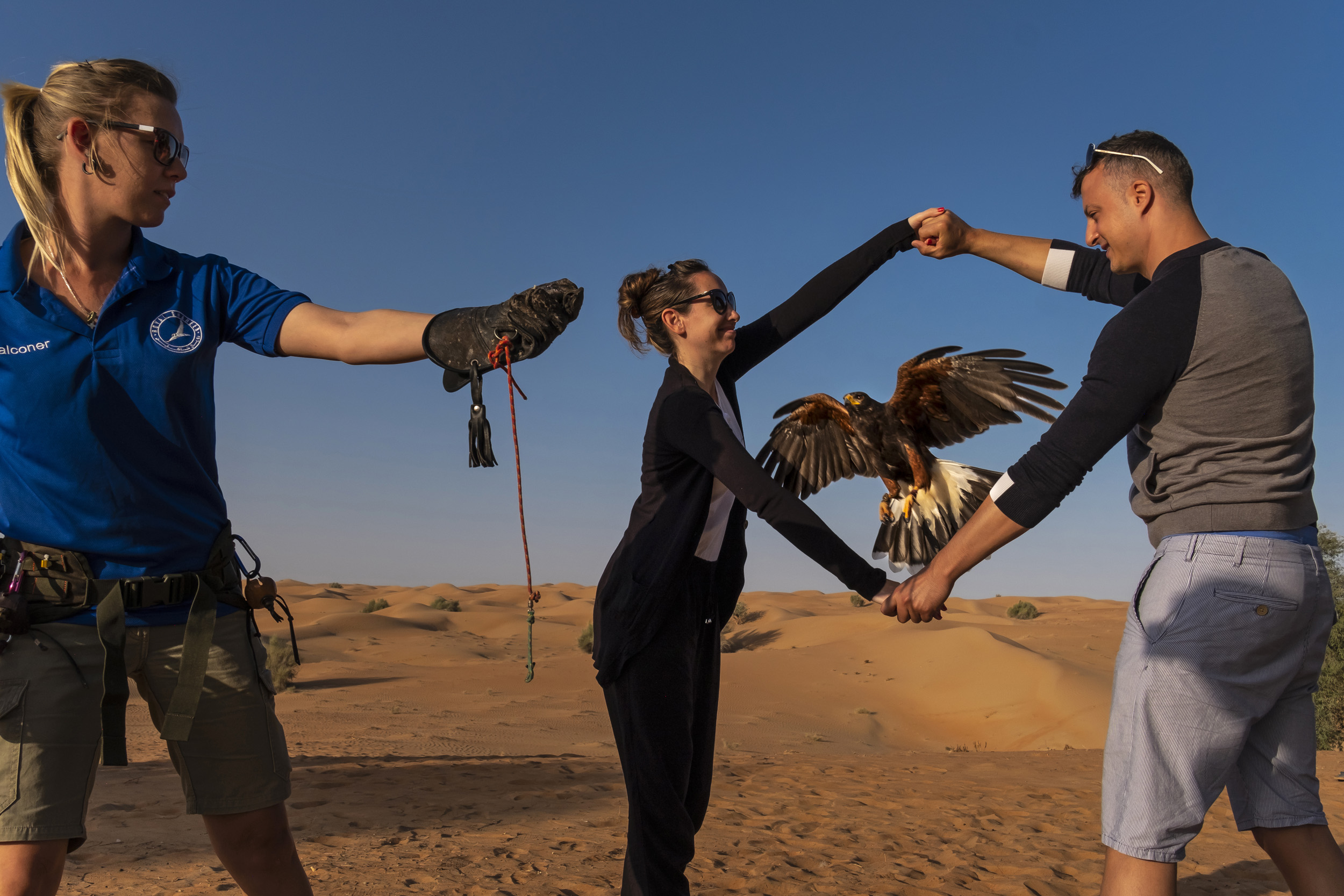
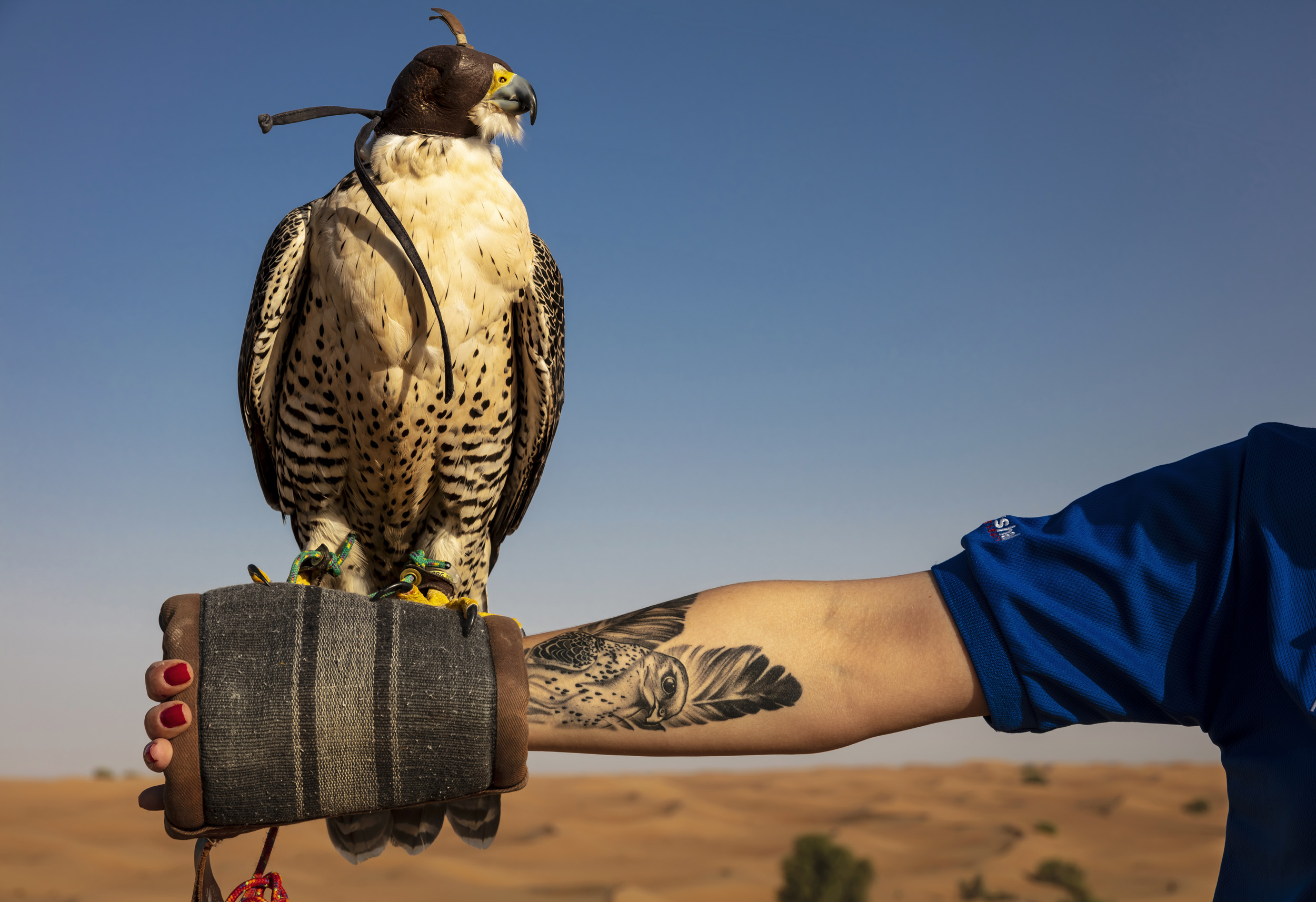

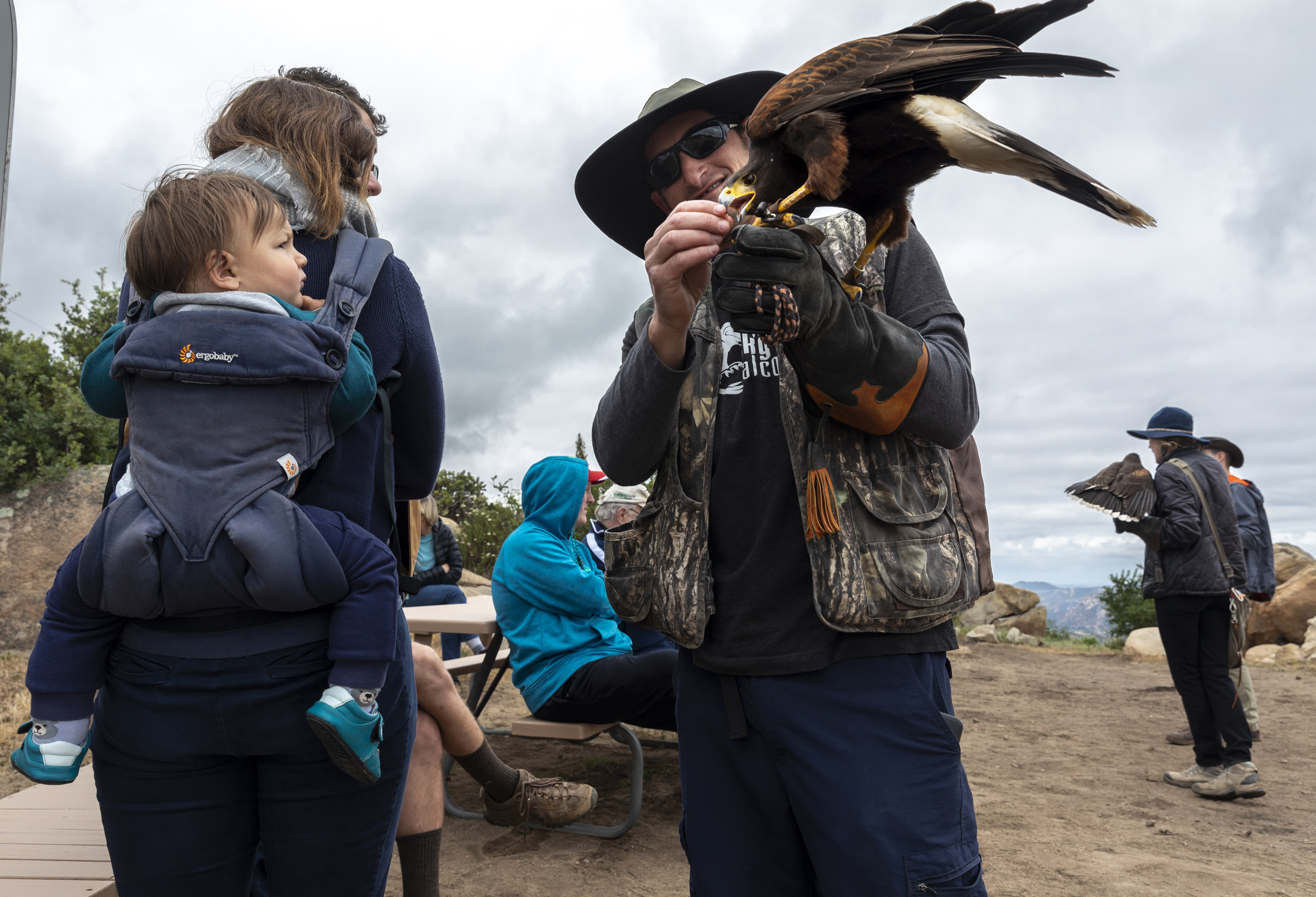
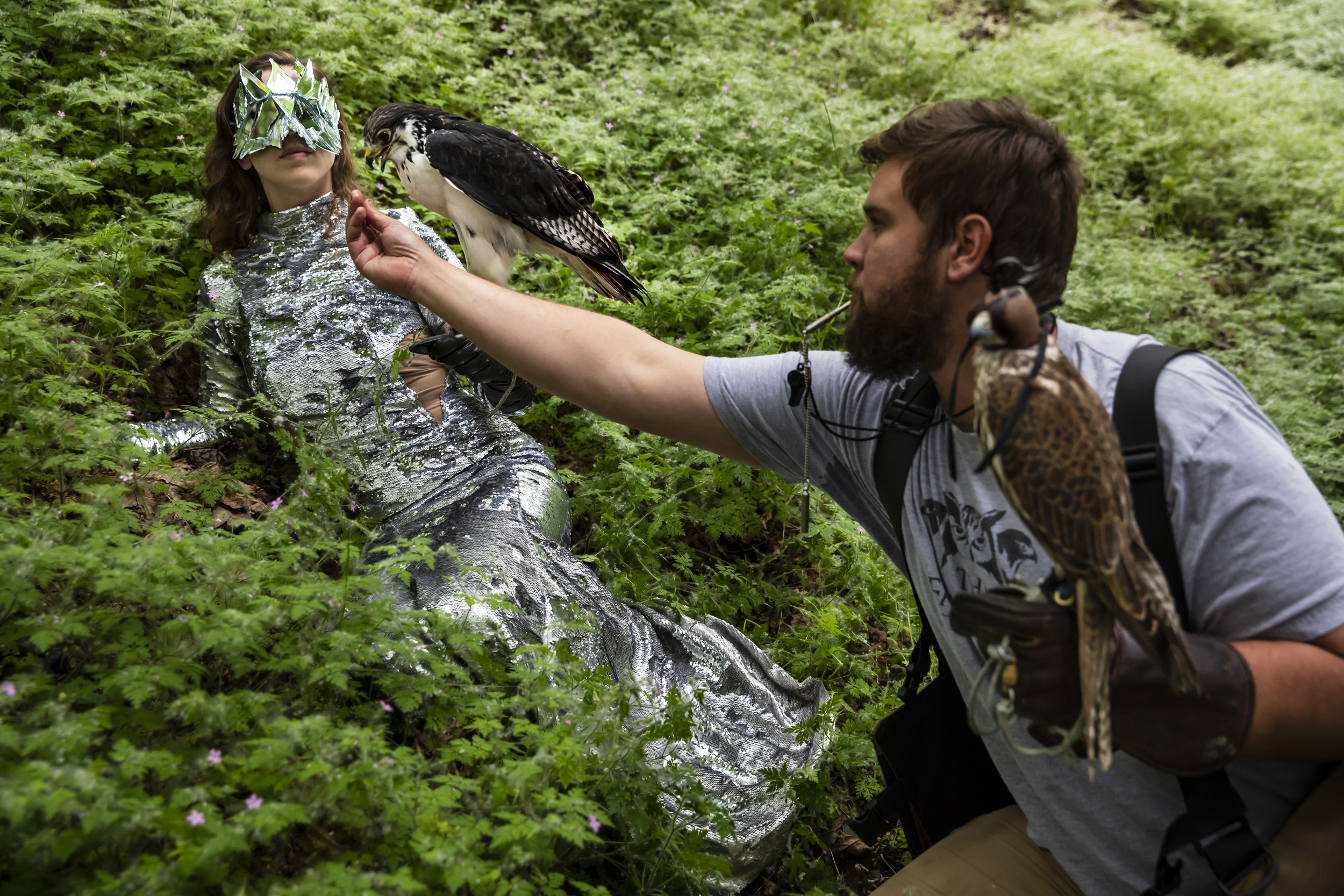
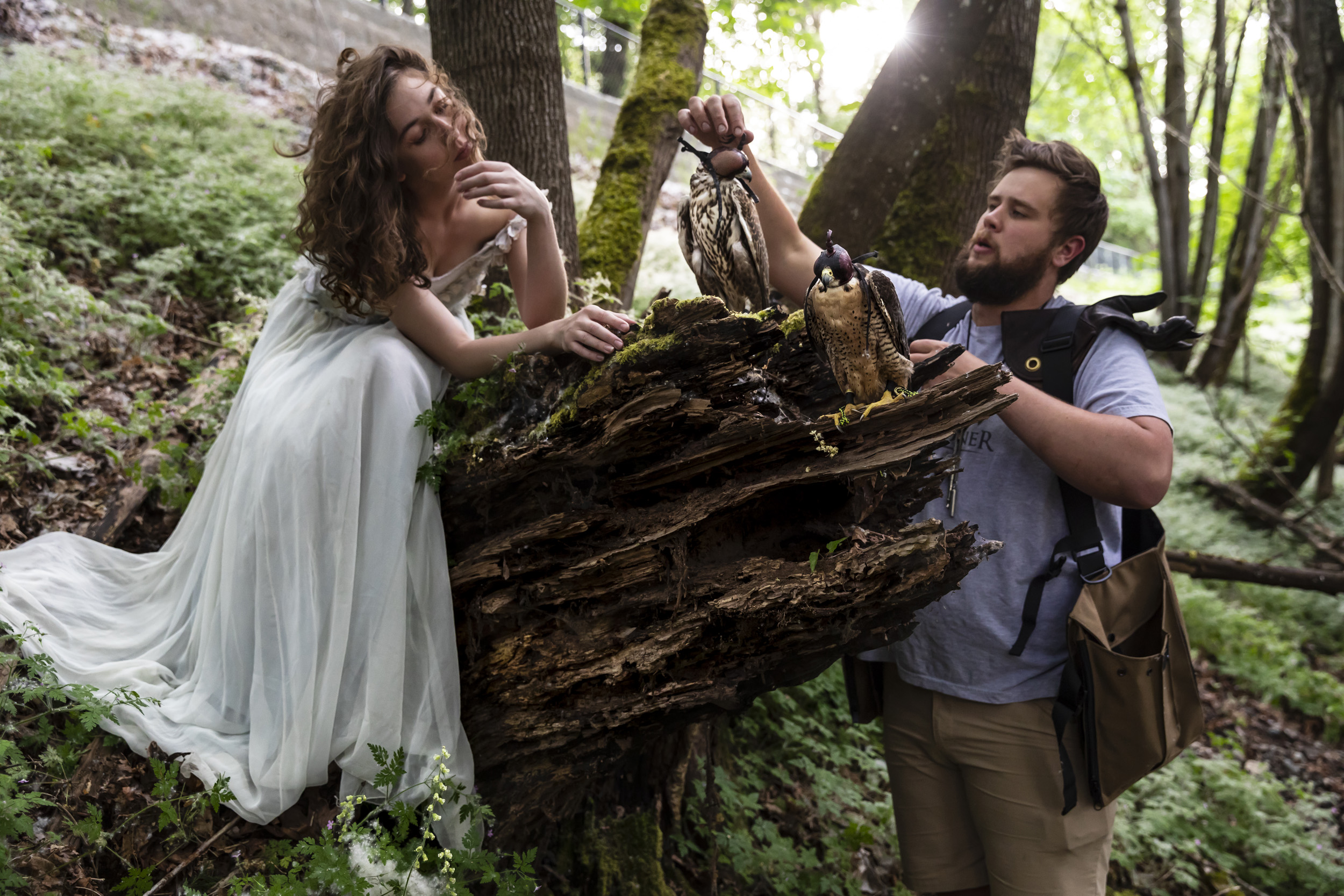
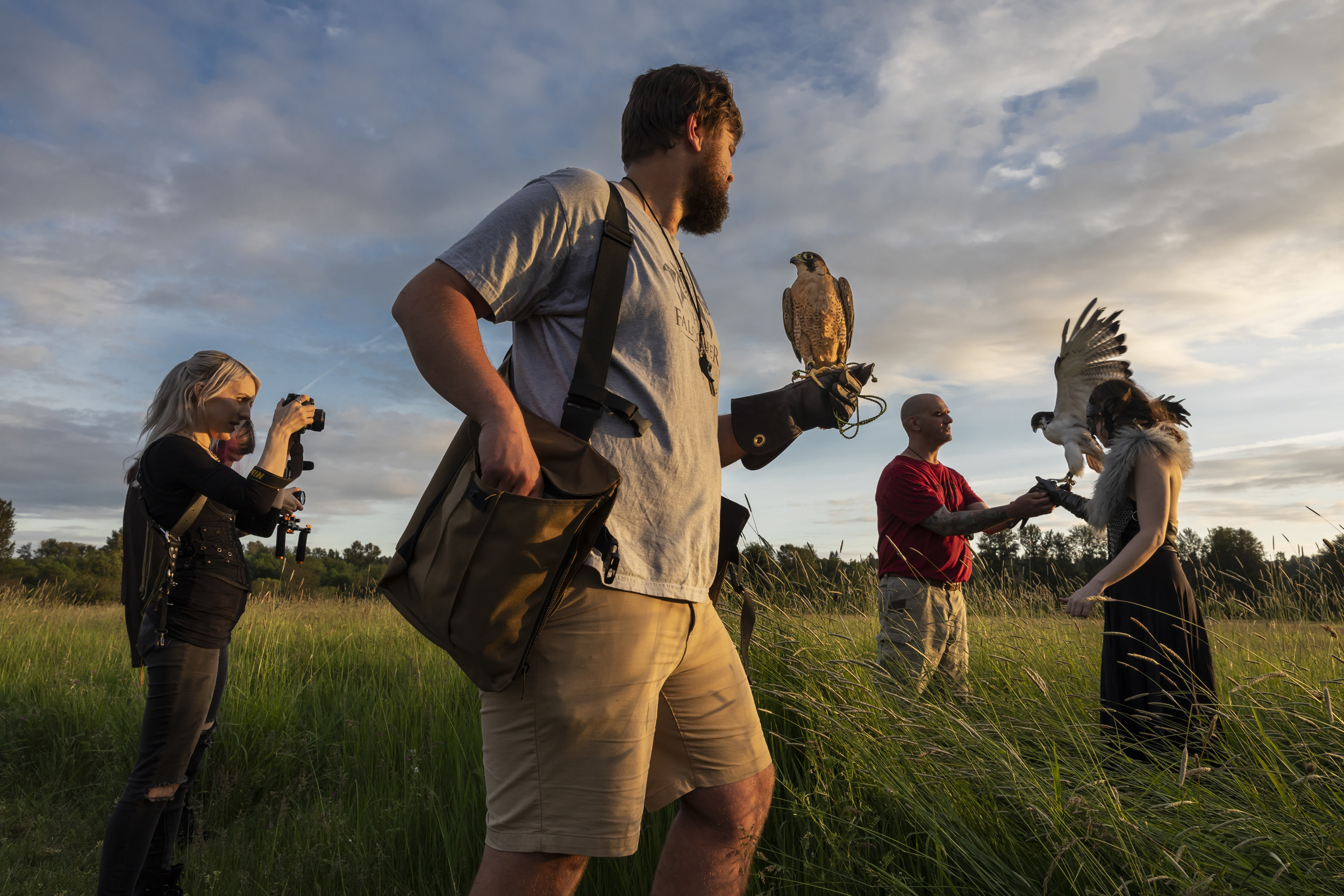

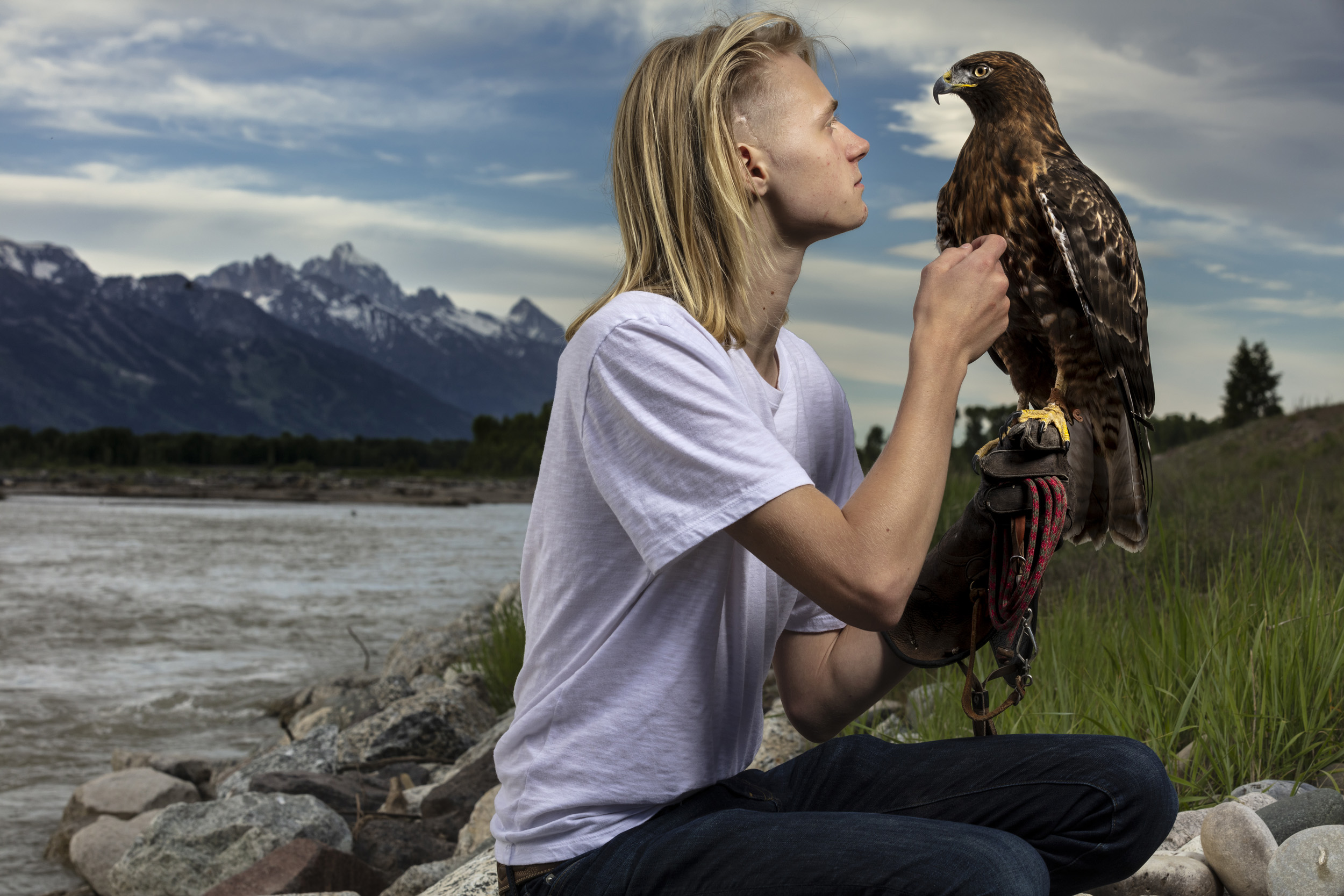
ERDENE SANT, CENTRAL MONGOLIA: A wild Saker Falcon mother and her chicks in a nest high over the steppe of Central Mongolia. The Saker falcon is the only species in the genus Falco with an endangered listing in the IUCN red list, because a population trend analysis has indicated that it may be undergoing a very rapid decline, particularly in Central Asia, with unsustainable capture for the falcon trade considered to be one of the causal factors. Electrocution via power lines is a larger issue, killing millions of birds annually, including an estimated 1000 Saker falcons every year.
BAYAN, CENTRAL MONGOLIA, MAY 2017: Batbayar Bold, a member of the Mongolian Wildlife Science and Conservation Center, examines artificial nests for the Saker Falcon in the steppe of Central Mongolia. Bayaraa checks the chicks individually, looks at their wings, weighs them and records their numbers and growth rates. The Mongolians have created over 5000 artificial nest sites in areas without naturally occurring nests or trees. In Mongolia, the globally endangered Saker falcon is harvested from the wild for the international falconry trade, yet little is known about the implications of this harvest for the conservation of the species. The use of artificial nests is a well-established conservation technique, which can be used to increase the size and distribution of breeding bird populations that are limited by the availability of natural nesting sites. Saker Falcons do not build their own nest but take over nests built by other birds. In nest site limited habitats the artificial nest projects create the potential to create a managed and easily monitored population in, which supports a sustainable harvest. Furthermore, artificial nests could contribute to the control of rodent pest species in the steppe ecosystem by increasing predator densities and predation rates. The Saker falcon is the only species in the genus Falco with an endangered listing in the IUCN red list, because a population trend analysis has indicated that it may be undergoing a very rapid decline, particularly in Central Asia, with unsustainable capture for the falcon trade considered to be one of the causal factors. Electrocution via power lines is a larger issue. The Mongolian government has permitted an annual harvest quota of Saker falcons for the Arabian falconry market, with this trade being conducted under the auspices of the Convention on International Trade in Endangered Species (CITES). Falconry is an important aspect of regional cultural heritage in the Arabian Gulf, with the use of wild S
BAYAN, CENTRAL MONGOLIA, MAY 2017: Batbayar Bold, a member of the Mongolian Wildlife Science and Conservation Center, examines artificial nests for the Saker Falcon in the steppe of Central Mongolia. He speaks with local Mongol nomads who live close to this particular nest about the work he is doing, they expressed their appreciation to him. Bayaraa checks the chicks individually, looks at their wings, weighs them and records their numbers and growth rates. The Mongolians have created over 5000 artificial nest sites in areas without naturally occurring nests or trees. In Mongolia, the globally endangered Saker falcon is harvested from the wild for the international falconry trade, yet little is known about the implications of this harvest for the conservation of the species. The use of artificial nests is a well-established conservation technique, which can be used to increase the size and distribution of breeding bird populations that are limited by the availability of natural nesting sites. Saker Falcons do not build their own nest but take over nests built by other birds. In nest site limited habitats the artificial nest projects create the potential to create a managed and easily monitored population in, which supports a sustainable harvest. Furthermore, artificial nests could contribute to the control of rodent pest species in the steppe ecosystem by increasing predator densities and predation rates. The Saker falcon is the only species in the genus Falco with an endangered listing in the IUCN red list, because a population trend analysis has indicated that it may be undergoing a very rapid decline, particularly in Central Asia, with unsustainable capture for the falcon trade considered to be one of the causal factors. Electrocution via power lines is a larger issue. The Mongolian government has permitted an annual harvest quota of Saker falcons for the Arabian falconry market, with this trade being conducted under the auspices of the Convention on Internationa
ERDENE SANT, CENTRAL MONGOLIA, 21 MAY 2017: Boldbaatar Batjargal is a Mongolian master falconer. He is seen with an injured chick that comes from a nest where Boldbaatar has imprinted himself on the mother and tamed her. He noticed that the chick has a deformed foot that had become wrapped up in some material inside the nest. This caused the foot to grow badly and he is concerned for the chick’s survival. Boldbaatar plans to hand raise this chick and see if he can heal the foot so that this bird will be able to hunt independently. He has been a falconer for 15 years, working with these rare birds since 2002. He is seen with his current Saker Falcon, a bird he will release into the wild again when the season ends. Today he is well known as one of the country’s master falconer’s working with Saker and Gyr falcons. He first saw Pakistani’s capturing wild falcon in 2002 and work with the birds. He found that fascinating and when he found an injured Saker that had been clawed by an eagle, he healed the injured bird and developed a relationship with the falcon. That bird was stolen from him but by then he had developed a keen sense of the history of falconry and it’s role for the Mongols. Ghingis Khan was said to have over 500 falconers in his army. Boldbaatar sees it as a way to reconnect to the past and the present at the same time. Boldbaatar sees falconing as being part of a great tradition, thereby connecting to his Mongol ancestors. “Mongolia was oppressed for a long time in our history, we almost abandoned falconry. This is a way for me to reconnect to our past Mongol traditions. “ Boldbaatar is well known for his ability to connect to Saker and Gyr falcons, imprinting on them quickly and forming a relationship with a wild bird within a couple of days. (Photo by Brent Stirton/Verbatim for National Geographic magazine.)
ERDENE SANT, CENTRAL MONGOLIA, 22 MAY 2017: Boldbaatar Batjargal is a Mongolian master falconer. He has been a falconer for 15 years, working with these rare birds since 2002. He is seen with his current Saker Falcon, a bird he will release into the wild again when the season ends. Today he is well known as one of the country’s master falconer’s working with Saker and Gyr falcons. He first saw Pakistani’s capturing wild falcon in 2002 and work with the birds. He found that fascinating and when he found an injured Saker that had been clawed by an eagle, he healed the injured bird and developed a relationship with the falcon. That bird was stolen from him but by then he had developed a keen sense of the history of falconry and it’s role for the Mongols. Ghingis Khan was said to have over 500 falconers in his army. Boldbaatar sees it as a way to reconnect to the past and the present at the same time. Boldbaatar sees falconing as being part of a great tradition, thereby connecting to his Mongol ancestors. “Mongolia was oppressed for a long time in our history, we almost abandoned falconry. This is a way for me to reconnect to our past Mongol traditions. “ Boldbaatar is well known for his ability to connect to Saker and Gyr falcons, imprinting on them quickly and forming a relationship with a wild bird within a couple of days. (Photo by Brent Stirton/Verbatim for National Geographic magazine.)
BAYAN, CENTRAL MONGOLIA, 22 MAY 2017: Batbayar Bold, a member of the Mongolian Wildlife Science and Conservation Center, records electrocuted Saker falcons along a single 15 KW distribution power line between Bayan and Galmut in Western Mongolia. A study was conducted on this line for the period of one year. Over 300 endangered Saker falcons were killed by electrocution as well as many other raptors. In a one-year study of this line alone, over 300 Saker falcons died due to electrocution. Mongolia has over 4000 kilometers of power-lines, many of them unsafe. Globally millions of birds are killed this way. Avian electrocution at power lines is a well-documented phenomenon, yet factors influencing the frequency of electrocution events and the efficacy of mitigation techniques remain relatively under-reported. Electrocution frequency at line poles was associated with density of small mammal holes and the deployment of mitigation measures. It is likely that local prey abundance influences the frequency of birds of prey perching on power poles, which is consequently reflected in electrocution rate. This study evaluated the efficacy of mitigation measures and found that the use of perch deflector spikes on the cross arms of line poles reduced electrocution rates when 3 or 4 spikes were deployed. Perch deflectors probably worked by reducing the opportunity for birds to perch adjacent to pin insulators rather than by reducing the frequency of birds perching on the cross arm per se. At anchor poles, reconfiguration of jump wires at two phases, so they passed under the cross arm rather than over, significantly reduced electrocution rates. These mitigation measures potentially represent a relatively inexpensive method to reduce the frequency of raptor electrocution events in regions where cost is a key factor for power line managers in determining whether or not any form of mitigation is used. (PHOTO BY BRENT STIRTON/VERBATIM FOR NATIONAL GEOGRAPHIC MAGAZINE.)
ULAANBAATAR, MONGOLIA, 27 MAY 2017: An image of over 280 Saker falcons electrocuted on powerlines covering only a small 55 kilometer study area. These falcons were collected in a study conducted over one year by Mongolia's Wildlife Science and Conservation Center, Batbayar Bold, one of their biologists is seen laying out the falcons. There are over 4000 kilometers of powerlines in Mongolia, estimated to have killed over 5,000 Saker's alone in the last 5 years. Powerlines globally kill millions of raptors every year, this is due to a design defect which electrocutes birds when they touch the live wires. Mongolia's Wildlife Science and Conservation institute is attempting to convince power companies and government to implement design changes in an effort to curb the killing. Mongolia's government sells falcons to the Arabs of the UAE, long time falconer's for whom falconing is the sport of kings. The UAE helps to fund the research on powerlines and artificial nesting in Mongolia. (Photo by Brent Stirton/Verbatim for National Geographic Magazine.)
ELGIN, SCOTLAND, 11 JUNE 2017: Howard Waller is one of the world’s premier Falcon breeders. He is seen inside the cage of a male Gyr Falcon who he has imprinted. The male views Howard as a mate and when it is mating season, this bird will fly onto the hat Howard is wearing and ejaculate. Howard will collect the semen and use it for artificial inseminisation. He breeds exclusively for Sheikh Butti in Dubai. Howard sees captive breeding of elite falcons as the best means to stop wild trapping. In recent years there has been a dramatic fall off in wild bird trafficking to the UAW, this is due to the high mortality rate, uncertainty over the health and dna of the bird and its hunting pedigree, the availability of superior captive bred hunting falcons of a superior hybrid pedigree. Howard is a Rhodesian by birth that was forced to flee the country when Mugabe came to power due to his military service. He moved to South Africa where he ran an adventure school and bred falcons in an amateur capacity. Through a contact in the Falconry world, he met Sheikh Butti, a senior member of the Royal family of Dubai and a prominent man in the UAE. Sheikh Butti is a falcon connoisseur, a descendant of thousands of years of men who worked with falcons in the “sport of kings.” The Arab world is a place where Falconry has long been considered a sacred sport; the Sheikh was one of these believers. Sheik Butti was looking for someone who could work for him breeding elite falcons in Dubai and he decided to give Howard a chance. Working out of a small quarters on the Sheikh’s farm for two years on nothing but a handshake and a small compensation package, Howard’s diligence and superior knowledge soon yielded successes that had eluded the Sheikh under lesser breeders. He build his original DNA base out of wounded and confiscated falcons brought in illegally into Dubai. This diligence and success led to great confidence and a deepening relationship between these two men and when Howa
ELGIN, SCOTLAND, 9 JUNE 2017: Howard Waller feeds young Gyr/Peregrine falcon chicks wiht quail meat 4 times daily. During this process Howard will often bring his face very close to the chicks and make the noises that an adult female would make. The feeding and the noises all make the chicks view Howard as their parent and increase their bond with him. This is a key part to imprinting the chicks on him. Howard Waller is one of the world’s premier Falcon breeders. He breeds exclusively for Sheikh Butti in Dubai. Howard sees captive breeding of elite falcons as the best means to stop wild trapping. In recent years there has been a dramatic fall off in wild bird trafficking to the UAW, this is due to the high mortality rate, uncertainty over the health and dna of the bird and its hunting pedigree, the availability of superior captive bred hunting falcons of a superior hybrid pedigree. Howard is a Rhodesian by birth that was forced to flee the country when Mugabe came to power due to his military service. He moved to South Africa where he ran an adventure school and bred falcons in an amateur capacity. Through a contact in the Falconry world, he met Sheikh Butti, a senior member of the Royal family of Dubai and a prominent man in the UAE. Sheikh Butti is a falcon connoisseur, a descendant of thousands of years of men who worked with falcons in the “sport of kings.” The Arab world is a place where Falconry has long been considered a sacred sport; the Sheikh was one of these believers. Sheik Butti was looking for someone who could work for him breeding elite falcons in Dubai and he decided to give Howard a chance. Working out of a small quarters on the Sheikh’s farm for two years on nothing but a handshake and a small compensation package, Howard’s diligence and superior knowledge soon yielded successes that had eluded the Sheikh under lesser breeders. He build his original DNA base out of wounded and confiscated falcons brought in illegally into Dubai. This dil
ELGIN, SCOTLAND, 8 JUNE 2017: Young falcons are placed in a Hacking Box on breeder Howard Waller's property. This is a box placed on the moor out of sight of human contact. The young birds who have previously know a lot of human contact are now rewilded throught this process where they will experience a minimum of human contact. The birds wear transmitters and are kept up here for up to 5 weeks. During that time, they will learn to fly and identify prey and become used to living in the wild by themselves. Howard Waller is one of the world’s premier Falcon breeders. He breeds exclusively for Sheikh Butti in Dubai. Howard sees captive breeding of elite falcons as the best means to stop wild trapping. In recent years there has been a dramatic fall off in wild bird trafficking to the UAW, this is due to the high mortality rate, uncertainty over the health and dna of the bird and its hunting pedigree, the availability of superior captive bred hunting falcons of a superior hybrid pedigree. Howard is a Rhodesian by birth that was forced to flee the country when Mugabe came to power due to his military service. He moved to South Africa where he ran an adventure school and bred falcons in an amateur capacity. Through a contact in the Falconry world, he met Sheikh Butti, a senior member of the Royal family of Dubai and a prominent man in the UAE. Sheikh Butti is a falcon connoisseur, a descendant of thousands of years of men who worked with falcons in the “sport of kings.” The Arab world is a place where Falconry has long been considered a sacred sport; the Sheikh was one of these believers. Sheik Butti was looking for someone who could work for him breeding elite falcons in Dubai and he decided to give Howard a chance. Working out of a small quarters on the Sheikh’s farm for two years on nothing but a handshake and a small compensation package, Howard’s diligence and superior knowledge soon yielded successes that had eluded the Sheikh under lesser breeders. He buil
ELGIN, SCOTLAND, 8 JUNE 2017: Young falcons are placed in a Hacking Box on breeder Howard Waller's property. This is a box placed on the moor out of sight of human contact. The young birds who have previously know a lot of human contact are now rewilded throught this process where they will experience a minimum of human contact. The birds wear transmitters and are kept up here for up to 5 weeks. During that time, they will learn to fly and identify prey and become used to living in the wild by themselves. Howard Waller is one of the world’s premier Falcon breeders. He breeds exclusively for Sheikh Butti in Dubai. Howard sees captive breeding of elite falcons as the best means to stop wild trapping. In recent years there has been a dramatic fall off in wild bird trafficking to the UAW, this is due to the high mortality rate, uncertainty over the health and dna of the bird and its hunting pedigree, the availability of superior captive bred hunting falcons of a superior hybrid pedigree. Howard is a Rhodesian by birth that was forced to flee the country when Mugabe came to power due to his military service. He moved to South Africa where he ran an adventure school and bred falcons in an amateur capacity. Through a contact in the Falconry world, he met Sheikh Butti, a senior member of the Royal family of Dubai and a prominent man in the UAE. Sheikh Butti is a falcon connoisseur, a descendant of thousands of years of men who worked with falcons in the “sport of kings.” The Arab world is a place where Falconry has long been considered a sacred sport; the Sheikh was one of these believers. Sheik Butti was looking for someone who could work for him breeding elite falcons in Dubai and he decided to give Howard a chance. Working out of a small quarters on the Sheikh’s farm for two years on nothing but a handshake and a small compensation package, Howard’s diligence and superior knowledge soon yielded successes that had eluded the Sheikh under lesser breeders. He buil
ELGIN, SCOTLAND, 10 JUNE 2017: Howard Waller and his daughter Jennifer take young falcons out onto the moor on their Scottish property and prepar them for a Hacking Box. These are imprinted birds used to a human presence but they will go to Dubai where they will be trained to hunt. It is necessary to place these birds in the wild for a period before they go to Dubai. This is where they will learn to fly, learn to operate in a wild space without humans and learn to see other birds, including prey species, in the wild. The birds will be taken out intially for the day and then returned to Howard's home which they see as a nest. Eventually they will be left out in the hacking box for up to five weeks. Howard Waller is one of the world’s premier Falcon breeders. He breeds exclusively for Sheikh Butti in Dubai. Howard sees captive breeding of elite falcons as the best means to stop wild trapping. In recent years there has been a dramatic fall off in wild bird trafficking to the UAW, this is due to the high mortality rate, uncertainty over the health and dna of the bird and its hunting pedigree, the availability of superior captive bred hunting falcons of a superior hybrid pedigree. Howard is a Rhodesian by birth that was forced to flee the country when Mugabe came to power due to his military service. He moved to South Africa where he ran an adventure school and bred falcons in an amateur capacity. Through a contact in the Falconry world, he met Sheikh Butti, a senior member of the Royal family of Dubai and a prominent man in the UAE. Sheikh Butti is a falcon connoisseur, a descendant of thousands of years of men who worked with falcons in the “sport of kings.” The Arab world is a place where Falconry has long been considered a sacred sport; the Sheikh was one of these believers. Sheik Butti was looking for someone who could work for him breeding elite falcons in Dubai and he decided to give Howard a chance. Working out of a small quarters on the Sheikh’s farm for
DUBAI, UAE, 18 OCTOBER 2018: Howard Waller, master falcon breeder for Dubai’s Sheik Butti Al Maktoum, captures falcons in their cages at the Sheiks palace in order to prepare them for transport to Scotland where his breeding facility is located. Howard and Sheik Butti carefuly work out successful breeding lines and which birds will be used for breeding and which will be used for hunting. Howard Waller is one of the world’s premier Falcon breeders. He is a Rhodesean by birth that was forced to flee the country when Mugabe came to power due to his military service. He moved to South Africa where he ran an adventure school and bred falcons in an amateur capacity. Through a contact in the Falconry world, he met Sheikh Butti, a senior member of the Royal family of Dubai and a prominent man in the UAE. Sheikh Butti is a falcon connoseur, a descendant of thousands of years of men who worked with falcons in the “sport of kings.” The Arab world is a place where Falconry has long been considered a sacred sport, the Sheikh was one of these believers. Sheik Butti was looking for someone who could work for him breeding elite falcons in Dubai and he decided to give Howard a chance. Working out of a small quarters on the Sheikh’s farm for two years on nothing but a handshake and a small compensation package, Howard’s diligence and superior knowledge soon yielded successes that had eluded the Sheikh under lesser breeders. This led to great confidence and a deepening relationship between these two men and when Howard felt that he could no longer make sufficient progress with the birds in the hot and limited climate of the Dubai, Sheikh Butti requested that Howard think of what would be an ideal set up for him to continue his breeding and research operation. After some time Howard chose a location in the highlands of Scotland, not far from Inverness. This location offered him a perfect combination of cold climate for the birds, a peaceful location in which to do his work
DUBAI, UAE, 18 OCTOBER 2018: Howard Waller attempts to resuscitate a young falcon he has bred from birth. The resuscitation was unsuccessful and the falcon died. Howard was attempting to tranquilize the bird for DNA swabbing for transport to Scotland for breeding purposes. The falcon has too much water in its system and its lungs collapsed, the water was supposed to have been removed the day before from all cages but was not done in the case of this particular bird. Howard Waller is one of the world’s premier Falcon breeders. He is a Rhodesean by birth that was forced to flee the country when Mugabe came to power due to his military service. He moved to South Africa where he ran an adventure school and bred falcons in an amateur capacity. Through a contact in the Falconry world, he met Sheikh Butti, a senior member of the Royal family of Dubai and a prominent man in the UAE. Sheikh Butti is a falcon connoseur, a descendant of thousands of years of men who worked with falcons in the “sport of kings.” The Arab world is a place where Falconry has long been considered a sacred sport, the Sheikh was one of these believers. Sheik Butti was looking for someone who could work for him breeding elite falcons in Dubai and he decided to give Howard a chance. Working out of a small quarters on the Sheikh’s farm for two years on nothing but a handshake and a small compensation package, Howard’s diligence and superior knowledge soon yielded successes that had eluded the Sheikh under lesser breeders. This led to great confidence and a deepening relationship between these two men and when Howard felt that he could no longer make sufficient progress with the birds in the hot and limited climate of the Dubai, Sheikh Butti requested that Howard think of what would be an ideal set up for him to continue his breeding and research operation. After some time Howard chose a location in the highlands of Scotland, not far from Inverness. This location offered him a perfect combinati
DUBAI, UAE, SEPTEMBER 17, 2017: Sheikh Butti Maktoum Bin Juma, a senior member of the Dubai Royal family, trains his falcons in the desert outside Dubai. These are some of his housing facilities for the birds, air-conditioned indoor arenas. Most birds used in modern day arabian falconry come from colder climates and so are housed this way. They are also only flown very early in the morning or late in the evening. The Sheikh begins before dawn during the season, using multiple techniques to train the falcons to peak condition for hunting. He is preparing them for a falcon hunt in Uzbekistan where he will hunt alongside other members of the Royal family in a tradition that goes back millennia in the Arab world. His son’s Maktoum and Rashid are talented falconers who share his passion for the hunt; they accompany the Sheikh in his training sessions. Training consists of multiple techniques where lures are used in multiple manifestations. Hand lures, lures on ropes, lures towed behind radio -controlled airplanes. Live prey is also used to accustom the birds to killing and build a blood lust. These are typically released and the falcons must hunt them out of the sky. Quails, ducks and finally, the prey of choice, Houbara Bustards, are used to train the falcons. All of these prey species are bred in the region and in the international hunting areas specifically for this purpose. In the UAE, where a huge amount of progress has occurred at an accelerated rate over the last 60 years, falconry is seen as a link back to the past and to the ancient culture of the Bedouin. Falcons were used for centuries for hunting food and the Arabs have a long association with falcons. Nowadays it is the sport of choice across the Arab world. Twenty years ago, most of the birds used were from wild capture, a fact that meant falcons were taken from the wild and subjected to long and dangerous journeys from as far away as Siberia and Mongolia. Many did not survive and those that did often ar
DUBAI, UAE, SEPTEMBER 17, 2017: Sheikh Butti Maktoum Bin Juma, a senior member of the Dubai Royal family, trains his falcons in the desert outside Dubai. These are some of his housing facilities for the birds, both air-conditioned indoor and outdoor arenas.The Sheikh begins before dawn during the season, using multiple techniques to train the falcons to peak condition for hunting. He is preparing them for a falcon hunt in Uzbekistan where he will hunt alongside other members of the Royal family in a tradition that goes back millennia in the Arab world. His son’s Maktoum and Rashid are talented falconers who share his passion for the hunt; they accompany the Sheikh in his training sessions. Training consists of multiple techniques where lures are used in multiple manifestations. Hand lures, lures on ropes, lures towed behind radio -controlled airplanes. Live prey is also used to accustom the birds to killing and build a blood lust. These are typically released and the falcons must hunt them out of the sky. Quails, ducks and finally, the prey of choice, Houbara Bustards, are used to train the falcons. All of these prey species are bred in the region and in the international hunting areas specifically for this purpose. In the UAE, where a huge amount of progress has occurred at an accelerated rate over the last 60 years, falconry is seen as a link back to the past and to the ancient culture of the Bedouin. Falcons were used for centuries for hunting food and the Arabs have a long association with falcons. Nowadays it is the sport of choice across the Arab world. Twenty years ago, most of the birds used were from wild capture, a fact that meant falcons were taken from the wild and subjected to long and dangerous journeys from as far away as Siberia and Mongolia. Many did not survive and those that did often arrived sick and in poor condition. Most of those falcons also came from colder climates and did not survive the heat of the desert region. These days, the vast ma
DUBAI, UAE, SEPTEMBER 24, 2017: Sheikh Butti Maktoum Bin Juma, a senior member of the Dubai Royal family, is seen inside the foyer of his home in Dubai. He is holding his favourite Gyr Falcon and is surrounded by other high end falcons that were bred especially for him. The mural behind him depicts his sons Rashid and Maktoum in the desert with falcons. Sheikh Butti is the first UAE falconer and likely the first Arab to ever train and hunt with a captive bred bird, a Gyr falcon that became famous across the region twenty years ago. He altered perception about what was possible with captive breeding and the performance of his falcons helped to win the argument for the superiority of captive-bred hybrids and purebred falcons. There has been a careful refining of genetics by master breeders like Howard Waller who have created a whole new class of falcons that have become the birds of choice in the Emirates. They are housed in special air-conditioned facilities where they can resist the high temperatures of the desert. Most training for hunts and racing is done in the very early morning, when temperatures are low and the birds won’t suffer heat exhaustion. The birds travel in air-conditioned vehicles with special perches to and from the training grounds. The higher echelons of the UAE falconers literally spend millions of dollars on housing, training and caring for their falcons. There are a number of falcon hospitals across the UAE that cater exclusively to the welfare of these birds. Expert international veterinarians staff these hospitals and birds are cared for at the same level as people. Falcons were severely threatened 50 years ago by the advent of chemicals like DDT, the Arab world has been at the forefront of restoring falcon populations and it is the Arab world that is the epicenter for breeding and the largest client for these birds. This resurgence has elevated Falconry to Intangible Heritage status by Unesco. (Photo by Brent Stirton/Verbatim for National
DUBAI, UAE, OCTOBER 20, 2018: Sheikh Butti Maktoum Bin Juma, a senior member of the Dubai Royal family, is greeted by his son Rashid as he trains his falcons in the desert outside Dubai. The Sheikh begins before dawn during the season, using multiple techniques to train the falcons to peak condition for hunting. He is preparing them for a falcon hunt in Uzbekistan where he will hunt alongside other members of the Royal family in a tradition that goes back millennia in the Arab world. His son’s Maktoum and Rashid are talented falconers who share his passion for the hunt; they accompany the Sheikh in his training sessions. Training consists of multiple techniques where lures are used in multiple manifestations. Hand lures, lures on ropes, lures towed behind radio -controlled airplanes. Live prey is also used to accustom the birds to killing and build a blood lust. These are typically released and the falcons must hunt them out of the sky. Quails, ducks and finally, the prey of choice, Houbara Bustards, are used to train the falcons. All of these prey species are bred in the region and in the international hunting areas specifically for this purpose. In the UAE, where a huge amount of progress has occurred at an accelerated rate over the last 60 years, falconry is seen as a link back to the past and to the ancient culture of the Bedouin. Falcons were used for centuries for hunting food and the Arabs have a long association with falcons. Nowadays it is the sport of choice across the Arab world. Twenty years ago, most of the birds used were from wild capture, a fact that meant falcons were taken from the wild and subjected to long and dangerous journeys from as far away as Siberia and Mongolia. Many did not survive and those that did often arrived sick and in poor condition. Most of those falcons also came from colder climates and did not survive the heat of the desert region. These days, the vast majority of falcons used in the UAE are captive bred birds. Sheikh Butti
DUBAI, UAE, SEPTEMBER 17, 2017: Sheikh Butti Maktoum Bin Juma, a senior member of the Dubai Royal family, trains his falcons in the desert outside Dubai. The Sheikh begins before dawn during the season, using multiple techniques to train the falcons to peak condition for hunting. He is preparing them for a falcon hunt in Uzbekistan where he will hunt alongside other members of the Royal family in a tradition that goes back millennia in the Arab world. His son’s Maktoum and Rashid are talented falconers who share his passion for the hunt; they accompany the Sheikh in his training sessions. Training consists of multiple techniques where lures are used in multiple manifestations. Hand lures, lures on ropes, lures towed behind radio -controlled airplanes. Live prey is also used to accustom the birds to killing and build a blood lust. These are typically released and the falcons must hunt them out of the sky. Quails, ducks and finally, the prey of choice, Houbara Bustards, are used to train the falcons. All of these prey species are bred in the region and in the international hunting areas specifically for this purpose. In the UAE, where a huge amount of progress has occurred at an accelerated rate over the last 60 years, falconry is seen as a link back to the past and to the ancient culture of the Bedouin. Falcons were used for centuries for hunting food and the Arabs have a long association with falcons. Nowadays it is the sport of choice across the Arab world. Twenty years ago, most of the birds used were from wild capture, a fact that meant falcons were taken from the wild and subjected to long and dangerous journeys from as far away as Siberia and Mongolia. Many did not survive and those that did often arrived sick and in poor condition. Most of those falcons also came from colder climates and did not survive the heat of the desert region. These days, the vast majority of falcons used in the UAE are captive bred birds. Sheikh Butti is the first UAE falconer and li
DUBAI, UAE, OCTOBER 16, 2018: Elite captive bred hybrid Gyr falcons sit inside specially designed 4x4 vehicles in the desert outside Dubai. Sheikh Butti Maktoum Bin Juma, a senior member of the Dubai Royal family, is training his falcons in the desert. The Sheikh begins before dawn during the season, using multiple techniques to train the falcons to peak condition for hunting. He is preparing them for a falcon hunt in Uzbekistan where he will hunt alongside other members of the Royal family in a tradition that goes back millennia in the Arab world. His son’s Maktoum and Rashid are talented falconers who share his passion for the hunt; they accompany the Sheikh in his training sessions. Training consists of multiple techniques where lures are used in multiple manifestations. Hand lures, lures on ropes, lures towed behind radio -controlled airplanes. Live prey is also used to accustom the birds to killing and build a blood lust. These are typically released and the falcons must hunt them out of the sky. Quails, ducks and finally, the prey of choice, Houbara Bustards, are used to train the falcons. All of these prey species are bred in the region and in the international hunting areas specifically for this purpose. In the UAE, where a huge amount of progress has occurred at an accelerated rate over the last 60 years, falconry is seen as a link back to the past and to the ancient culture of the Bedouin. Falcons were used for centuries for hunting food and the Arabs have a long association with falcons. Nowadays it is the sport of choice across the Arab world. Twenty years ago, most of the birds used were from wild capture, a fact that meant falcons were taken from the wild and subjected to long and dangerous journeys from as far away as Siberia and Mongolia. Many did not survive and those that did often arrived sick and in poor condition. Most of those falcons also came from colder climates and did not survive the heat of the desert region. These days, the vast majori
DUBAI, UAE, SEPTEMBER 22, 2017: Sheikh Butti Maktoum Bin Juma, a senior member of the Dubai Royal family, trains his falcons in the desert outside Dubai. The Sheikh begins before dawn during the season, using multiple techniques to train the falcons to peak condition for hunting. He is preparing them for a falcon hunt in Uzbekistan where he will hunt alongside other members of the Royal family in a tradition that goes back millennia in the Arab world. His son’s Maktoum and Rashid are talented falconers who share his passion for the hunt; they accompany the Sheikh in his training sessions. Training consists of multiple techniques where lures are used in multiple manifestations. Hand lures, lures on ropes, lures towed behind radio -controlled airplanes. Live prey is also used to accustom the birds to killing and build a blood lust. These are typically released and the falcons must hunt them out of the sky. Quails, ducks and finally, the prey of choice, Houbara Bustards, are used to train the falcons. All of these prey species are bred in the region and in the international hunting areas specifically for this purpose. In the UAE, where a huge amount of progress has occurred at an accelerated rate over the last 60 years, falconry is seen as a link back to the past and to the ancient culture of the Bedouin. Falcons were used for centuries for hunting food and the Arabs have a long association with falcons. Nowadays it is the sport of choice across the Arab world. Twenty years ago, most of the birds used were from wild capture, a fact that meant falcons were taken from the wild and subjected to long and dangerous journeys from as far away as Siberia and Mongolia. Many did not survive and those that did often arrived sick and in poor condition. Most of those falcons also came from colder climates and did not survive the heat of the desert region. These days, the vast majority of falcons used in the UAE are captive bred birds. Sheikh Butti is the first UAE falconer and li
DUBAI, UAE, OCTOBER 12 2018: Maktoum Maktoum, the son of Sheikh Butti Maktoum Bin Juma, a senior member of the Dubai Royal family, is seen while he trains his falcons in the desert outside Dubai. Sheikh Butti Maktoum Bin Juma begins before dawn during the season, using multiple techniques to train the falcons to peak condition for hunting. He is preparing them for a falcon hunt in Uzbekistan where he will hunt alongside other members of the Royal family in a tradition that goes back millennia in the Arab world. His son’s Maktoum and Rashid are talented falconers who share his passion for the hunt; they accompany the Sheikh in his training sessions. Training consists of multiple techniques where lures are used in multiple manifestations. Hand lures, lures on ropes, lures towed behind radio -controlled airplanes. Live prey is also used to accustom the birds to killing and build a blood lust. These are typically released and the falcons must hunt them out of the sky. Quails, ducks and finally, the prey of choice, Houbara Bustards, are used to train the falcons. All of these prey species are bred in the region and in the international hunting areas specifically for this purpose. In the UAE, where a huge amount of progress has occurred at an accelerated rate over the last 60 years, falconry is seen as a link back to the past and to the ancient culture of the Bedouin. Falcons were used for centuries for hunting food and the Arabs have a long association with falcons. Nowadays it is the sport of choice across the Arab world. Twenty years ago, most of the birds used were from wild capture, a fact that meant falcons were taken from the wild and subjected to long and dangerous journeys from as far away as Siberia and Mongolia. Many did not survive and those that did often arrived sick and in poor condition. Most of those falcons also came from colder climates and did not survive the heat of the desert region. These days, the vast majority of falcons used in the UAE are cap
DUBAI, UAE, OCTOBER 12, 2018: Maktoum Maktoum, the son of Sheikh Butti Maktoum Bin Juma, a senior member of the Dubai Royal family, is seen while he trains his falcons in the desert outside Dubai. Sheikh Butti Maktoum Bin Juma begins before dawn during the season, using multiple techniques to train the falcons to peak condition for hunting. He is preparing them for a falcon hunt in Uzbekistan where he will hunt alongside other members of the Royal family in a tradition that goes back millennia in the Arab world. His son’s Maktoum and Rashid are talented falconers who share his passion for the hunt; they accompany the Sheikh in his training sessions. Training consists of multiple techniques where lures are used in multiple manifestations. Hand lures, lures on ropes, lures towed behind radio -controlled airplanes. Live prey is also used to accustom the birds to killing and build a blood lust. These are typically released and the falcons must hunt them out of the sky. Quails, ducks and finally, the prey of choice, Houbara Bustards, are used to train the falcons. All of these prey species are bred in the region and in the international hunting areas specifically for this purpose. In the UAE, where a huge amount of progress has occurred at an accelerated rate over the last 60 years, falconry is seen as a link back to the past and to the ancient culture of the Bedouin. Falcons were used for centuries for hunting food and the Arabs have a long association with falcons. Nowadays it is the sport of choice across the Arab world. Twenty years ago, most of the birds used were from wild capture, a fact that meant falcons were taken from the wild and subjected to long and dangerous journeys from as far away as Siberia and Mongolia. Many did not survive and those that did often arrived sick and in poor condition. Most of those falcons also came from colder climates and did not survive the heat of the desert region. These days, the vast majority of falcons used in the UAE are cap
DUBAI, UAE, SEPTEMBER 20, 2017: Sheikh Butti Maktoum Bin Juma, a senior member of the Dubai Royal family, trains his falcons in the desert outside Dubai. The Sheikh begins before dawn during the season, using multiple techniques to train the falcons to peak condition for hunting. He is preparing them for a falcon hunt in Uzbekistan where he will hunt alongside other members of the Royal family in a tradition that goes back millennia in the Arab world. His son’s Maktoum and Rashid are talented falconers who share his passion for the hunt; they accompany the Sheikh in his training sessions. Training consists of multiple techniques where lures are used in multiple manifestations. Hand lures, lures on ropes, lures towed behind radio -controlled airplanes. Live prey is also used to accustom the birds to killing and build a blood lust. These are typically released and the falcons must hunt them out of the sky. Quails, ducks and finally, the prey of choice, Houbara Bustards, are used to train the falcons. All of these prey species are bred in the region and in the international hunting areas specifically for this purpose. In the UAE, where a huge amount of progress has occurred at an accelerated rate over the last 60 years, falconry is seen as a link back to the past and to the ancient culture of the Bedouin. Falcons were used for centuries for hunting food and the Arabs have a long association with falcons. Nowadays it is the sport of choice across the Arab world. Twenty years ago, most of the birds used were from wild capture, a fact that meant falcons were taken from the wild and subjected to long and dangerous journeys from as far away as Siberia and Mongolia. Many did not survive and those that did often arrived sick and in poor condition. Most of those falcons also came from colder climates and did not survive the heat of the desert region. These days, the vast majority of falcons used in the UAE are captive bred birds. Sheikh Butti is the first UAE falconer and li
DUBAI, UAE, OCTOBER 18, 2018: Sheikh Butti Maktoum Bin Juma, a senior member of the Dubai Royal family, is seens with his sons and assistants while he trains his falcons in the desert outside Dubai. The Sheikh begins before dawn during the season, using multiple techniques to train the falcons to peak condition for hunting. He is preparing them for a falcon hunt in Uzbekistan where he will hunt alongside other members of the Royal family in a tradition that goes back millennia in the Arab world. His son’s Maktoum and Rashid are talented falconers who share his passion for the hunt; they accompany the Sheikh in his training sessions. Training consists of multiple techniques where lures are used in multiple manifestations. Hand lures, lures on ropes, lures towed behind radio -controlled airplanes. Live prey is also used to accustom the birds to killing and build a blood lust. These are typically released and the falcons must hunt them out of the sky. Quails, ducks and finally, the prey of choice, Houbara Bustards, are used to train the falcons. All of these prey species are bred in the region and in the international hunting areas specifically for this purpose. In the UAE, where a huge amount of progress has occurred at an accelerated rate over the last 60 years, falconry is seen as a link back to the past and to the ancient culture of the Bedouin. Falcons were used for centuries for hunting food and the Arabs have a long association with falcons. Nowadays it is the sport of choice across the Arab world. Twenty years ago, most of the birds used were from wild capture, a fact that meant falcons were taken from the wild and subjected to long and dangerous journeys from as far away as Siberia and Mongolia. Many did not survive and those that did often arrived sick and in poor condition. Most of those falcons also came from colder climates and did not survive the heat of the desert region. These days, the vast majority of falcons used in the UAE are captive bred birds.
DUBAI, UAE, OCTOBER 18, 2018: Sheikh Butti Maktoum Bin Juma, a senior member of the Dubai Royal family, is seen with his sons and assistants while he trains his falcons in the desert outside Dubai. The Sheikh begins before dawn during the season, using multiple techniques to train the falcons to peak condition for hunting. He is preparing them for a falcon hunt in Uzbekistan where he will hunt alongside other members of the Royal family in a tradition that goes back millennia in the Arab world. His son’s Maktoum and Rashid are talented falconers who share his passion for the hunt; they accompany the Sheikh in his training sessions. Training consists of multiple techniques where lures are used in multiple manifestations. Hand lures, lures on ropes, lures towed behind radio -controlled airplanes. Live prey is also used to accustom the birds to killing and build a blood lust. These are typically released and the falcons must hunt them out of the sky. Quails, ducks and finally, the prey of choice, Houbara Bustards, are used to train the falcons. All of these prey species are bred in the region and in the international hunting areas specifically for this purpose. In the UAE, where a huge amount of progress has occurred at an accelerated rate over the last 60 years, falconry is seen as a link back to the past and to the ancient culture of the Bedouin. Falcons were used for centuries for hunting food and the Arabs have a long association with falcons. Nowadays it is the sport of choice across the Arab world. Twenty years ago, most of the birds used were from wild capture, a fact that meant falcons were taken from the wild and subjected to long and dangerous journeys from as far away as Siberia and Mongolia. Many did not survive and those that did often arrived sick and in poor condition. Most of those falcons also came from colder climates and did not survive the heat of the desert region. These days, the vast majority of falcons used in the UAE are captive bred birds. S
DUBAI, UAE, 29 September, 2017: A falcon trainer for the Crown Prince of Dubai puts a Gyr falcon through its paces in the desert outside of Dubai. On this occasion, a drone was used to tow a lure that the falcon chased after. Training consists of multiple techniques where lures are used in multiple manifestations. Hand lures, lures on ropes, lures towed behind radio -controlled airplanes. Live prey is also used to accustom the birds to killing and build a blood lust. These are typically released and the falcons must hunt them out of the sky. Quails, ducks and finally, the prey of choice, Houbara Bustards, are used to train the falcons. All of these prey species are bred in the region and in the international hunting areas specifically for this purpose. In the UAE, where a huge amount of progress has occurred at an accelerated rate over the last 60 years, falconry is seen as a link back to the past and to the ancient culture of the Bedouin. Falcons were used for centuries for hunting food and the Arabs have a long association with falcons. Nowadays it is the sport of choice across the Arab world. Twenty years ago, most of the birds used were from wild capture, a fact that meant falcons were taken from the wild and subjected to long and dangerous journeys from as far away as Siberia and Mongolia. Many did not survive and those that did often arrived sick and in poor condition. Most of those falcons also came from colder climates and did not survive the heat of the desert region. These days, the vast majority of falcons used in the UAE are captive bred birds. Sheikh Butti is the first UAE falconer and likely the first Arab to ever train and hunt with a captive bred bird, a Gyr falcon that became famous across the region twenty years ago. He altered perception about what was possible with captive breeding and the performance of his falcons helped to win the argument for the superiority of captive-bred hybrids and purebred falcons. There has been a careful refining of ge
DUBAI, UAE, SEPTEMBER 17, 2017: Sheikh Butti Maktoum Bin Juma, a senior member of the Dubai Royal family, trains his falcons in the desert outside Dubai. The Sheikh begins before dawn during the season, using multiple techniques to train the falcons to peak condition for hunting. He is preparing them for a falcon hunt in Uzbekistan where he will hunt alongside other members of the Royal family in a tradition that goes back millennia in the Arab world. His son’s Maktoum and Rashid are talented falconers who share his passion for the hunt; they accompany the Sheikh in his training sessions. Training consists of multiple techniques where lures are used in multiple manifestations. Hand lures, lures on ropes, lures towed behind radio -controlled airplanes. Live prey is also used to accustom the birds to killing and build a blood lust. These are typically released and the falcons must hunt them out of the sky. Quails, ducks and finally, the prey of choice, Houbara Bustards, are used to train the falcons. All of these prey species are bred in the region and in the international hunting areas specifically for this purpose. In the UAE, where a huge amount of progress has occurred at an accelerated rate over the last 60 years, falconry is seen as a link back to the past and to the ancient culture of the Bedouin. Falcons were used for centuries for hunting food and the Arabs have a long association with falcons. Nowadays it is the sport of choice across the Arab world. Twenty years ago, most of the birds used were from wild capture, a fact that meant falcons were taken from the wild and subjected to long and dangerous journeys from as far away as Siberia and Mongolia. Many did not survive and those that did often arrived sick and in poor condition. Most of those falcons also came from colder climates and did not survive the heat of the desert region. These days, the vast majority of falcons used in the UAE are captive bred birds. Sheikh Butti is the first UAE falconer and li
DUBAI, UAE, 29 September, 2017: A falcon trainer for the Crown Prince of Dubai puts a Gyr falcon through its paces in the desert outside of Dubai. On this occasion, a drone was used to tow a lure that the falcon chased after. Training consists of multiple techniques where lures are used in multiple manifestations. Hand lures, lures on ropes, lures towed behind radio -controlled airplanes. Live prey is also used to accustom the birds to killing and build a blood lust. These are typically released and the falcons must hunt them out of the sky. Quails, ducks and finally, the prey of choice, Houbara Bustards, are used to train the falcons. All of these prey species are bred in the region and in the international hunting areas specifically for this purpose. In the UAE, where a huge amount of progress has occurred at an accelerated rate over the last 60 years, falconry is seen as a link back to the past and to the ancient culture of the Bedouin. Falcons were used for centuries for hunting food and the Arabs have a long association with falcons. Nowadays it is the sport of choice across the Arab world. Twenty years ago, most of the birds used were from wild capture, a fact that meant falcons were taken from the wild and subjected to long and dangerous journeys from as far away as Siberia and Mongolia. Many did not survive and those that did often arrived sick and in poor condition. Most of those falcons also came from colder climates and did not survive the heat of the desert region. These days, the vast majority of falcons used in the UAE are captive bred birds. Sheikh Butti is the first UAE falconer and likely the first Arab to ever train and hunt with a captive bred bird, a Gyr falcon that became famous across the region twenty years ago. He altered perception about what was possible with captive breeding and the performance of his falcons helped to win the argument for the superiority of captive-bred hybrids and purebred falcons. There has been a careful refining of ge
DUBAI, UAE, SEPTEMBER 17, 2017: Sheikh Butti Maktoum Bin Juma, a senior member of the Dubai Royal family, trains his falcons in the desert outside Dubai. The Sheikh begins before dawn during the season, using multiple techniques to train the falcons to peak condition for hunting. He is preparing them for a falcon hunt in Uzbekistan where he will hunt alongside other members of the Royal family in a tradition that goes back millennia in the Arab world. His son’s Maktoum and Rashid are talented falconers who share his passion for the hunt; they accompany the Sheikh in his training sessions. Training consists of multiple techniques where lures are used in multiple manifestations. Hand lures, lures on ropes, lures towed behind radio -controlled airplanes. Live prey is also used to accustom the birds to killing and build a blood lust. These are typically released and the falcons must hunt them out of the sky. Quails, ducks and finally, the prey of choice, Houbara Bustards, are used to train the falcons. All of these prey species are bred in the region and in the international hunting areas specifically for this purpose. In the UAE, where a huge amount of progress has occurred at an accelerated rate over the last 60 years, falconry is seen as a link back to the past and to the ancient culture of the Bedouin. Falcons were used for centuries for hunting food and the Arabs have a long association with falcons. Nowadays it is the sport of choice across the Arab world. Twenty years ago, most of the birds used were from wild capture, a fact that meant falcons were taken from the wild and subjected to long and dangerous journeys from as far away as Siberia and Mongolia. Many did not survive and those that did often arrived sick and in poor condition. Most of those falcons also came from colder climates and did not survive the heat of the desert region. These days, the vast majority of falcons used in the UAE are captive bred birds. Sheikh Butti is the first UAE falconer and li
DUBAI, UAE, OCTOBER 16, 2018: A mallard duck is placed inside a drone and then dropped from height to train elite falcons in the desert outside Dubai. Sheikh Butti Maktoum Bin Juma, a senior member of the Dubai Royal family, begins before dawn during the season, using multiple techniques to train the falcons to peak condition for hunting. He is preparing them for a falcon hunt in Uzbekistan where he will hunt alongside other members of the Royal family in a tradition that goes back millennia in the Arab world. His son’s Maktoum and Rashid are talented falconers who share his passion for the hunt; they accompany the Sheikh in his training sessions. Training consists of multiple techniques where lures are used in multiple manifestations. Hand lures, lures on ropes, lures towed behind radio -controlled airplanes. Live prey is also used to accustom the birds to killing and build a blood lust. These are typically released and the falcons must hunt them out of the sky. Quails, ducks and finally, the prey of choice, Houbara Bustards, are used to train the falcons. All of these prey species are bred in the region and in the international hunting areas specifically for this purpose. In the UAE, where a huge amount of progress has occurred at an accelerated rate over the last 60 years, falconry is seen as a link back to the past and to the ancient culture of the Bedouin. Falcons were used for centuries for hunting food and the Arabs have a long association with falcons. Nowadays it is the sport of choice across the Arab world. Twenty years ago, most of the birds used were from wild capture, a fact that meant falcons were taken from the wild and subjected to long and dangerous journeys from as far away as Siberia and Mongolia. Many did not survive and those that did often arrived sick and in poor condition. Most of those falcons also came from colder climates and did not survive the heat of the desert region. These days, the vast majority of falcons used in the UAE are capti
DUBAI, UAE, SEPTEMBER 20, 2017: Sheikh Butti Maktoum Bin Juma, a senior member of the Dubai Royal family, trains his falcons in the desert outside Dubai. The Sheikh begins before dawn during the season, using multiple techniques to train the falcons to peak condition for hunting. He is preparing them for a falcon hunt in Uzbekistan where he will hunt alongside other members of the Royal family in a tradition that goes back millennia in the Arab world. His son’s Maktoum and Rashid are talented falconers who share his passion for the hunt; they accompany the Sheikh in his training sessions. Training consists of multiple techniques where lures are used in multiple manifestations. Hand lures, lures on ropes, lures towed behind radio -controlled airplanes. Live prey is also used to accustom the birds to killing and build a blood lust. These are typically released and the falcons must hunt them out of the sky. Quails, ducks and finally, the prey of choice, Houbara Bustards, are used to train the falcons. All of these prey species are bred in the region and in the international hunting areas specifically for this purpose. In the UAE, where a huge amount of progress has occurred at an accelerated rate over the last 60 years, falconry is seen as a link back to the past and to the ancient culture of the Bedouin. Falcons were used for centuries for hunting food and the Arabs have a long association with falcons. Nowadays it is the sport of choice across the Arab world. Twenty years ago, most of the birds used were from wild capture, a fact that meant falcons were taken from the wild and subjected to long and dangerous journeys from as far away as Siberia and Mongolia. Many did not survive and those that did often arrived sick and in poor condition. Most of those falcons also came from colder climates and did not survive the heat of the desert region. These days, the vast majority of falcons used in the UAE are captive bred birds. Sheikh Butti is the first UAE falconer and li
DUBAI, UAE, SEPTEMBER 20, 2017: Sheikh Butti Maktoum Bin Juma, a senior member of the Dubai Royal family, trains his falcons in the desert outside Dubai. The Sheikh begins before dawn during the season, using multiple techniques to train the falcons to peak condition for hunting. He is preparing them for a falcon hunt in Uzbekistan where he will hunt alongside other members of the Royal family in a tradition that goes back millennia in the Arab world. His son’s Maktoum and Rashid are talented falconers who share his passion for the hunt; they accompany the Sheikh in his training sessions. Training consists of multiple techniques where lures are used in multiple manifestations. Hand lures, lures on ropes, lures towed behind radio -controlled airplanes. Live prey is also used to accustom the birds to killing and build a blood lust. These are typically released and the falcons must hunt them out of the sky. Quails, ducks and finally, the prey of choice, Houbara Bustards, are used to train the falcons. All of these prey species are bred in the region and in the international hunting areas specifically for this purpose. In the UAE, where a huge amount of progress has occurred at an accelerated rate over the last 60 years, falconry is seen as a link back to the past and to the ancient culture of the Bedouin. Falcons were used for centuries for hunting food and the Arabs have a long association with falcons. Nowadays it is the sport of choice across the Arab world. Twenty years ago, most of the birds used were from wild capture, a fact that meant falcons were taken from the wild and subjected to long and dangerous journeys from as far away as Siberia and Mongolia. Many did not survive and those that did often arrived sick and in poor condition. Most of those falcons also came from colder climates and did not survive the heat of the desert region. These days, the vast majority of falcons used in the UAE are captive bred birds. Sheikh Butti is the first UAE falconer and li
DUBAI, UAE, OCTOBER 12 2018: Maktoum Maktoum, the son of Sheikh Butti Maktoum Bin Juma, a senior member of the Dubai Royal family, is seen while he trains his falcons in the desert outside Dubai. Sheikh Butti Maktoum Bin Juma begins before dawn during the season, using multiple techniques to train the falcons to peak condition for hunting. He is preparing them for a falcon hunt in Uzbekistan where he will hunt alongside other members of the Royal family in a tradition that goes back millennia in the Arab world. His son’s Maktoum and Rashid are talented falconers who share his passion for the hunt; they accompany the Sheikh in his training sessions. Training consists of multiple techniques where lures are used in multiple manifestations. Hand lures, lures on ropes, lures towed behind radio -controlled airplanes. Live prey is also used to accustom the birds to killing and build a blood lust. These are typically released and the falcons must hunt them out of the sky. Quails, ducks and finally, the prey of choice, Houbara Bustards, are used to train the falcons. All of these prey species are bred in the region and in the international hunting areas specifically for this purpose. In the UAE, where a huge amount of progress has occurred at an accelerated rate over the last 60 years, falconry is seen as a link back to the past and to the ancient culture of the Bedouin. Falcons were used for centuries for hunting food and the Arabs have a long association with falcons. Nowadays it is the sport of choice across the Arab world. Twenty years ago, most of the birds used were from wild capture, a fact that meant falcons were taken from the wild and subjected to long and dangerous journeys from as far away as Siberia and Mongolia. Many did not survive and those that did often arrived sick and in poor condition. Most of those falcons also came from colder climates and did not survive the heat of the desert region. These days, the vast majority of falcons used in the UAE are cap
DUBAI, 15 OCTOBER 2018: Captive bred Gyr hybrid falcons, a new breed of super falcon, capture Mallard ducks during training in the desert outside Dubai. These birds will be used for falcon hunts in Pakistan and Uzbekistan and an incredible amount of care is taken with their breeding and welfare. Training consists of multiple techniques where lures are used in multiple manifestations. Hand lures, lures on ropes, lures towed behind radio -controlled airplanes. Live prey is also used to accustom the birds to killing and build a blood lust. These are typically released and the falcons must hunt them out of the sky. Quails, ducks and finally, the prey of choice, Houbara Bustards, are used to train the falcons. All of these prey species are bred in the region and in the international hunting areas specifically for this purpose. In the UAE, where a huge amount of progress has occurred at an accelerated rate over the last 60 years, falconry is seen as a link back to the past and to the ancient culture of the Bedouin. Falcons were used for centuries for hunting food and the Arabs have a long association with falcons. Nowadays it is the sport of choice across the Arab world. Twenty years ago, most of the birds used were from wild capture, a fact that meant falcons were taken from the wild and subjected to long and dangerous journeys from as far away as Siberia and Mongolia. Many did not survive and those that did often arrived sick and in poor condition. Most of those falcons also came from colder climates and did not survive the heat of the desert region. These days, the vast majority of falcons used in the UAE are captive bred birds. Sheikh Butti is the first UAE falconer and likely the first Arab to ever train and hunt with a captive bred bird, a Gyr falcon that became famous across the region twenty years ago. He altered perception about what was possible with captive breeding and the performance of his falcons helped to win the argument for the superiority of captive-br
DUBAI, 15 OCTOBER 2018: Captive bred Gyr hybrid falcons, a new breed of super falcon, capture Mallard ducks during training in the desert outside Dubai. These birds will be used for falcon hunts in Pakistan and Uzbekistan and an incredible amount of care is taken with their breeding and welfare. Training consists of multiple techniques where lures are used in multiple manifestations. Hand lures, lures on ropes, lures towed behind radio -controlled airplanes. Live prey is also used to accustom the birds to killing and build a blood lust. These are typically released and the falcons must hunt them out of the sky. Quails, ducks and finally, the prey of choice, Houbara Bustards, are used to train the falcons. All of these prey species are bred in the region and in the international hunting areas specifically for this purpose. In the UAE, where a huge amount of progress has occurred at an accelerated rate over the last 60 years, falconry is seen as a link back to the past and to the ancient culture of the Bedouin. Falcons were used for centuries for hunting food and the Arabs have a long association with falcons. Nowadays it is the sport of choice across the Arab world. Twenty years ago, most of the birds used were from wild capture, a fact that meant falcons were taken from the wild and subjected to long and dangerous journeys from as far away as Siberia and Mongolia. Many did not survive and those that did often arrived sick and in poor condition. Most of those falcons also came from colder climates and did not survive the heat of the desert region. These days, the vast majority of falcons used in the UAE are captive bred birds. Sheikh Butti is the first UAE falconer and likely the first Arab to ever train and hunt with a captive bred bird, a Gyr falcon that became famous across the region twenty years ago. He altered perception about what was possible with captive breeding and the performance of his falcons helped to win the argument for the superiority of captive-br
DUBAI, UAE, 4TH DECEMBER 2017: Sheikh’s Rashid and Maktoum Maktoum train their falcons in the Dubai desert on a windy day. These days are more difficult to train on but help to build strength in the falcons. (Photo by Brent Stirton/Verbatim for National Geographic Magazine.)
DUBAI, UAE, 4TH DECEMBER 2017: Sheikh’s Rashid and Maktoum Maktoum train their falcons in the Dubai desert on a windy day. These days are more difficult to train on but help to build strength in the falcons. (Photo by Brent Stirton/Verbatim for National Geographic Magazine.)
DUBAI, UAE, OCTOBER , 2017: Peter Bergh, co-owner of Royal Shaheen Falconry, is seen working on his radio controlled aircraft,, the "Berghwing" which he has designed along wiht a Belegium pilot. It is the most advanced RC aircraft being used in falconry training today. It is a far more radical design than any of the other current RC offerings. This allows him to more close imitate the movements of the prey species and also the falcons themselves. Peter developed the wing alongside a pilot from Belgium and it’s enclosed propeller and GPS auto guidance system is a cut above anything else currently on the market. Training consists of multiple techniques where lures are used in multiple manifestations. Hand lures, lures on ropes, lures towed behind radio -controlled airplanes. Live prey is also used to accustom the birds to killing and build a blood lust. These are typically released and the falcons must hunt them out of the sky. Quails, ducks and finally, the prey of choice, Houbara Bustards, are used to train the falcons. All of these prey species are bred in the region and in the international hunting areas specifically for this purpose. In the UAE, where a huge amount of progress has occurred at an accelerated rate over the last 60 years, falconry is seen as a link back to the past and to the ancient culture of the Bedouin. Falcons were used for centuries for hunting food and the Arabs have a long association with falcons. Nowadays it is the sport of choice across the Arab world. Twenty years ago, most of the birds used were from wild capture, a fact that meant falcons were taken from the wild and subjected to long and dangerous journeys from as far away as Siberia and Mongolia. Many did not survive and those that did often arrived sick and in poor condition. Most of those falcons also came from colder climates and did not survive the heat of the desert region. These days, the vast majority of falcons used in the UAE are captive bred birds. Sheikh Butti is the fi
DUBAI, UAE, OCTOBER , 2017: Peter Bergh, co-owner of Royal Shaheen Falconry, trains a new falcon with his son Henry in the desert outside of Dubai. Peter is heavily involved in falconry for tourism in Dubai, showcasing cultural heritage in the region. He has also developed a radio-controlled aircraft that tows a lure for training falcons, he calls this the Bergh Wing and it is a far more radical design than any of the other current RC offerings. This allows him to more close imitate the movements of the prey species and also the falcons themselves. Peter developed the wing alongside a pilot from Belgium and it’s enclosed propeller and GPS auto guidance system is a cut above anything else currently on the market. Training consists of multiple techniques where lures are used in multiple manifestations. Hand lures, lures on ropes, lures towed behind radio -controlled airplanes. Live prey is also used to accustom the birds to killing and build a blood lust. These are typically released and the falcons must hunt them out of the sky. Quails, ducks and finally, the prey of choice, Houbara Bustards, are used to train the falcons. All of these prey species are bred in the region and in the international hunting areas specifically for this purpose. In the UAE, where a huge amount of progress has occurred at an accelerated rate over the last 60 years, falconry is seen as a link back to the past and to the ancient culture of the Bedouin. Falcons were used for centuries for hunting food and the Arabs have a long association with falcons. Nowadays it is the sport of choice across the Arab world. Twenty years ago, most of the birds used were from wild capture, a fact that meant falcons were taken from the wild and subjected to long and dangerous journeys from as far away as Siberia and Mongolia. Many did not survive and those that did often arrived sick and in poor condition. Most of those falcons also came from colder climates and did not survive the heat of the desert regio
DUBAI, UAE, OCTOBER 2, 2017: Peter Bergh, co-owner of Royal Shaheen Falconry, trains a new falcon in the desert outside of Dubai using his own design for a radio controlled plane. Peter is heavily involved in falconry for tourism in Dubai, showcasing cultural heritage in the region. He has developed a radio-controlled aircraft that tows a lure for training falcons, he calls this the Bergh Wing and it is a far more radical design than any of the other current RC offerings. This allows him to more close imitate the movements of the prey species and also the falcons themselves. Peter developed the wing alongside a pilot from Belgium and it’s enclosed propeller and GPS auto guidance system is a cut above anything else currently on the market. Training consists of multiple techniques where lures are used in multiple manifestations. Hand lures, lures on ropes, lures towed behind radio -controlled airplanes. Live prey is also used to accustom the birds to killing and build a blood lust. These are typically released and the falcons must hunt them out of the sky. Quails, ducks and finally, the prey of choice, Houbara Bustards, are used to train the falcons. All of these prey species are bred in the region and in the international hunting areas specifically for this purpose. In the UAE, where a huge amount of progress has occurred at an accelerated rate over the last 60 years, falconry is seen as a link back to the past and to the ancient culture of the Bedouin. Falcons were used for centuries for hunting food and the Arabs have a long association with falcons. Nowadays it is the sport of choice across the Arab world. Twenty years ago, most of the birds used were from wild capture, a fact that meant falcons were taken from the wild and subjected to long and dangerous journeys from as far away as Siberia and Mongolia. Many did not survive and those that did often arrived sick and in poor condition. Most of those falcons also came from colder climates and did not survive t
DUBAI, 22 OCTOBER 2018: Passengers for a Falcon hunt in Uzbekistan prepare to depart Dubai on a private flight reserved for Dubai royalty. The falcon handlers are in the back of the plane with the birds. The sheiks and UAE royalty usually depart the next day on another private flight. (Photo by Brent Stirton/Getty Images.)
DUBAI, 22 OCTOBER 2018: Passengers for a Falcon hunt in Uzbekistan prepare to depart Dubai on a private flight reserved for Dubai royalty. The falcon handlers are in the back of the plane with the birds. The sheiks and UAE royalty usually depart the next day on another private flight. (Photo by Brent Stirton/Getty Images.)
ABU DHABI, UAE, 2 DECEMBER 2017: A falcon hunting camp in the desert outside Abu Dhabi, UAE. This camp uses captive bred Houbara Bustards, the preferred prey species of Arab Falconers across the region. Rashid and Maktoum Al Maktoum, two young sheiks from the Dubai Royal family, are seen hunting with their Gyr and Saker falcons. In the UAE, where a huge amount of progress has occurred at an accelerated rate over the last 60 years, falconry is seen as a link back to the past and to the ancient culture of the Bedouin. Falcons were used for centuries for hunting food and the Arabs have a long association with falcons. Nowadays it is the sport of choice across the Arab world. Twenty years ago, most of the birds used were from wild capture, a fact that meant falcons were taken from the wild and subjected to long and dangerous journeys from as far away as Siberia and Mongolia. Many did not survive and those that did often arrived sick and in poor condition. Most of those falcons also came from colder climates and did not survive the heat of the desert region. These days, the vast majority of falcons used in the UAE are captive bred birds. Sheikh Butti is the first UAE falconer and likely the first Arab to ever train and hunt with a captive bred bird, a Gyr falcon that became famous across the region twenty years ago. He altered perception about what was possible with captive breeding and the performance of his falcons helped to win the argument for the superiority of captive-bred hybrids and purebred falcons. There has been a careful refining of genetics by master breeders like Howard Waller who have created a whole new class of falcons that have become the birds of choice in the Emirates. They are housed in special air-conditioned facilities where they can resist the high temperatures of the desert. Most training for hunts and racing is done in the very early morning, when temperatures are low and the birds won’t suffer heat exhaustion. The birds travel in air-conditio
DUBAI, UAE, SEPTEMBER 17, 2017: Rashid and Maktoum Maktoum, the sons of Sheikh Butti Maktoum Bin Juma, a senior member of the Dubai Royal family, hunt Curlews with their falcons in the desert outside Sharjah. On this day, Rashid caught 3 Curlews with his newly trained falcons, something which pleased him a great deal.After the hunt, he used the captured Curlews to further train his falcons for the ultimate prey, the Houbara Bustard. The Sheikh, his father, begins falcon training before dawn during the season, using multiple techniques to train the falcons to peak condition for hunting. He is preparing them for a falcon hunt in Uzbekistan where he will hunt alongside other members of the Royal family in a tradition that goes back millennia in the Arab world. His son’s Maktoum and Rashid are talented falconers who share his passion for the hunt; they accompany the Sheikh in his training sessions. Training consists of multiple techniques where lures are used in multiple manifestations. Hand lures, lures on ropes, lures towed behind radio -controlled airplanes. Live prey is also used to accustom the birds to killing and build a blood lust. These are typically released and the falcons must hunt them out of the sky. Quails, ducks and finally, the prey of choice, Houbara Bustards, are used to train the falcons. All of these prey species are bred in the region and in the international hunting areas specifically for this purpose. In the UAE, where a huge amount of progress has occurred at an accelerated rate over the last 60 years, falconry is seen as a link back to the past and to the ancient culture of the Bedouin. Falcons were used for centuries for hunting food and the Arabs have a long association with falcons. Nowadays it is the sport of choice across the Arab world. Twenty years ago, most of the birds used were from wild capture, a fact that meant falcons were taken from the wild and subjected to long and dangerous journeys from as far away as Siberia and Mongolia.
ABU DHABI, UAE, 2 DECEMBER 2017: A falcon hunting camp in the desert outside Abu Dhabi, UAE. This camp uses captive bred Houbara Bustards, the preferred prey species of Arab Falconers across the region. Rashid and Maktoum Al Maktoum, two young sheiks from the Dubai Royal family, are seen hunting with their Gyr and Saker falcons. In the UAE, where a huge amount of progress has occurred at an accelerated rate over the last 60 years, falconry is seen as a link back to the past and to the ancient culture of the Bedouin. Falcons were used for centuries for hunting food and the Arabs have a long association with falcons. Nowadays it is the sport of choice across the Arab world. Twenty years ago, most of the birds used were from wild capture, a fact that meant falcons were taken from the wild and subjected to long and dangerous journeys from as far away as Siberia and Mongolia. Many did not survive and those that did often arrived sick and in poor condition. Most of those falcons also came from colder climates and did not survive the heat of the desert region. These days, the vast majority of falcons used in the UAE are captive bred birds. Sheikh Butti is the first UAE falconer and likely the first Arab to ever train and hunt with a captive bred bird, a Gyr falcon that became famous across the region twenty years ago. He altered perception about what was possible with captive breeding and the performance of his falcons helped to win the argument for the superiority of captive-bred hybrids and purebred falcons. There has been a careful refining of genetics by master breeders like Howard Waller who have created a whole new class of falcons that have become the birds of choice in the Emirates. They are housed in special air-conditioned facilities where they can resist the high temperatures of the desert. Most training for hunts and racing is done in the very early morning, when temperatures are low and the birds won’t suffer heat exhaustion. The birds travel in air-conditio
ABU DHABI, UAE, 2 DECEMBER 2017: A falcon hunting camp in the desert outside Abu Dhabi, UAE. This camp uses captive bred Houbara Bustards, the preferred prey species of Arab Falconers across the region. Rashid and Maktoum Al Maktoum, two young sheiks from the Dubai Royal family, are seen hunting with their Gyr and Saker falcons. In the UAE, where a huge amount of progress has occurred at an accelerated rate over the last 60 years, falconry is seen as a link back to the past and to the ancient culture of the Bedouin. Falcons were used for centuries for hunting food and the Arabs have a long association with falcons. Nowadays it is the sport of choice across the Arab world. Twenty years ago, most of the birds used were from wild capture, a fact that meant falcons were taken from the wild and subjected to long and dangerous journeys from as far away as Siberia and Mongolia. Many did not survive and those that did often arrived sick and in poor condition. Most of those falcons also came from colder climates and did not survive the heat of the desert region. These days, the vast majority of falcons used in the UAE are captive bred birds. Sheikh Butti is the first UAE falconer and likely the first Arab to ever train and hunt with a captive bred bird, a Gyr falcon that became famous across the region twenty years ago. He altered perception about what was possible with captive breeding and the performance of his falcons helped to win the argument for the superiority of captive-bred hybrids and purebred falcons. There has been a careful refining of genetics by master breeders like Howard Waller who have created a whole new class of falcons that have become the birds of choice in the Emirates. They are housed in special air-conditioned facilities where they can resist the high temperatures of the desert. Most training for hunts and racing is done in the very early morning, when temperatures are low and the birds won’t suffer heat exhaustion. The birds travel in air-conditio
ABU DHABI, UAE, 2 DECEMBER 2017: A falcon hunting camp in the desert outside Abu Dhabi, UAE. This camp uses captive bred Houbara Bustards, the preferred prey species of Arab Falconers across the region. Rashid and Maktoum Al Maktoum, two young sheiks from the Dubai Royal family, are seen hunting with their Gyr and Saker falcons. In the UAE, where a huge amount of progress has occurred at an accelerated rate over the last 60 years, falconry is seen as a link back to the past and to the ancient culture of the Bedouin. Falcons were used for centuries for hunting food and the Arabs have a long association with falcons. Nowadays it is the sport of choice across the Arab world. Twenty years ago, most of the birds used were from wild capture, a fact that meant falcons were taken from the wild and subjected to long and dangerous journeys from as far away as Siberia and Mongolia. Many did not survive and those that did often arrived sick and in poor condition. Most of those falcons also came from colder climates and did not survive the heat of the desert region. These days, the vast majority of falcons used in the UAE are captive bred birds. Sheikh Butti is the first UAE falconer and likely the first Arab to ever train and hunt with a captive bred bird, a Gyr falcon that became famous across the region twenty years ago. He altered perception about what was possible with captive breeding and the performance of his falcons helped to win the argument for the superiority of captive-bred hybrids and purebred falcons. There has been a careful refining of genetics by master breeders like Howard Waller who have created a whole new class of falcons that have become the birds of choice in the Emirates. They are housed in special air-conditioned facilities where they can resist the high temperatures of the desert. Most training for hunts and racing is done in the very early morning, when temperatures are low and the birds won’t suffer heat exhaustion. The birds travel in air-conditio
BERGA SOKUR RESERVE, WESTERN ABU DHABI, MARCH 27, 2018: Houbara Bustard egg selection and maintenance inside the International Fund for Houbara Conservations National Avian Research Centre in Abu Dhabi. These birds are specially bred to replenish depleted wild populations and are the primary prey species for falconers from the Middle East. The idea is to create a sustainable population for future falcon hunts. The birds are released as juveniles, coming off a special diet that weens them for their new environments. The following is how the National Avian Research centre in Sweihan, Abu Dhabi, describes its role: “ National Avian Research Centre - Sweihan The Center located in Sweihan, Abu Dhabi, was established in 1989 as the first center specialized in breeding and conducting research related to the Asian Houbarabustard. In 1996, the center produced its first Asian captive bred Houbara chick among fifteen breeds that were produced during the year. The year 2004 witnessed the release of five Houbara bustards casting the first batch of captive bred Houbara released in the wild in the United Arab Emirates. The releasing of captive bred Houbara continues every year in different locations within the country. In 2007, the first case of hatching four chicks from female captive bred Houbara was observed in three wild nests. Researchers at the International Fund for Houbara Conservation are studying the movements of birds carrying tracking devices throughout their range countries in the Middle East and Central Asia. The National Avian Research Centre has become the leading center of Asian Houbara research with advanced programs of observation and studying the physiological, genetic and behavioral characteristics of the Asian Houbara. The Center pays great attention to its program of releasing Asian captive bred Houbara within the UAE. We, at the International Fund for Houbara Conservation, recognize that our efforts alone are not sufficient to achieve our long-term s
BERGA SOKUR RESERVE, WESTERN ABU DHABI, MARCH 27, 2018: Houbara Bustard egg selection and maintenance inside the International Fund for Houbara Conservations National Avian Research Centre in Abu Dhabi. These birds are specially bred to replenish depleted wild populations and are the primary prey species for falconers from the Middle East. The idea is to create a sustainable population for future falcon hunts. The birds are released as juveniles, coming off a special diet that weens them for their new environments. The following is how the National Avian Research centre in Sweihan, Abu Dhabi, describes its role: “ National Avian Research Centre - Sweihan The Center located in Sweihan, Abu Dhabi, was established in 1989 as the first center specialized in breeding and conducting research related to the Asian Houbarabustard. In 1996, the center produced its first Asian captive bred Houbara chick among fifteen breeds that were produced during the year. The year 2004 witnessed the release of five Houbara bustards casting the first batch of captive bred Houbara released in the wild in the United Arab Emirates. The releasing of captive bred Houbara continues every year in different locations within the country. In 2007, the first case of hatching four chicks from female captive bred Houbara was observed in three wild nests. Researchers at the International Fund for Houbara Conservation are studying the movements of birds carrying tracking devices throughout their range countries in the Middle East and Central Asia. The National Avian Research Centre has become the leading center of Asian Houbara research with advanced programs of observation and studying the physiological, genetic and behavioral characteristics of the Asian Houbara. The Center pays great attention to its program of releasing Asian captive bred Houbara within the UAE. We, at the International Fund for Houbara Conservation, recognize that our efforts alone are not sufficient to achieve our long-term s
BERGA SOKUR RESERVE, WESTERN ABU DHABI, MARCH 27, 2018: Houbara Bustard egg selection and maintenance inside the International Fund for Houbara Conservations National Avian Research Centre in Abu Dhabi. These birds are specially bred to replenish depleted wild populations and are the primary prey species for falconers from the Middle East. The idea is to create a sustainable population for future falcon hunts. The birds are released as juveniles, coming off a special diet that weens them for their new environments. The following is how the National Avian Research centre in Sweihan, Abu Dhabi, describes its role: “ National Avian Research Centre - Sweihan The Center located in Sweihan, Abu Dhabi, was established in 1989 as the first center specialized in breeding and conducting research related to the Asian Houbarabustard. In 1996, the center produced its first Asian captive bred Houbara chick among fifteen breeds that were produced during the year. The year 2004 witnessed the release of five Houbara bustards casting the first batch of captive bred Houbara released in the wild in the United Arab Emirates. The releasing of captive bred Houbara continues every year in different locations within the country. In 2007, the first case of hatching four chicks from female captive bred Houbara was observed in three wild nests. Researchers at the International Fund for Houbara Conservation are studying the movements of birds carrying tracking devices throughout their range countries in the Middle East and Central Asia. The National Avian Research Centre has become the leading center of Asian Houbara research with advanced programs of observation and studying the physiological, genetic and behavioral characteristics of the Asian Houbara. The Center pays great attention to its program of releasing Asian captive bred Houbara within the UAE. We, at the International Fund for Houbara Conservation, recognize that our efforts alone are not sufficient to achieve our long-term s
BERGA SOKUR RESERVE, WESTERN ABU DHABI, MARCH 27, 2018: Images from the International Fund for Houbara Conservations National Avian Research Centre in Abu Dhabi. On this occasion over 200 captive bred Houbara Bustard’s were selected from breeding pens and released into the Berga Sokur reserve in the deserts of Abu Dhabi. These birds are specially bred to replenish depleted wild populations and are the primary prey species for falconers from the Middle East. The idea is to create a sustainable population for future falcon hunts. The birds are released as juveniles, coming off a special diet that weens them for their new environments. The following is how the National Avian Research centre in Sweihan, Abu Dhabi, describes its role: “ National Avian Research Centre - Sweihan The Center located in Sweihan, Abu Dhabi, was established in 1989 as the first center specialized in breeding and conducting research related to the Asian Houbarabustard. In 1996, the center produced its first Asian captive bred Houbara chick among fifteen breeds that were produced during the year. The year 2004 witnessed the release of five Houbara bustards casting the first batch of captive bred Houbara released in the wild in the United Arab Emirates. The releasing of captive bred Houbara continues every year in different locations within the country. In 2007, the first case of hatching four chicks from female captive bred Houbara was observed in three wild nests. Researchers at the International Fund for Houbara Conservation are studying the movements of birds carrying tracking devices throughout their range countries in the Middle East and Central Asia. The National Avian Research Centre has become the leading center of Asian Houbara research with advanced programs of observation and studying the physiological, genetic and behavioral characteristics of the Asian Houbara. The Center pays great attention to its program of releasing Asian captive bred Houbara within the UAE. We, at the
BERGA SOKUR RESERVE, WESTERN ABU DHABI, MARCH 27, 2018: Images from the International Fund for Houbara Conservations National Avian Research Centre in Abu Dhabi. On this occasion over 200 captive bred Houbara Bustard’s were selected from breeding pens and released into the Berga Sokur reserve in the deserts of Abu Dhabi. These birds are specially bred to replenish depleted wild populations and are the primary prey species for falconers from the Middle East. The idea is to create a sustainable population for future falcon hunts. The birds are released as juveniles, coming off a special diet that weens them for their new environments. The following is how the National Avian Research centre in Sweihan, Abu Dhabi, describes its role: “ National Avian Research Centre - Sweihan The Center located in Sweihan, Abu Dhabi, was established in 1989 as the first center specialized in breeding and conducting research related to the Asian Houbarabustard. In 1996, the center produced its first Asian captive bred Houbara chick among fifteen breeds that were produced during the year. The year 2004 witnessed the release of five Houbara bustards casting the first batch of captive bred Houbara released in the wild in the United Arab Emirates. The releasing of captive bred Houbara continues every year in different locations within the country. In 2007, the first case of hatching four chicks from female captive bred Houbara was observed in three wild nests. Researchers at the International Fund for Houbara Conservation are studying the movements of birds carrying tracking devices throughout their range countries in the Middle East and Central Asia. The National Avian Research Centre has become the leading center of Asian Houbara research with advanced programs of observation and studying the physiological, genetic and behavioral characteristics of the Asian Houbara. The Center pays great attention to its program of releasing Asian captive bred Houbara within the UAE. We, at the
DUBAI, UAE, SEPTEMBER 23, 2017: Emirati falconers walk past a mural depicting traditional Bedouin life in the desert with falcons. Nowadays it is the sport of choice across the Arab world. Twenty years ago, most of the birds used were from wild capture, a fact that meant falcons were taken from the wild and subjected to long and dangerous journeys from as far away as Siberia and Mongolia. Many did not survive and those that did often arrived sick and in poor condition. Most of those falcons also came from colder climates and did not survive the heat of the desert region. These days, the vast majority of falcons used in the UAE are captive bred birds. Sheikh Butti is the first UAE falconer and likely the first Arab to ever train and hunt with a captive bred bird, a Gyr falcon that became famous across the region twenty years ago. He altered perception about what was possible with captive breeding and the performance of his falcons helped to win the argument for the superiority of captive-bred hybrids and purebred falcons. There has been a careful refining of genetics by master breeders like Howard Waller who have created a whole new class of falcons that have become the birds of choice in the Emirates. They are housed in special air-conditioned facilities where they can resist the high temperatures of the desert. Most training for hunts and racing is done in the very early morning, when temperatures are low and the birds won’t suffer heat exhaustion. The birds travel in air-conditioned vehicles with special perches to and from the training grounds. The higher echelons of the UAE falconers literally spend millions of dollars on housing, training and caring for their falcons. There are a number of falcon hospitals across the UAE that cater exclusively to the welfare of these birds. Expert international veterinarians staff these hospitals and birds are cared for at the same level as people. Falcons were severely threatened 50 years ago by the advent of chemicals like
ABU DHABI, UAE, 24 SEPTEMBER, 2017: Scenes from Abu Dhabi Falcon Hospital, the largest and best known falcon hospital in the world. The higher echelons of the UAE falconers literally spend millions of dollars on housing, training and caring for their falcons. There are a number of falcon hospitals across the UAE that cater exclusively to the welfare of these birds. Expert international veterinarians staff these hospitals and birds are cared for at the same level as people. These scenes depict falcons being x-rayed, given endoscopies to ensure there are no internal problems and having their throats checked to ensure none of the common diseases may be present. (Photo by Brent Stirton/Verbatim for National Geographic Magazine.)
ABU DHABI, UAE, 24 SEPTEMBER, 2017: Scenes from Abu Dhabi Falcon Hospital, the largest and best known falcon hospital in the world. The higher echelons of the UAE falconers literally spend millions of dollars on housing, training and caring for their falcons. There are a number of falcon hospitals across the UAE that cater exclusively to the welfare of these birds. Expert international veterinarians staff these hospitals and birds are cared for at the same level as people. These scenes depict falcons being x-rayed, given endoscopies to ensure there are no internal problems and having their throats checked to ensure none of the common diseases may be present. (Photo by Brent Stirton/Verbatim for National Geographic Magazine.)
ABU DHABI, UAE, 24 SEPTEMBER, 2017: Scenes from Abu Dhabi Falcon Hospital, the largest and best known falcon hospital in the world. The higher echelons of the UAE falconers literally spend millions of dollars on housing, training and caring for their falcons. There are a number of falcon hospitals across the UAE that cater exclusively to the welfare of these birds. Expert international veterinarians staff these hospitals and birds are cared for at the same level as people. These scenes depict falcons being x-rayed, given endoscopies to ensure there are no internal problems and having their throats checked to ensure none of the common diseases may be present. (Photo by Brent Stirton/Verbatim for National Geographic Magazine.)
ABU DHABI, UAE, 24 SEPTEMBER, 2017: Scenes from Abu Dhabi Falcon Hospital, the largest and best known falcon hospital in the world. The higher echelons of the UAE falconers literally spend millions of dollars on housing, training and caring for their falcons. There are a number of falcon hospitals across the UAE that cater exclusively to the welfare of these birds. Expert international veterinarians staff these hospitals and birds are cared for at the same level as people. These scenes depict falcons being x-rayed, given endoscopies to ensure there are no internal problems and having their throats checked to ensure none of the common diseases may be present. (Photo by Brent Stirton/Verbatim for National Geographic Magazine.)
ABU DHABI, UAE, 24 SEPTEMBER, 2017: Scenes from Abu Dhabi Falcon Hospital, the largest and best known falcon hospital in the world. The higher echelons of the UAE falconers literally spend millions of dollars on housing, training and caring for their falcons. There are a number of falcon hospitals across the UAE that cater exclusively to the welfare of these birds. Expert international veterinarians staff these hospitals and birds are cared for at the same level as people. These scenes depict falcons being x-rayed, given endoscopies to ensure there are no internal problems and having their throats checked to ensure none of the common diseases may be present. (Photo by Brent Stirton/Verbatim for National Geographic Magazine.)
DUBAI, UAE, OCTOBER , 2017: Scenes from Dubai Falcon Hospital, the private facility of Sheikh Hamdan bin Rashid Al Maktoum, the deputy ruler of Dubai. This is the oldest falcon hospital in the world and is used by Sheikh Hamdan and his family and associates. The higher echelons of the UAE falconers literally spend millions of dollars on housing, training and caring for their falcons. There are a number of falcon hospitals across the UAE that cater exclusively to the welfare of these birds. Expert international veterinarians staff these hospitals and birds are cared for at the same level as people. These scenes depict falcons being x-rayed, given endoscopies to ensure there are no internal problems and having their throats checked to ensure none of the common diseases may be present. (Photo by Brent Stirton/Verbatim for National Geographic Magazine.)
ABU DHABI, UAE, 5 DECEMBER 2017: Scenes from the annual International Association of Falconry conference in Abu Dhabi. Representatives from all around the world attend the festival where cultures share falconing techniques and knowledge and agreements on future efforts are agreed upon. This year also saw female falconers from the Emirates Faconers Club attend the festival. (Photo by Brent Stirton/Verbatim for National Geographic Magazine.)
DUBAI, UAE, OCTOBER 4, 2017: A falconer from Royal Shaheen Falcons flies a falcon from a Jumeriah hotel group rooftop, the famous Burg Al Arab in the background. Falcons are flown around a number of hotels in Dubai as a means of pest control from pigeons and crows. (Photo by Brent Stirton/Verbatim for National Geographic Magazine.)
DUBAI, UAE, OCTOBER 4, 2017: A falconer from Royal Shaheen Falcons flies a falcon from a Jumeriah hotel group rooftop, the famous Burg Al Arab in the background. Falcons are flown around a number of hotels in Dubai as a means of pest control from pigeons and crows. (Photo by Brent Stirton/Verbatim for National Geographic Magazine.)
DUBAI, UAE, 26 September, 2017: Tourist balloons take off in the desert outside of Dubai. Inside the basket are two falconers from Royal Shaheen Falconry who will entertain the crowd with falconry at height over the desert. (Photo by Brent Stirton/Verbatim for National Geographic Magazine.)
DUBAI, UAE, September 30, 2017: Royal Shaheen falconer Esmerie Van Aarde, perfoms a falcon show for tourists from a hot air balloon over the desert in a Dubai dawn. This is the only known flight of falcons from a hot air balloon and this show is conducted for tourists who are interested in the cultural heritage of the Emirates. (Photo by Brent Stirton/Verbatim for National Geographic Magazine.)
DUBAI, UAE, OCTOBER 12, 2018: Swiss tourists experience the essence of falconry on a tour with Royal Shaheen, a group specializes in falconry events in Dubai. Falcons were severely threatened 50 years ago by the advent of chemicals like DDT, the Arab world has been at the forefront of restoring falcon populations and it is the Arab world that is the epicenter for breeding and the largest client for these birds. This resurgence has elevated Falconry to the status of Intangible Heritage by Unesco. (Photo by Brent Stirton/Getty Images.)
DUBAI, UAE, OCTOBER 12, 2018: Swiss tourists experience the essence of falconry on a tour with Royal Shaheen, a group specializes in falconry events in Dubai. Falcons were severely threatened 50 years ago by the advent of chemicals like DDT, the Arab world has been at the forefront of restoring falcon populations and it is the Arab world that is the epicenter for breeding and the largest client for these birds. This resurgence has elevated Falconry to the status of Intangible Heritage by Unesco. (Photo by Brent Stirton/Getty Images.)
ALPINE, CALIFORNIA, 12 MAY 2018: Visitors to Sky Falconry experience what it is like to work with a bird of prey as they handle a Harris Hawk for the first time. Sky Falconry is one of the few USA Falconry schools licensed to bring this experience to people who are not falconers. Guests go on a hawk walk in the mountains and learn how to use a glove and how to handle the bird when it flies to and from the glove. Falconry is a heavily governed sport in the USA where organizations like the Peregrine Fund have done a great deal to restore raptors in the wild. (Photo by Brent Stirton/Getty Images for National Geographic Magazine.)
ALPINE, CALIFORNIA, 12 MAY 2018: Visitors to Sky Falconry experience what it is like to work with a bird of prey as they handle a Harris Hawk for the first time. Sky Falconry is one of the few USA Falconry schools licensed to bring this experience to people who are not falconers. Guests go on a hawk walk in the mountains and learn how to use a glove and how to handle the bird when it flies to and from the glove. Falconry is a heavily governed sport in the USA where organizations like the Peregrine Fund have done a great deal to restore raptors in the wild. (Photo by Brent Stirton/Getty Images for National Geographic Magazine.)
SEATTLE, WASHINGTON STATE, USA, 26 MAY 2018: Falconry handler John Prucich, also known as the FalcOner, wrangles falcons, owls and buzzards on a photo shoot. John runs a Seattle based company specializing in "all things birds of prey." On this day he was working with Fine Art photographer Kindra Nikole Timmerwilke and model Rachel Dooley as they photographed a series of fantasy scenes in the wilderness around Seattle. John worked with a buzzard, two falcons and two owls to help Kindra and Rachel achieve the vision they have for this series of fine art images. Raptors and especially falcons, are a part of mythology in many cultures and are held up as icons of power and grace around the world. We see them on currency, in superhero comics and films and across the Arab world as a powerful symbol. (photo by Brent Stirton/Getty Images for National Geographic Magazine.) http://www.the-falconer.com/about
SEATTLE, WASHINGTON STATE, USA, 26 MAY 2018: Falconry handler John Prucich, also known as the FalcOner, wrangles falcons, owls and buzzards on a photo shoot. John runs a Seattle based company specializing in "all things birds of prey." On this day he was working with Fine Art photographer Kindra Nikole Timmerwilke and model Rachel Dooley as they photographed a series of fantasy scenes in the wilderness around Seattle. John worked with a buzzard, two falcons and two owls to help Kindra and Rachel achieve the vision they have for this series of fine art images. Raptors and especially falcons, are a part of mythology in many cultures and are held up as icons of power and grace around the world. We see them on currency, in superhero comics and films and across the Arab world as a powerful symbol. (photo by Brent Stirton/Getty Images for National Geographic Magazine.) http://www.the-falconer.com/about
SEATTLE, WASHINGTON STATE, USA, 26 MAY 2018: Falconry handler John Prucich, also known as the FalcOner, wrangles falcons, owls and buzzards on a photo shoot. John runs a Seattle based company specializing in "all things birds of prey." On this day he was working with Fine Art photographer Kindra Nikole Timmerwilke and model Rachel Dooley as they photographed a series of fantasy scenes in the wilderness around Seattle. John worked with a buzzard, two falcons and two owls to help Kindra and Rachel achieve the vision they have for this series of fine art images. Raptors and especially falcons, are a part of mythology in many cultures and are held up as icons of power and grace around the world. We see them on currency, in superhero comics and films and across the Arab world as a powerful symbol. (photo by Brent Stirton/Getty Images for National Geographic Magazine.) http://www.the-falconer.com/about
SEATTLE, WASHINGTON STATE, USA, 26 MAY 2018: Falconry handler John Prucich, also known as the FalcOner, wrangles falcons, owls and buzzards on a photo shoot. John runs a Seattle based company specializing in "all things birds of prey." On this day he was working with Fine Art photographer Kindra Nikole Timmerwilke and model Rachel Dooley as they photographed a series of fantasy scenes in the wilderness around Seattle. John worked with a buzzard, two falcons and two owls to help Kindra and Rachel achieve the vision they have for this series of fine art images. Raptors and especially falcons, are a part of mythology in many cultures and are held up as icons of power and grace around the world. We see them on currency, in superhero comics and films and across the Arab world as a powerful symbol. (photo by Brent Stirton/Getty Images for National Geographic Magazine.) http://www.the-falconer.com/about
JACKSON HOLE, WYOMING, 14TH JUNE 2018: Fred Hamilton James,17, is seen with his Red-Tail Hawk, Misty, out in the woods of Wyoming. Fred asked his parents for a falcon from the age of 12. They steadfastly refused him, knowing how much of a commitment a bird like that would be. When Fred was 15, doctors discovered he had a brain tumor that necessitated emergency surgery. When Fred came out of the anesthesia, one of the first things he said was, “Can I have a falcon?” At that point his parents would have given him anything. They said yes, and Fred set out to trap a wild falcon. At around the same time, their neighbor called, knowing of Fred’s passion for birds. “There’s a Golden Eagle trapped in our Fence, come on over.” This turned out to be Misty and Fred and her have been together ever since. Fred says that ever since he was young he’s wanted to be a falconer, now he wants to find a way to make it his life. (Photo by Brent Stirton/Getty Images for National Geographic Magazine.)
